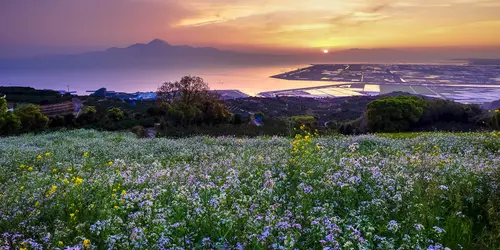
Japanese countryside on the island of Kyushu in Japan, near Kumamoto
©Pxfuel / DMCA
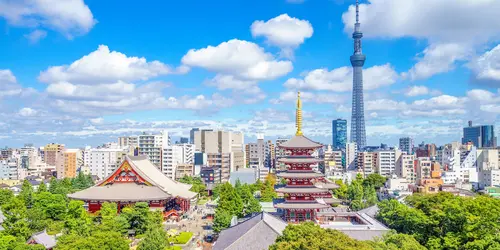
Asakusa: the Senso-ji temple and the Tokyo Sky Tree: a fascinating Tokyo district that's a must-see
chan Richie/123RF

Twin room at the equivalent 4* Metropolitan Ikebukuro hotel in Tokyo
metropolitan Ikebukuro
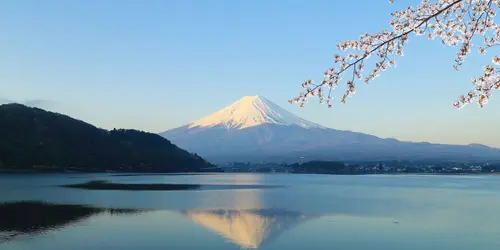
Mount Fuji during cherry blossom (Sakura)
©geargodz/123RF
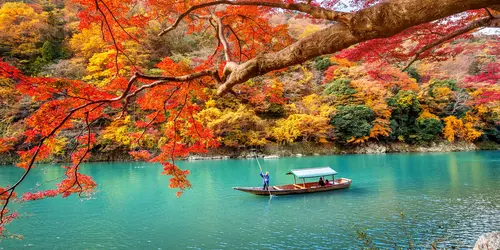
River in Arashiyama during fall : famous touristic site to visit in Kyoto
©Tawatchai Prakobkit/123RF
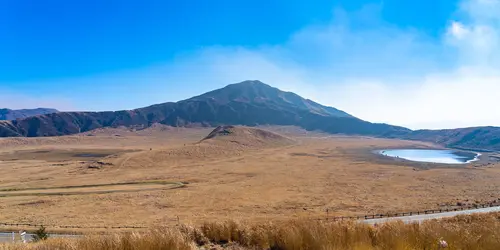
Mount Aso on the island of Kyushu is the largest of Japan's volcanoes, but also one of the most active.
©shawnccf/123RF
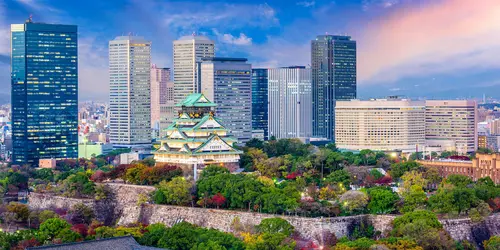
Osaka Castle in Japan is surrounded by the skyscrapers of the city's central business district
©Sean Pavone/123RF

Some of the hotels on the tour offer rooms with a fusion of Western and traditional Japanese styles
- Travel insurance
- JAPAN EXPERIENCE

Urban and Rural Japan
- Duration : 21 days
- Locations : Tokyo, Hakone Mt Fuji, Kyoto, Nara, Naoshima, Osaka, Kobe, Takachiho, Kumamoto, Nagasaki, Hiroshima, Miyajima
- Add to favorites
This 3 week, comprehensive guided tour will take you on a journey through a Japan of contrasts, both historical and rural.
After Tokyo, Kyoto, Mount Fuji and Koyasan, take a boat trip to discover the Japanese countryside on Kyushu. Finish off with the sacred island of Miyajima.
Small group of 8 people, accompanied by an English-speaking guide and specialist. An unforgettable trip.
3 week itinerary in Japan (21 days) :
- Tokyo (4 days)
- Hakone - Mount Fuji (1 day)
- Kyoto (5 days)
- Nara (1 day)
- Sacred valley of Koyasan (1 day)
- Osaka & Kobe (2 days)
- Bateau Osaka/Kobe -> Kyushu (1 night)
- Kyushu ( Takachiho, Kumamoto, Nagasaki (4 days)
- Hiroshima & Miyajima (2 days)
- Osaka (1 day)
Please find below the itinerary details.
WARNING : The tour departure and end dates presented on this page relate to your stay in Japan. On departure, you will have to leave Europe on the day before. The return flight is on the same day due to the time difference. For further details, refer to "More about your trip".
Why this trip to Japan
- Supervision by a bilingual English-speaking guide, a specialist in Japanese culture
- Almost full package : guide, accommodation, transport and most meals
- Small groups of between 6 and 8 people maximum.
- A visit to the must-sees on a first trip to Japan, and the little-known Kyushu Island.
- 3 and 4* hotels , 4 nights in traditional accommodation (ryokans, temple) and 1 night on a boat
- Variety of visits, activities, gastronomy and transport (Shinkansen, mini-bus, boat...)
- Three free days in Tokyo, Kyoto and Nagasaki can be organized
- 40 years of expertise from Japan Experience , European leading travel agency in Japan
Your trip in detail
Day 1 : sunday - yokoso - welcome.
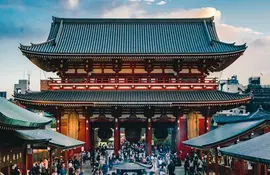
Senso-ji temple in Asakusa, Tokyo
©Moiz K. Malik/Unsplash
Arrival at Tokyo airport (Narita or Haneda). Welcome to Japan! Yokoso 日本へようこそ!
Welcomed out of customs by our airport assistant. Unaccompanied transfer from the airport to Tokyo (see details).
This transfer is done in a shared shuttle or bus, with other guests departing for the same hotel or a hotel close to yours. These transfers depart between 1.5 and 3 hours after your scheduled flight arrival and stops can be made before your hotel.
If you would like a private, non-stop transfer directly after the actual arrival of your flight, feel free to take the "Private Taxi from the Airport" option.
Accommodation at Hotel Metropolitan Ikebukuro or an equivalent 4* (rooms available from 3:00pm).
Welcome by the guide at 7:00pm. Introduction of the tour by the guide during a welcome dinner.
Dinner provided by Japan Experience.
Day 2 : Monday - Traditional and Modern
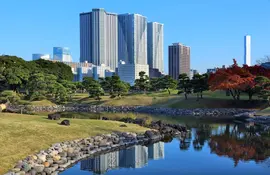
Hamarikyu gardens : One of Tokyo must see
©tupungato/123RF
Breakfast at the hotel.
Departure around 8:30 am, guided tour of Tokyo : - Ginza , Tokyo's chic district - Hamarikyu, the Japanese garden amongst Tokyo's buildings - Asakusa , a traditional district and place of pilgrimage - Sensô-ji Buddhist temple, one of the city's oldest - Tokyo Sky Tree and its panoramic view of Tokyo, reaching a height of 643m.
Meals (lunch, dinner), provided by Japan Experience.
Transportation for the day on public transport, and on foot (about 8 km in total).
Day 3 : Tuesday - The effervescent metropolis
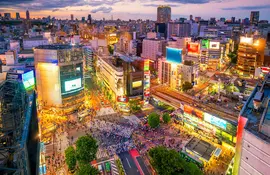
Tokyo's famous Shibuya intersection - probably the world's largest crosswalk
©Wasin Pummarin/123RF
Continue to visit Tokyo with your tour guide - Visit to Ueno district : The park full of cherry trees and the lotus pond Shinobazu ; - The trendy district of Harajuku ; - The imperial Meiji Jingû yemple ; - The young and crazy Takeshita-Dori alley ; - The Japanese "Champs-Elysées": Ometesando, fashion capital ; - Shibuya and its famous “crossing”.
Day trips by public transport and on foot (about 10 km in total).
Day 4 : Wednesday - Free day
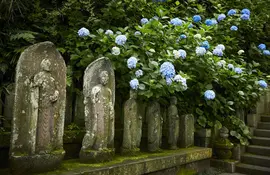
The Hasedera temple, in Kamakura: flower garden, sea view or even an eleven-headed statue!
Free day , which you can spend seeing many other monuments and interesting sites of the capital and its surroundings: your guide will be able to advise you.
breakfast at the hotel is provided by Japan Experience . The other meals, transport and visits are your choice.
Day 5 : Thursday - On the road to Mount Fuji
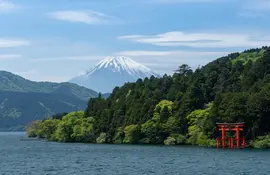
Mount Fuji from Hakone lake
©Alessandro Pacilio/123RF
Baggage transfer to Kyoto organised by Japan Experience (1 bag per person). Take a small bag for the night in Hakone - Mount Fuji.
Travel by train and Shinkansen to your hotel in the centre of Hakone - Mount Fuji (around 1 and a half hours).
Depart by minibus to the heights of Hakone for a breath-taking view of Mount Fuji (If weather conditions allow it) - Promenade along the old Tokaido road which linked Tokyo to Kyoto ; - Lake Ashi-no-ko and its Japanese portico torii with feet in the water ; - The incredible volcanic site of Owakudani (The sight can be inaccessible due to volcanic activity).
Stay in your ryokan (traditional Japanese hotel).
Daily trips by train, minibus and on foot (about 2 km in total).
Day 6 : Friday - From Mount Fuji to the former capital
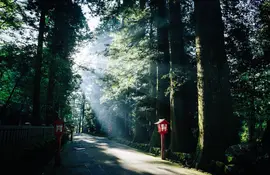
Komorebi on old Tokaido road in Hakone : the scattered light when sunlight shines through trees
©Syukei Inoue/Unsplash
Traditional Japanese breakfast at Ryokan (quite salty).
Depart on foot and public transport to open air sculpture museum in Hakone .
At the end of the morning, leave for Kyoto by Shinkansen (2 hours).
Check-in at General Kyoto Takatsuji Tominokoji hotel or similar.
Day trips by public transport, ultra-fast Shinkansen train, and on foot (about 5 km).
Day 7 : Saturday - Millennium treasures
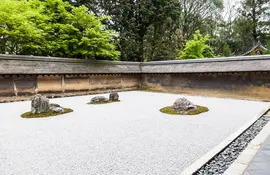
Visit Ryoan-ji, Kyoto, the most famous rock and zen garden in Japan
©Philippe Voisin
Visit Kyoto by minibus : - Ryoan-ji zen garden ; - Kinkaku-ji ( Gold Pavilion ) and Ginkaku-ji ( Silver Pavilion ), the bewitching path of philosophy ; - The charming village of Ohara, in the suburbs of Kyoto : the Sanzen'in green temple and visit the surrounding Japanese countryside (rice field, Japanese vegetable fields: tsukemono, shiso, etc.).
Day trip by minibus.
Day 8 : Sunday - Free day
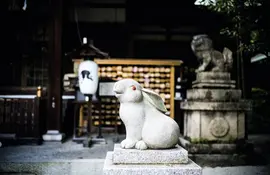
Okazaki Shrine in Kyoto
Free day : enjoy the former capital’s incredible sights at your own pace. Your guide will be able to advise you.
Please note only breakfast at the hotel is provided by Japan Experience . The other meals, transport and visits are your choice.
Day 9 : Monday - Castle and traditions
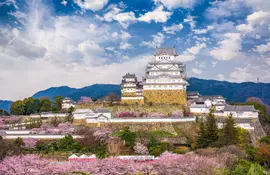
Himeji Castle, UNESCO world heritage, easy access from Kyoto for a 1-day excursion
- Excursion by Shinkansen (50 minutes) to Himeji castle (UNESCO heritage sight) ; - Lunch at Himeji and return to Kyoto by Shinkansen ; - Visit the fabulous sanctuary of Fushimi Inari with 10,000 torii; - Evening stroll in the Pontocho district.
Meals (lunch, dinner), provided by Japan Experience.
Day trips by Shinkansen, taxi and on foot (around 7 km in total including ascent and descent of Fushimi Inari).
Day 10 : Tuesday - Country Escape
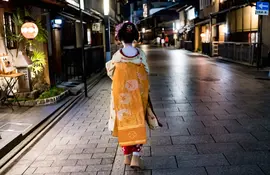
A geisha walking in Gion, Kyoto old town
- Depart by minibus for Miho Museum* built on the top of a mountain by the architect I. M. Pei. (Famous for his design of the Louvre Pyramid) ; - Excursion off the beaten track , in the Kyoto countryside , to discover the fields and tea producer ; - Evening walk through the picturesque Sannen-zaka & Ninnen-zaka streets of the Gion district.
We must draw your attention to the fact that it is strictly forbidden to take photos in the historic district of Gion.
Daily trips by minibus and by foot in the evening (around 3km).
*On certain dates, not currently defined, the Miho Museum will be temporarily closed to renew their collections.
Day 11 : Wednesday - The first capital
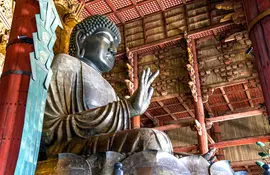
Todai-ji temple and its imposing statue of the buddha : a must-see in Nara
©Surachet Shotivaranon/123RF
Breakfast at the hotel in Kyoto.
Baggage transfer to Osaka organised by Japan Experience (1 bag per person). Take a small bag for your two nights in Nara and Koyasan : Train journey to Nara (50 minutes).
Visit Nara , the first Japanese capital in the 8th century. - The Shinto Kasuga Taisha temple and its thousands of lanterns; - The Todaiji , its large bronze Buddha and the imposing Nan-Daimon gate; - The Kofukuji temple and its lovely pagoda.
Meals (lunch, dinner) provided by Japan Experience.
Check-in at the Daiwa Roynet Nara hotel or similar.
Day trips by train and on foot (about 4 km in total).
Day 12 : Thursday - Attack on the Sacred Mount
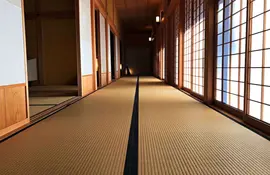
Shukubo - Hotel temple in Japan
©SOE AUNG LIN/123RF
Depart on train and cable car to the sacred mountain of Koyasan (2h30). - Visit the sumptuous Kongobuji temple; - Visit Danjo-Garan , one of the main religious sites of the village.
Day trips by train and on foot (about 3 km in total).
Enjoy a unique experience with a traditional vegan dinner and overnight in a temple with the monks. Due to the altitude, the temperature in Koyasan is often lower than other cities visited previously.
Please note: In most temple hotels, bathrooms and toilets are shared, apart from the traditional Japanese room. However, we have selected the few temples that offer a toilet and washbasin in the room. In very high season, these rare temples may be full and we may be obliged to book 'classic' rooms without a bathroom or washbasin.
Day 13 : Friday - the gastronomic capital
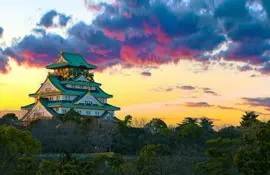
Osaka castle is surrounded by a park full of cherry and plum trees
©Josemaria Toscano/123RF
Traditional vegan breakfast served in the temple. Depending on availability of the monks, possibility to attend a Buddhist ceremony (availability not guaranteed currently).
- In the morning, discover the fabulous mystical necropolis of Okunoin .
- Head to Osaka by train (2 hours), afternoon shopping, and night tour of the city : the lively district of Namba and Dotonbori street.
Day 14 : Saturday - Take off
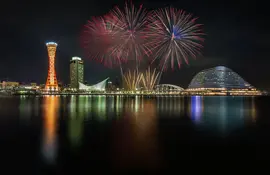
You can spend nice evening visiting Kobe city and port, close to Osaka and Kyoto by train
©pat138241/123RF
Breakfast at the hotel. Depart for Kobe , cosmopolitan city : - Sannomiya and Kitano districts ; - Visit the Hanshin earthquake museum , depending on the time left. Board the ferry and cruise overnight to the port of Oita on Kyushu island. Meals (lunch, dinner), provided by Japan Experience. The Sunflower company reserves the right to move the departure to Osaka, Japan Experience may have to modify the program for the day. The visit to Kobe can be replaced by this city: vintage Shinsekai district (Tsutenkaku tower) and Keitakuen garden. The ferry will arrive in Beppu in this case, the group will visit two of the most famous offshore lighthouses ( j igoku) there, before continuing on the normal route (Usuki). Day trips by minibus, on foot and ferry.
Day 15 : Sunday - Spiritual et natural
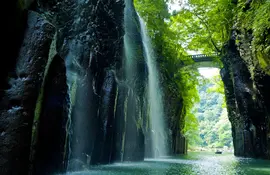
Takachiho Gorge, one of the hidden gems of Japanese nature
©Payless images/123RF
Breakfast aboard the ferry Route to Usuki : visit to stone Buddha sights. Route to the sacred Takachiho sight, mountain village known for its Japanese legends and magnificent ravines. Takachiho : - Gokase river gorges one of the most beautiful natural sites in Kyushu ; - Amanoiwato Jinja Shinto temple, Japan's second most sacred site ; - Evening show of sacred dances (divine gestures) Iwato Kagura.
Overnight stay at Solest Takachiho or equivalent . Meals (lunch, dinner), provided by Japan Experience. Day trips by minibus and by foot.
Day 16 : Monday - To Aso !
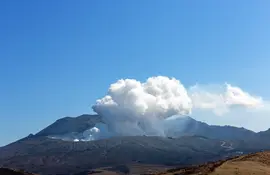
©danielvfung/123RF
Breakfast at the family-run hotel. Before going to Kumamoto , visit the famous Mount Aso on the road. It’s the largest volcano in Japan, and has an unmissable caldera and its volcano museum. In Kumamoto, the magnificent Suizen-ji garden.
Overnight at REF Hotel Kumamoto or equivalent . Meals (lunch, dinner), provided by Japan Experience. Day trips by minibus, public transport and by foot.
Day 17 : Tuesday - The Venice of Kyushu
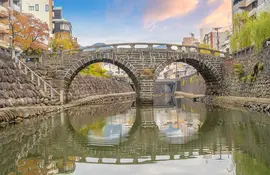
Nagasaki has always been Japan's gateway to the world
Breakfast at the hotel. Heading towards Shimabara , the setting of the heroic Shimabara Rebellion in the 17th century, followed by an exploration of Mount Unzen , an active volcano with fascinating geothermal wonders. Depart from Shimabara to Nagasaki via Okawachiyama, birthplace of pottery and ceramics. In Nagasaki, discover the Megane Bashi “glasses” bridge.
Accommodation at Richmond Hotel Nagasaki Shianbashi or equivalent . Meals (lunch, dinner), provided by Japan Experience. Daily trips by ferry, minibus, and on foot.
Day 18 : Wednesday - Free day
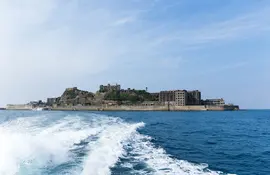
The ghost island of Gunkanjima, near Nagasaki. Former coal mine, it housed more than 5,300 workers
©Leung Cho Pan/123RF
Breakfast at the hotel. Free day* : enjoy the charms of the old port, gardens, churches and temples at your own pace. Your guide will be able to advise you. Please note: only breakfast at the hotel is provided by Japan Experience . The other meals, transport and visits are your choice and not organized by Japan Experience.
Day 19 : Thursday - A historic city

The sacred island of Miyajima and its famous torii with feet in water, worth a visit off Hiroshima in Japan
Breakfast at the hotel and baggage transfer to Osaka organised by Japan Experience (1 bag per person). Take a small bag for the night in Miyajima. In the morning, take the Shinkansen train to Hiroshima (3 hours) : The Peace Memorial Park and its museum (Hiroshima Peace Memorial Museum) ; The peace monuments (the dome , the memorial to the young Sadako Sasaki, one of the many victims of the radiation). Ferry to Miyajima , sacred Shinto island. Visit to Itsukushima-jinja sanctuary and its big entrance gate (ootorii)*.
Accommodation at ryokan or hotel. Meals (lunch, dinner), provided by Japan Experience. Daily trips by public transport, by shinkansen, by boat and on foot. Please note : the ootorii is under construction until an indefinite date.
Day 20 : Friday - The sacred island
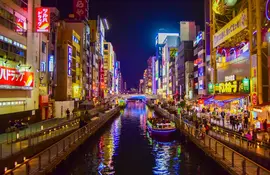
Dotonbori is one of the principal tourist destinations in Osaka, running along the canal in Namba.
©Juliana Barquero/123RF
Breakfast at Ryokan Visit to Miyajima : between temples and deer. - Folklore museum (Egami house) ; - Senjôkaku Shinto temple and pagoda ; - Shopping street for your final purchases. Depart for Osaka : ferry to Miyajimaguchi (Miyajima), train then Shinkansen (2 hours 50 minutes).
Accommodation at Hiyori Hotel Osaka Namba Ekimae or equivalent . Meals (lunch, dinner), provided by Japan Experience. Day trips by public transport, by Shinkansen, by boat and on foot.
Day 21 : Saturday - Sayonara - See you next time
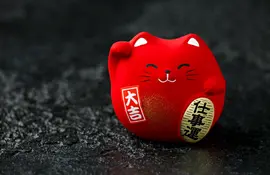
Sayonara - bye bye Japan !
©Maksims Grigorjevs/123RF
Transfer to Kansai International Airport (KIX) by direct train or shuttle bus, depending on the location of your hotel.
Transfer to Itami Airport (ITM) is not provided by Japan Experience. Meals not covered by Japan Experience. Return flight to Europe.
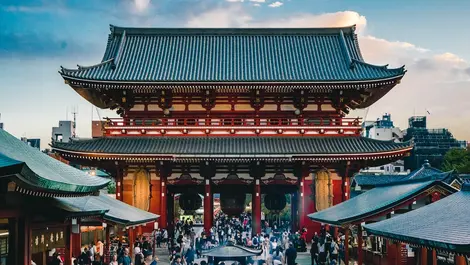
Included in your guided tour
Accommodation
- 15 nights in 4* and 3* hotels equivalent
- 2 nights in a ryokan at Hakone - Mount Fuji (room with private bath and toilet)
- 1 night in a Buddhist temple at Koyasan
- 1 night on the Sunflower ferry
The basic rate includes a twin room for two people.
- Transfer airport <> Tokyo
- Prepaid public transport card
- Other transport during your stay, except on free days
- Luggage transfer (see details of the stages)
Experiences and meals
- Guidance from an English-speaking specialist on Japan
- Tours and activities mentioned in the programme
- Almost full package : all meals (except free days and half of the dinners during the stay)
Additional services
- Unlimited Wi-Fi access, except on free days
- Power adapter for Japanese plugs (not for UK plugs)
- Complete travel diary sent 20 days before your departure
- An informative meeting 1 to 2 months before your departure, in our agency or at a distance
- 24/7 telephone assistance in English; in addition to the guide's assistance during the day
Not included in the price of your trip
- Flights Europe <> Japan
- Optional insurance policies
- Personal expenses (including 5 dinners at your leisure and expenses for the two free days)
- Drinks with meals (except water and sometimes tea)
- Anything not included in the "included in your tour" section
À propos du risque d’annulation de votre circuit accompagné
Même s’il y a très peu de risque que votre circuit accompagné soit annulé, ce risque existe. Il est habituellement de 4%.
Si vous êtes malheureusement dans ces 4%, vous êtes informé 3 à 2 mois avant et nous vous proposons TOUJOURS un autre circuit, à la même saison et la plupart du temps aux mêmes dates. Nous proposons également, en alternative, 100 % de remboursement du circuit (hors vols).
En 2023, sur 300 clients circuits accompagnés, 12 ont été ré-orientés sur un autre circuit et 0 sont restés chez eux.
More about your trip
Your tour :
- The tour guide can modify the programme according to the day's constraints.
- The prices displayed on this page may vary according to the exchange rate of the Japanese ¥.
- Unfortunately, this tour is not accessible to people with reduced mobility.
- Children and babies accepted. It should be noted, however, that the program may be difficult for these people to follow. From 3 to 11 years old a child rate is offered. In each accommodation, a standard adult bed will be offered to them, and a standard seat will be allocated to them in transport. From 0 to 2 years old inclusive, a "baby" rate is offered. This price corresponds to the allocation of a cot in the majority of the accommodation of the chosen tour. However, we cannot guarantee a baby cot in each accommodation.
- Pets are not allowed
- For vegetarians, vegans or people with a strict diet: there are few vegetarian or even fewer vegan restaurants in Japan. Therefore, and as it is a group trip, Japan Experience will not be able to adapt to the diet of each person. The guide will, however, be able to help within each restaurant in choosing the dishes that best suit each person.
- Your travel documents will be given to you as follows:
- Travel diary given during the information meeting 1 month before your departure. If you cannot make it to this meeting, it will be sent to your home 2 weeks before departure.
- The e-travel diary, as well as your e-documents of travel will be sent to you by email 3 weeks before departure.
- The airport transfer tickets will be given to you by our airport assistant on your arrival.
- The other physical documents necessary for the trip will be given to you by your tour leader when you meet at 6PM in your hotel on the first day.
- This programme is subject to change due to circumstances such as weather conditions or any other case of force majeure. The order of visits may also be modified. Please note that due to the current circumstances, any information mentioned is subject to change or modification.
Your accommodation :
- Double room : Rooms for two people in western hotels have 2 single beds (twin rooms) by default, which can usually be joined together.
- Single room : People travelling alone and wishing to book a single room must pay a supplement at the time of booking. This supplement can be waived, on request, if a twin room is shared with another participant. The single room supplement is compulsory for orders with an odd number of participants. Please note the size of the single room, between 15 and 20m2(161sq ft to 215sq ft).
- Traditional accommodation : in the ryokan at Hakone Mount Fuji, the room has a private bathroom (Western or Japanese) and toilet. At the same time, access to the ryokan's non-mixed collective Japanese baths ("onsen") is free, subject to the schedules in force on site. These baths are often not accessible to people with visible tattoos.
- In the Buddhist temple in Koyasan and the Takachiho hostel, the rooms do not have private sinks and toilets. The Japanese baths ("onsen") are shared bathrooms with showers, hot tubs, sinks and toilets. They are freely accessible, according to the schedule of the site (for the onsen only). The baths are often not accessible to people with visible tattoos.
- On the Sunflower ferry, the standard class cabins have a washbasin. There is a single communal toilet and bath on the upper deck. Rooms do not have windows.
- Names of the hotels : The names given on the site are for information only. In the event of unavailability, an establishment of equivalent standing will be scheduled. Hotels, corresponding to local standards, are given as an indication and may be changed on site for hotels of a similar category.
- Due to the very low number of hotel temples 4* in Koyasan, there is a possibility, depending on availability, that you will be accommodated in a 2/3* temple of equivalent comfort.
Your transports :
- Flights are not included in this tour. Do not hesitate to contact us if you would like to include flights in your order: Flights in economy class with stopovers or direct flights, eco-premium or business air upgrades, provincial departures or abroad: we will be able to advise you.
- The departure and end dates shown on this page are for your stay in Japan. You will arrive in Japan via Tokyo (Narita or Haneda airports) and will depart from Osaka (Kansai international airport KIX, not Itami ITM or Kobe). You will have to leave Europe the day before and land at 2:30pm at the latest to be present at your hotel at 6:00pm to meet your tour guide. However, the return flight is on the same day due to the time difference. Please do not hesitate to consult us for any uncertainty or need for precision in the choice of international flights.
- If the flights have been purchased by your care without the intervention of Japan Experience, it is necessary to send us by mail 1 month before your departure your flight information (flight number, airport, date and time of arrival) to allow us 'Organize your welcome and airport transfer.
- Airport Transfers: The shared limousine bus leaves from the airport and stops either in front of your hotel or at a stop within 1-15 minutes walk from your hotel. Our airport assistant in Tokyo will drive you to the platform to pick up the airport transfer. The transfer to the hotel is unassisted. If you wish to be accompanied from the airport to your hotel reception, please choose the option "Accompanied Airport Transfer". This transfer is done in a shared shuttle or bus, with other clients leaving for the same hotel or a hotel close to yours. These transfers leave between 1.5 and 3 hours after your flight's scheduled arrival and stops can be made before your hotel. If you would like a private, non-stop transfer directly after the actual arrival of your flight, feel free to take the "Private Taxi from the Airport" option. Please note: due to the many changes in flight schedules by the airlines, if the airline notifies you of a change in arrival time less than 72 hours before your departure, and if it exceeds 45 minutes, we cannot guarantee your airport shuttle. You will then have to take a taxi at your own expense, requesting a refund from your airline for abusive schedule changes. The same applies to your return journey: 72 hours before your return flight, we cannot change the shuttle schedule. Similarly, you will have to take a taxi booked with the hotel, at your own expense, with reimbursement procedures with the airline company being the only solution. Japan Experience is not responsible for last minute schedule changes.
- The public transport prepayment card must be returned to the guide at the end of your stay, except in the case of an individual post-extension organized by Japan Experience.
When you buy, Japan Experience offers you 2 types of protection:
Japan Experience Flex : Cancellation insurance before departure under conditions.
Japan Experience Protect : Pre-departure cancellation insurance under conditions and on-site assistance under conditions. COVID protection included.
Frequently asked questions
Do I need a visa? Do I need vaccinations?
As of October 11, 2022, Japan will open its borders to all Europeans (including the European Union, the United Kingdom and Switzerland) and North Americans (Canada and the United States) without requiring a visa.
Only non-triply vaccinated travelers need a negative PCR test performed within 72 hours prior to departure.
Do I still need a visa to travel to Japan as a tourist?
No, no visa is required for blue countries including all European countries (European Union, United Kingdom and Switzerland included) and North American countries (Canada and United States). List of blue countries: https://www.mofa.go.jp/j_info/visit/visa/short/novisa.html . If you have another nationality, please contact the Japanese embassy in your country of residence to obtain this visa.
Do I still need a PCR or antigen test to go to Japan?
No, if you are triple vaccinated with the vaccines approved by Japan (Pfizer, Moderna, ...exhaustive list here : https://www.mofa.go.jp/ca/fna/page24e_000317.html ) there is no need for any test.
I do not have 3 doses of vaccine or I am not vaccinated against COVID, can I enter Japan?
Proof of Covid vaccines is no longer required for travelers from "blue" countries. Therefore, unvaccinated travelers can enter Japan if they live in blue countries. But a negative PCR test is required at embarkation for travelers who are not vaccinated 3 times.
Is there still a quarantine upon arrival in Japan?
Quarantine and testing on arrival have been eliminated for travelers from blue countries.
Is insurance mandatory?
No, but it is recommended. Japan Experience, as an option of its tours, provides appropriate travel insurance solutions.
What anti-covid measures are still in place in Japan?
The mask must be worn indoors (except in exceptional cases) and in transportation.
What applications should I download before entering Japan?
For tracking the evolution of the coronavirus epidemic, the Japanese government recommends downloading several applications:
MySOS, the health and location tracking app (it will be used to confirm your location, health status and accommodation).
COCOA, the COVID-19 contact confirmation app (this will be used to notify you of possible contact with a COVID-19 positive person).
For more information, please visit: https://www.hco.mhlw.go.jp/manual/pdf-en/summary.pdf
How do I book a tour?
It's very simple and easy, just book directly online through our website: (1) Choose the tour of your choice, your departure date and indicate the number of participants. Several options are available to you. (2) Pay a deposit of 35% of the total amount* online and confirm your reservation. (3) You will then receive an e-mail confirming the conditions of your registration. (4) Book your flight ticket, either with Japan Experience or by yourself (taking into account the necessary schedules for your tour) (5) One month before departure, settle the balance of your booking. For more information on the tours or to make a reservation, please contact our advisors on +33 (0)1 42 61 60 83 or at [email protected] , or come and visit us at our agency in Paris. * travel insurance and options included
Guided or self-guided tour... what type of tour should you go for?
Whether you want to discover new things or discover yourself, stay in a fully organised tour or take a leisurely one: at Japan Experience, you will find a tour to suit your needs! Discover our 3 tour formulas now: guided, self-guided or personalised tour: Guided tours: Travelling with a specialist Would you like to travel with a small group of 8 to 12 people, accompanied by a private English-speaking guide? Classic destinations or off the beaten path, Japan Experience offers many guided tours, for all kinds of budget. Offering several departure dates throughout the year, these tours start at €2,890 per person. Self-guided tours: Independent travel These tours, with pre-planned itineraries, include accommodation, flights, transport, 24-hour assistance and optional guided activities. From €540 per person, plan your days as you wish, following the recommendations in your travel diary. Tailor-made tours: Travel according to your desires Design the trip you've always dreamed of! Our specialist advisors are available by email, telephone or directly in one of our agencies to answer all your questions and help you design your own customised tour.
Where should you start your tour in Japan? Where should you finish?
Most Japan Experience tours begin in Tokyo. This is because it is the gateway to both modern and traditional Japan. Tokyo allows a traveller to enter Japan step by step, whilst getting used to the time difference. Tokyo also has Japan's top two airports in terms of traffic. A few of our tours end in the Kansai region (Kyoto or Osaka). The return flight then goes from from Kansai International Airport (KIX), the 3rd largest airport in Japan, offering many possibilities for return flights to Europe without any real extra cost compared to a return flight from Tokyo. On these tours, the Japan Rail Pass does not cover the whole tour, allowing you to reduce the total price of the tour. And this without losing any transport possibilities as the Japan Rail Pass is of little use in Kansai. However, tours are available from Tokyo and sometimes other cities in Japan.
When is the best time to see the cherry blossoms? And the autumn leaves?
Recommended dates for seeing the spring flowers: - plum blossoms: mid-February to mid-March - cherry blossoms (sakura): between 20 March and 15 April (dates vary from year to year) - wisteria, iris, azaleas: mid-April to end of May - hydrangeas: June - lotus flowers: August Recommended dates outside of spring : - Autumn leaves: mid-November - Observation of Zen gardens under the snow: mid-December to mid-February
Do Japanese people speak English?
Few Japanese speak English, even in the tourism sector. With the exception of hotel staff in the major tourist cities, few Japanese are fluent in English. However, this does not prevent them from doing everything to help tourists in need. One or more guided activities are included in all Japan Experience tours. This will allow you to get a closer look at Japan's thousand-year-old culture. Feel free to add one or more optional guided days. Guided tours are led by bilingual Japanese guides, for total immersion without effort!
Our commitments as Japan Experience, Europe No. 1 travel in Japan
- The guarantee of the first tour operator specialised exclusively in Japan for 40 years
- A wide range of products to let you Experience Japan from the inside
- Competitive prices thanks to a single team in UK, Europe, USA and Japan, with no intermediaries
- Assistance available in Japan throughout your trip
- A specialised team is available 7 days a week by phone or email
- The best advice thanks to the 3,500 articles available on our website
Optional services
TOU-GGT-URJ-TOU-OPT-IN2-description
TOU-GGT-URJ-TOU-OPT-IN1-description
TOU-GGT-URJ-TOU-OPT-APT-description
TOU-GGT-URJ-TOU-OPT-NE1-description
TOU-GGT-URJ-TOU-OPT-1NE-description
TOU-GGT-URJ-TOU-OPT-PWI-description
Our other Guided tours
Discover other guided tours like « Urban and Rural Japan »
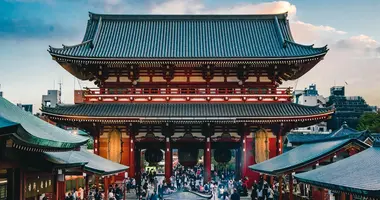
Japan In a Week Group Tours in Japan
- Duration : 9 days
- Locations : Tokyo, Hakone Mt Fuji, Kyoto
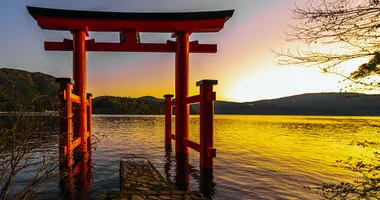
Discover Japan Group Tours in Japan
- Duration : 13 days
- Locations : Tokyo, Hakone Mt Fuji, Kyoto, Nara, Hiroshima, Miyajima
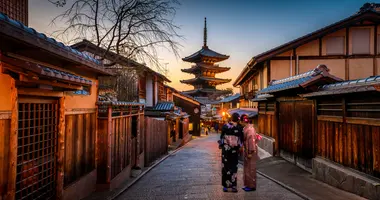
The Tokaido Road Group Tours in Japan
- Duration : 14 days
- Locations : Tokyo, Hakone Mt Fuji, Kyoto, Nara, Naoshima, Osaka
Our activities in Tokyo, Hakone, Kyoto, Nara, Naoshima, Osaka, Kobe, Takachiho, Kumamoto, Nagasaki, Miyajima
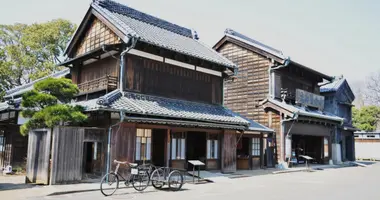
Edo-Tokyo Open Air Architectural Museum Activities in Tokyo
- Duration : 3 hour
- Location : Tokyo
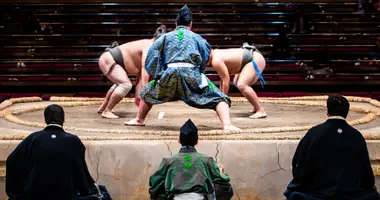
Tokyo Sumo Tournament (January, May and September) Activities in Tokyo
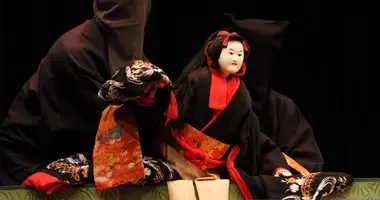
Bunraku, the traditional art of Japanese puppetry Activities in Osaka
- Duration : 2 hour
- Location : Osaka
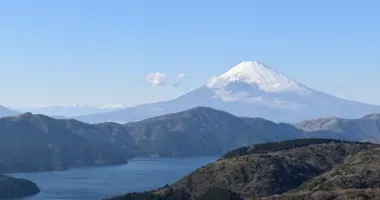
Hakone Discovery Hakone
- Duration : 8 hour
- Location : Odawara
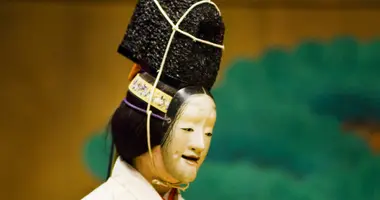
Noh, Ancient Japanese Theatre Activities in Tokyo

Tokyo Game Show Activities in Tokyo
- Duration : 5 hour
Please select your country on the list below:
- Switzerland
- United Kingdom
- Other countries
- Things to Do
- Nature & Scenery
15 Beautiful Japanese Villages You Absolutely Have to Visit

- James Davies
While major cities like Tokyo, Kyoto, and Osaka are world-famous Japanese tourist destinations, if you're seeking a little more tranquility on your travels, you might be better suited journeying to one of Japan’s countryside villages. Steeped in history and culture and often set amongst breathtaking natural scenery, Japan's most beautiful villages are a haven for those desiring a break from city life. Selected by the Association of the Most Beautiful Villages in Japan for their overall scenic qualities along with history, tradition, and culture, here are 15 of Japan's most beautiful villages!

This post may contain affiliate links. If you buy through them, we may earn a commission at no additional cost to you.
1. Biei (Hokkaido)
Just over two hours from Sapporo by train, Biei and the surrounding countryside are amongst some of the most beautiful spots in Hokkaido . Biei is famous for its colorful rolling hills and fields of pretty flower parks, all visible from a number of different vantage points. The natural beauty of the region has regularly attracted advertisers and has been featured as the backdrop for a number of television shows in Japan, with many trees becoming local landmarks in the process.
Two of Biei's most scenic areas are Patchwork Road and Panorama Road. As its name suggests, Patchwork Road is a beautiful mishmash of colorful fields and flower gardens to the northeast of Biei. It covers an area rather than just a single road, which is particularly breathtaking during the vibrant seasons of summer and autumn. Here you'll find some of Biei's famous trees, such as the Ken and Mary poplar tree, which was the star of a car commercial in the 1970s. The enchanting trees on nearby Mild Seven Hill and the Seven Stars tree got their names after being similarly used in marketing campaigns for cigarettes. You can enjoy mesmerizing views of Patchwork Road from Hokusei Hill Observatory, a pyramid-like viewing tower near the Ken and Mary tree. Nearby is Zerubu Hill, one of Biei's many beautiful flower gardens.
South of Patchwork Road is Panorama Road, which again covers a region rather than a road. Here you'll find one of Biei's most iconic sights in Shikisai Hill, the largest and most stunning flower park in the area. Shikisai Hill's neat sweeping fields are filled with a kaleidoscopic range of colorful flowers that change with each season. Walking routes around the flower park offer incredible views of the gardens which sit beneath a dramatic range of volcanic mountains. Another smaller flower park, Kanno Farm, lies a little further south towards the town of Furano and is also famous for its beautiful lavender fields during the summer. Meanwhile, a half-hour drive from the center of Biei is the Shirogane Blue Pond, a man-made pond with a brilliant blue hue sitting beside the Biei River created by a rare type of mineral-rich local water.
2. Tsurui (Hokkaido)
The tiny town of Tsurui is located in eastern Hokkaido, around a 40 min drive from the city of Kushiro. Tsurui sits on the edge of Kushiro Shitsugen National Park, Japan's largest marshland that hosts a vibrant ecosystem most commonly associated with the red-crowned crane. Thanks to a concerted conservation effort, a population of around 1,000 red-crowned cranes now live in the area all year round.
One of the world's rarest species of crane, the red-crowned crane is traditionally a symbol of good luck and longevity and is a huge draw for nature lovers and wildlife photographers. There are several scenic spots in and around Tsurui where cranes can be seen, including the Tsurui Ito Tancho Crane Sanctuary close to the center of town. Hundreds of red-crowned cranes gather here during the snowy winter months, where they can be seen dancing and leaping in unison as part of their mating ritual.
Tsurui is also a spectacular place to visit outside of winter, with the village's array of cherry blossoms bursting into color during spring. In the summer, much of the Kushiro marshland and surrounding countryside becomes awash with thick vibrant green, and deer and foxes are commonly spotted in the national park. Agriculture and dairy farming are the main industries in Tsurui, and in spring and summer the town is surrounded by green fields of grazing cows. After summer, Tsurui’s landscape changes again, transforming from lush green into several shades of autumn orange and red.
3. Higashinaruse (Akita)
Home to less than 3,000 people, the historic town of Higashinaruse is located in the south-eastern corner of Akita Prefecture. The tranquil town boasts a gorgeous rural landscape and is filled with rice fields and surrounded by forest-covered mountains. Over ninety percent of Higashinaruse's total area is forested and laced with crystal-clean rivers, streams, and lakes, many of which are popular fishing spots with anglers looking to catch local trout and char fish.
The town sits beneath the Kurikoma mountain range, which stretches across Akita and the neighboring prefectures of Iwate and Miyagi. Many natural springs flow through the town, and there are a number of “onsen” (hot spring) spa resorts dotted in and around the area. Magnificent waterfalls can also be found along walking trails in Higashirasune's forests, with the Fudo Waterfall, just on the edge of the town, and the 20m-tall Tensho Waterfall in the Iwaikawa Aigawa National Forest being two of the most impressive.
Higashinaruse enjoys four very distinct seasons, making the town a great place to visit any time of year. In spring and summer, the forests burst into life. By mid-summer, the landscape is a dense patchwork of beautiful, lush greens, and come autumn, much of the forest around Higashinaruse turns a spectacular palette of orange and red. One of the best places to admire Higashinaruse's gorgeous autumn colors is amongst the beech forest that circles Lake Sukawa.
Higashinaruse also enjoys heavy snowfall during winter, with the region often layered in at least two meters of snowfall each year. This makes Higashinaruse a popular skiing destination, with the Jeunesse Kurikoma ski resort enjoying particularly beautiful fresh powdered snow. At night, look to the sky for a spectacular view of the stars - in 1999, Hirashinaruse was granted the title of having the most beautiful starry sky in Japan.

4. Kitashiobara (Fukushima)
Another remote rural village, Kitashiobara is similarly located in the north of Fukushima Prefecture amongst lush forests and dynamic mountain ranges. Kitashiobara is just over an hour's drive from Koriyama, which can be reached via shinkansen on the Tohoku-Hokkaido line. Kitashiobara was originally formed through the merging of three smaller villages located on the edge of the Bandai Asahi National Park. Today, Kitashiobara is a popular resort town, particularly with skiers who come to hit the slopes during the snowy winter season.
Sat in the shadow of Mt. Bandai, Kitashiobara is hugely popular with hikers who can enjoy countless spectacular views from any number of the region's walking trails. The view from the summit of Mt. Bandai offers a sensational panorama of the area's natural beauty, including breathtaking views of Lake Inawashiro, just one of several spectacular lakes around Kitashiobara. There are also plenty of scenic hiking trails around the three lakes to the north of the town, Lake Onogawa, Lake Akimoto, and Lake Hibara. Meanwhile, the Goshikinuma Nature Trail is one not to be missed, passing alongside the spectacular acidic waters of the Goshikinuma Ponds . The water of each pond flaunts a spectacular color, from emerald green to various shades of gorgeous blues, and even red.
Besides nature, Kitashiobara is also a great place for art lovers, particularly fans of Salvador Dali. The Morohashi Museum of Modern Art houses the world's third-largest collection of Dali's artworks. Set in a palatial building close to Lake Akimoto, the Morohashi Museum's collection of western art also includes paintings by legends like Vincent Van Gogh, Pablo Picasso, and Henri Matisse.
5. Kiso (Nagano)
Roughly an hour from Matsumoto by train, the town of Kiso sits between the mountains of the Central Alps, with Mt. Ontake dominating the skyline to the west. Kiso is another former post town, located deep in the beautiful forests of the Kiso Valley along the historic Nakasendo highway, a 500 km route that connected Kyoto and Tokyo during the Edo period (1603 – 1868). Kiso, then known as Yabuhara-juku, was the 35th of the 69 stations along the Nakasendo.
Today, much of the former Nakasendo route forms several hiking and walking trails. One former section of the Nakasendo route, the Nakasendo Toriitouge Pass, is now a popular trekking spot. The route passes through a dense forest of Japanese horse chestnut trees and connects Yabuhara-juku to Narai-juku. Here you'll find a beautifully preserved section of the Nakasendo trail, lined with gorgeous traditional old wooden houses and shops.
Elsewhere, two walking paths lead through the Mizukizawa Natural Forest, passing huge ancient cypress trees, many of which are hundreds of years old. The mountains around Kiso also make the town a popular skiing spot in the winter. The Yabuhara Kogen Ski Resort has a range of slopes catering to all levels, from complete beginners to experienced pros.
6. Nagiso (Nagano)
Less than an hour south of Kiso and just over an hour north of Nagoya by train is the town of Nagiso. Nagiso is another picturesque former post town with many exquisitely preserved traditional Japanese homes that can be seen along the old Nakasendo road. Just like Kiso, Nagiso is similarly framed by mountains and dense forests with a wide range of hiking trails. One of the most beautiful forest walks in the area leads to the Tadachi Falls, the collective name for seven impressive waterfalls in the Otaki River Valley.
Nagiso is most famous as being the starting point for Tsumago, a charming post town marking the beginning of the trail to Magome on the old Nakasendo road. If you plan to hike the old Nakasendo trail to Magome in neighboring the Gifu Prefecture, it's around a two-hour walk from Tsumago. Both Tsumago and Magome have been perfectly preserved to look as they did during the Edo period. Tsumago's streets are particularly beautiful and have even been declared a Nationally Designated Architectural Preservation Site. Tsumago's traditional old houses, shops, restaurants, and temples evoke images of a bygone age. A particular highlight is the Waki-honjin, a former inn where the Meiji Emperor once stayed, now a museum. At the Nagiso Town Museum just next door you can admire the interior of a traditional Japanese home while learning more about life in the area during the Edo period.
Our Top Tips
JR Pass for Whole Japan
Explore Japan in the most convenient and economical way with a Japan Rail Pass! It is valid for the majority of railways and local buses operated by JR.
7. Hayakawa (Yamanashi)
The village of Hayakawa in Yamanashi Prefecture has the distinction of being the least populated town in Japan with only 1,050 residents as of 2019. Nestled deep beneath Japan's Southern Alps, Hayakawa is a substantial leap off the beaten track! While it'll take a couple of trains and a bus to reach the tiny town from the nearest city of Shizuoka, those willing to make the trip will be rewarded with a beautiful traditional old town set amongst some of Japan's most spectacular countryside. The area is particularly beautiful during the autumn when the forest leaves glow orange and red.
Hayakawa is most famous for the district of Akasawa, an area of traditional houses and historic inns and temples. Perfectly preserved, it looks as though little has changed in centuries. Akasawa was a common stopping point for pilgrims along the 36-kilometer trek to Mt. Shichimen from nearby Mt. Minobu. The pilgrimage takes several days to complete, and Akasawa became a popular place to rest en route.
Many hikers and devotees still trek the ancient pilgrimage between the two mountains. Several ancient and impressive temples dot the forests along the way, and there are spectacular views of the tip of Mt. Fuji from the summit of both mountains. A few of Akasawa's traditional inns still remain, with those staying overnight being able to bask in a stunning night sky filled with stars. Hayakawa is also home to the world's oldest hotel, Nishiyama Onsen, which was recognized by the Guinness Book of World Records as being over 1,300 years old, having first opened in 705.
8. Totsukawa (Nara)
Totsukawa in Nara Prefecture is another mountain town along a historic pilgrimage route. Though home to less than 4,000 people, the town covers a wide area of beautiful scenery and is Japan's largest village in terms of area. Located at the southern tip of Nara Prefecture, Totsukawa is set amongst a gorgeous landscape of hot springs, forests, mountains, rivers, and waterfalls. Like Hayakawa, Totsukawa is incredibly remote, and reaching the town without a car is fairly difficult. Public transport is limited to just a couple of bus routes from either Yamato Yagi Station or Shingu Station in neighboring Wakayama Prefecture.
Yet those that do make it to Totsukawa will be met with breathtaking and unspoiled scenery. Totsukawa is located on the ancient trails that form part of the historic Kumano Kodo pilgrimage route, and pilgrims have passed by here for over 1,000 years. Totsukawa's Tamaki Shrine at the top of Mt. Tamaki is a sacred part of the route and has been granted UNESCO World Heritage status as one of the Sacred Sites and Pilgrimage Routes in the Kii Mountain Range. Alongside spectacular views, the atmospheric Tamaki Shrine is also surrounded by a number of stunning cedar trees, some of which are over 3,000 years old.
Amongst Totsukawa's famous sights is the Tanize Suspension Bridge, which stretches over 270 m across and 16 m above the Totsukawa River. From the swaying bridge, there are incredible views of the river and the valleys. You'll also find spectacular scenes of the valley and the bridge from the Moriyama Observation Deck, which can be reached via a steep hike behind the Takeharahachiman Shrine on the north side of the river. Elsewhere, the 32 m Sasanotaki Waterfall is recognized as one of Japan's 100 Best Waterfalls, which is set amongst a bamboo forest just off the Taki River. Totsukawa's waters are also famous for their hot springs and Tosenji Onsen, recognized as one of the 100 Best Hot Springs in Japan.
9. Yoshino (Nara)
In the heart of Nara Prefecture is the scenic historical town of Yoshino. By far the biggest draw here are the cherry blossom trees of Mt. Yoshino. Covered with over 30,000 cherry blossom trees, Mt. Yoshino is one of the most famous and popular cherry blossom viewing locations in Japan. A UNESCO World Heritage Site since 2004, around 8 km of roads and paths leading to the top of Mt. Yoshino are surrounded by thousands of cherry trees that bloom each April. However, Mt. Yoshino is not only a springtime destination – autumn turns much of the forest into a spectacular shade of orange and red while summer sees hydrangeas in full bloom.
There are several parks and observation points to witness breathtaking views of Mt. Yoshino's cherry trees and other scenery. Also en route are shops selling souvenirs and local snacks, restaurants, hotels, and ancient temples and shrines. Mt. Yoshino has been part of the pilgrimage route to Mt. Omine for several centuries and the historic Yoshimizu Shrine is an important landmark. Dating back from the 8th century, the temple briefly became the seat of the Japanese Emperor in the 14th century. Now housing a collection of important historical artifacts, Yoshimizu Shrine is now beloved for its sensational views of the mountain's cherry trees.
10. Ine (Kyoto)
Located on the coast in far north Kyoto Prefecture, the town of Ine is a fishing port with a long, fascinating history. About an hour from Amanohashidate by bus, Ine is set on a beautiful bay overlooking the Sea of Japan and is most famous for its traditional distinctive boat houses. Called "funaya," Ine boat houses line the water's edge all around Ine Bay. Mostly made from wood, these traditional fishermen's houses are raised over the water to allow boats to be moored underneath. The living quarters of the house are on the upper floor above the water. There are over 200 traditional funaya houses still standing in Ine, the best views of which are from the water on a boat tour from Ine Bay or from Amanohashidate.
Though the funaya are fascinating to see, Ine is still a working port and fishing remains the town's main industry. Other highlights include the Mukai Sake Brewery, which is close to the center of town and has been brewing sake since 1754. The brewery is known for its unique red sake, Ine Mankai, which is made from red rice and was served to world leaders during the G20 Summit in Osaka in 2019.
11. Kamikatsu (Tokushima)
Kamikatsu is another picturesque mountain town located on the island of Shikoku across the Seto Inland Sea. Though called a town, Kamikatsu is effectively the name given to a community of around fifty neighboring settlements spread across the region. These settlements are dotted all over the mountains at various altitudes between 100 - 700 m. The mountains are just a part of Kamikatsu's idyllic scenery.
The town is most famous for its countless picturesque terraced rice fields that stretch out in front of a backdrop of mountain peaks. A long and winding mountain road leads up to the Kashihara Rice Terraces which offers one of the best views over Kamikatsu's paddy fields, which have been declared one of the 100 Best Terraced Fields in Japan. The mountains of Kamikatsu are also blessed with a number of superb waterfalls, most notably the Kanjoga and Onbuchi waterfalls in the far northeast of town.
Perhaps the last thing you'd expect to find in the tiny town of Kamikatsu is an American brewery, yet this is where the craft beer brewery Rise and Win is based. A variety of beers are brewed here, including an IPA, a stout, and a white beer made from local yuko fruits, a citrus fruit similar to an orange that is native to Japan. All of the beers brewed here supply the Rise and Win’s own taproom in Tokyo and can be sampled in Kamikatsu in the brewery's onsite bar.
12. Kamijima (Ehime)
The village of Kamijima is spread across 25 islands in the Seto Inland Sea in Ehime Prefecture. The islands of Kamijima lie within the Setonaikai National Park, Japan's largest national park that encompasses over 9,000 km² of land and water around the Seto Inland Sea. Only seven of the islands are inhabited and only a handful of those are currently connected. The main islands of Yuge, Sashima, and Ikina are linked by bridge with the other four inhabited islands reachable by ferry. There are sublime views of the islands and sea to be found all around the coastlines of Kamijima. Cycling and hiking are popular activities, with the views from the Kushiyama Observation Deck well worth biking or trekking for.
The islands are noted for their cherry blossom trees that bloom in the spring, particularly around Mt. Sekizen on Iwagi island. The main island of Yuge is also a popular summer destination thanks to the beautiful golden sands of Matsubara Beach on its east coast. Ikina Island has a good selection of places to eat and local shops and is the easiest of Kamijima's islands to reach. A new bridge connecting Ikina Island to Iwagi Island is due to open in 2022.
Kamijima's smaller and more remote islands have plenty to see too. Uoshima is around a 50-minute ferry ride from Yuge and is famous for octopus fishing. Takaikami Island, home to a population of only 15 people, has become famous for the big and bold manga murals that cover the buildings in the island's harbor. The uninhabited Teshima Island features an unusual art installation by the German Gerhard Richter called “14 Panes of Glass for Toyoshima."
13. Minamioguni (Kumamoto)
Minamioguni is located in the north of Kumamoto Prefecture at the foot of Mt. Aso. The historic heart of the village is centered around the Tanoharu River, just one of several rivers that wind through the town. Here, Minamioguni's old streets are lined with traditional Japanese shops and restaurants. On all sides of the Marurin Bridge are several onsen, taking advantage of the natural waters that flow from the surrounding mountains.
Minamioguni's rivers also feature a number of beautiful waterfalls that can be found throughout the town's forests. Amongst the most picturesque are the two falls that flow side by side where two rivers meet. Called “Meotodaki,” or “husband and wife falls,” the two waterfalls are where the Tanoharu and Oda rivers meet and become the Tsuetate River.
Around the Manganji River are several more sights to see. Amongst them is Konpira-sugi, a 1,000-year-old cedar tree that is over 12m in circumference. The monolithic tree has twice been struck by lightning and the burn marks from the last strike are still visible. Declared a Nationally Designated Natural Monument, Minamioguni's Konpira-sugi tree is still going strong despite its advancing years. Nearby, the beautiful Manganji Temple that dates from the 13th century and the neighboring garden is also well worth exploring. Further along the Manganji River, the public Kawayu Onsen might be a little too public for some. Recently voted Japan's most embarrassing public bath, the onsen is in the heart of the river right next to the passing road, meaning bathers have to run the risk of baring all to anyone who passes by.
Surrounding the old town are several plateaus with observation decks from where you can admire Minamioguni's beautiful landscape and the many surrounding mountain ranges. A hike to see the incredible panoramic views from the Hiranodai Kogen Observatory is well worth making the effort for. Similarly, beautiful views can be enjoyed at Oshido Stone hill in the south of the village, famous for the collection of ancient and mysterious megaliths that were believed to have been placed here around 4,000 years ago.
Japan Shinkansen, Narita Express (N'EX) & Express Train Tickets
Plan ahead by booking your shinkansen, airport train, and express train tickets online in English. Have the tickets sent to you by mail or collect them at the station once you're in Japan.
14. Shiiba (Miyazaki)
Shiiba is another beautiful town surrounded by some of the most breathtaking and unspoiled natural scenery in Japan. Nestled at the foot of the Kyushu Mountains, the town is located far off the beaten track and is a popular place to hike. Shiiba is also rich in cultural heritage and there are several buildings and landmarks that have been recognized for their historical significance. Amongst them are the ancient farming houses found in the tiny mountainside hamlet of Tonegawa. Built with a unique architectural style that works in harmony with the mountainous terrain, the houses of Tonegawa have been protected as an Important Preservation District for Groups of Traditional Buildings.
A large part of Shiiba's cultural history revolves around battles fought between two samurai clans in the 12th century. In 1191, samurai from the Heike Clan retreated to Shiiba after they were defeated by the Genji Clan. A warrior from the Genji Clan, Nasu Daihachiro, was sent to Shiiba to destroy what remained of the Heike Clan. Instead, he fell in love with Tsurutomi, a Heike princess, in a story of doomed love reminiscent of Romeo and Juliet. The couple stayed together for several years and had a daughter together before they were eventually forced to separate by the Shogun.
In the center of Shiiba stands Tsurutomiyashiki, which was once Nasu Daihachiro and Tsurutomi's home. The current building is a model based on the original and was reconstructed around 300 years ago. Built in an architectural style unique to Shiiba, Tsurutomiyashiki was designated as an Important Cultural Property of Japan in 1956. Nearby is Shiiba Itsukushima Shrine, which is believed to have been built by Daihachiro Nasu in honor of the defeated Heike Clan and still stands over the town today. An enormous cedar tree, the second tallest in Japan, said to have been planted by Nasu Daihachiro at the Tonegawa Shrine was designated as a National Natural Monument in 1935.
The tale of Daihachiro Nasu and Tsurutomi is celebrated in the town every year during the 3-day Heike Festival, where the town's men and boys wear traditional samurai outfits and the women and girls dress as princesses. Shiiba is well-known as a town of performance art, with traditional "kagura" folk songs and dances also taking place each year. You can learn more about Shiiba's folk art traditions and the legacy of Dihachiro Nasu and Tsurutomi at the Shiiba Folk Art Museum, which explores the town's rituals, culture, and customs in depth.
15. Kikai (Kagoshima)
Kikai is located on the small island of Kikaijima in Kagoshima Prefecture. Part of the Amami Islands and closer to Okinawa than mainland Kagoshima, Kikaijima has a circumference of fewer than 50 km. Kikai is relatively flat with no mountains or particularly steep hills, which makes it a great place to explore on foot or by bike. Kikai's subtropical climate is most famous for the production of sugar cane grown in fields throughout the island. Huge banyan trees and a variety of citrus fruits are also found on the island, as are a diverse range of colorful tropical butterflies. Kikaijima is a coral island, which are common in tropical seas, and is thought to be rising at a speed of around 2mm a year.
There are excellent views of the sea and the nearby fields from Hyakunodai Park, the highest point on the island, at just over 200 m above sea level. All around the coast are a plethora of places to see Kikaijima's uplifted coral. Cape Tonbi and the Araki Nakazato Promenade are two of the best spots to witness Kakaijima's geologic origins up close.
The village of Aden is home to one of Kikai's most famous sights, the old lanes and streets lined with thick, high walls traditionally made from coral fossils. The walls were built to protect the area's houses, and especially their thatched roofs, from the harsh winds and storms that hit the island during typhoon season. If you're keen to see the beautiful coral reefs that live under the sea, you can either scuba dive or snorkel in the gorgeous clear tropical waters off the island, with Hawaii Beach on Cape Tonbi a particular highlight. Meanwhile, from December to April you can spot migrating whales in the sea off the coast near the Araki-Nakazato Promenade.
There’s So Much to See and Explore in Japan’s Most Beautiful Villages
As you can see, Japan is blessed with an almost endless array of beautiful villages that can be found right across the country. If you're looking for idyllic rural towns off the beaten path, isolated and snowy winter escapes, or somewhere to relax by the sea away from it all, why not plan a trip to one of the gorgeous towns and villages on our list! If you’d like to explore the full list of Japan’s most beautiful villages, you can find them all on the Association of the Most Beautiful Villages of Japan’s website .
Title image credit: gandhi / PIXTA
If you want to give feedback on any of our articles, you have an idea that you'd really like to see come to life, or you just have a question on Japan, hit us up on our Facebook , Twitter , or Instagram !
Thumbnail: Sakarin Sawasdinaka / Shutterstock.com
The information in this article is accurate at the time of publication.
tsunagu Japan Newsletter
Subscribe to our free newsletter and we'll show you the best Japan has to offer!

About the author
Related Articles
Related interests.
- Power spots
- Beaches & seas
Restaurant Search
Subscribe to the tsunagu Japan Newsletter
Sign up to our free newsletter to discover the best Japan has to offer.
Connect with Japan through tsunagu Japan
Let us introduce you to the best of Japan through our free newsletter: sightseeing spots, delicious food, deep culture, best places to stay, and more!

Japan’s Countryside Wonders: 10 Must-Visit Rural Spots in Japan
Japan, with its seamless fusion of old and new , is world-renowned for its bustling metropolises like Tokyo and Osaka . These iconic cities, adorned with towering skyscrapers and glowing neon lights, represent the country’s rapid technological advancements and the relentless pace of urban life. Yet, beyond the concrete jungles , there exists another side to Japan—one that offers a completely different experience. The Japanese countryside , steeped in tradition, history, and natural beauty, is a serene escape where travelers can form a profound connection with both the land and its people.
This rural realm, shaped by ancient rituals and centuries-old architecture , moves to the natural rhythm of the seasons. For anyone looking to uncover the true essence of Japan, venturing beyond the urban centers is essential. It is here, along less-trodden paths , that the very soul of Japan reveals itself.
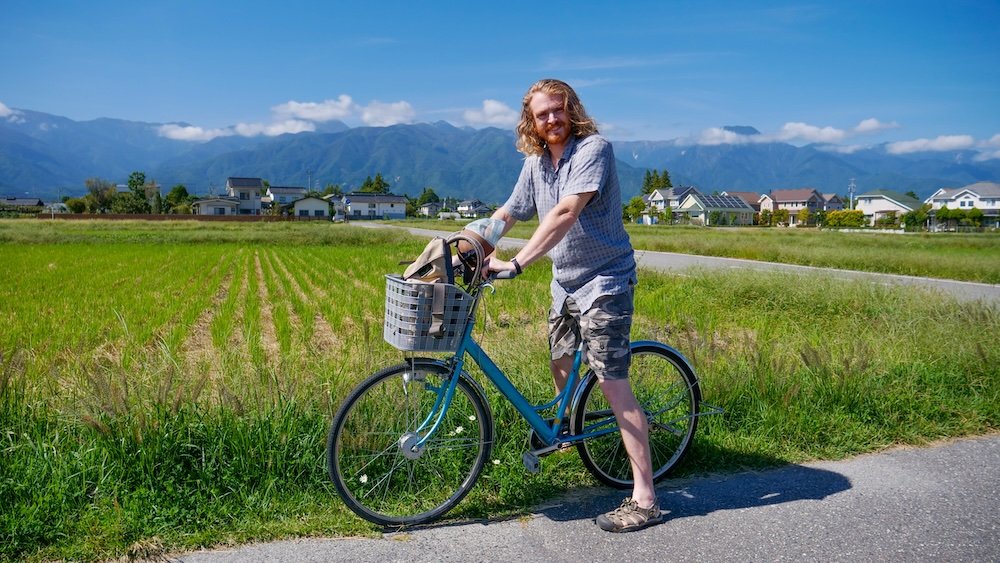
The Allure of Japan’s Rural Beauty
Away from the hustle and bustle of Japan’s cities lies a landscape defined by expansive rice fields , dotted with small villages seemingly untouched by time. The air is cleaner, the pace of life is slower, and the landscapes are refreshingly organic. Misty mountains , serene lakes , and babbling brooks paint a picture of tranquility that feels worlds away from the chaos of the city. The charm of rural Japan is further enhanced by the presence of old wooden houses , Shinto shrines , and local farmers tending to their crops—a testament to the deep connection the Japanese have with nature.
The countryside isn’t just visually stunning—it offers a multisensory experience . From the distant ringing of a temple bell to the fragrance of freshly brewed green tea , the taste of seasonal fruits plucked straight from the tree, and the tactile joy of handling handmade artisanal crafts , every sense is engaged in this journey of discovery.
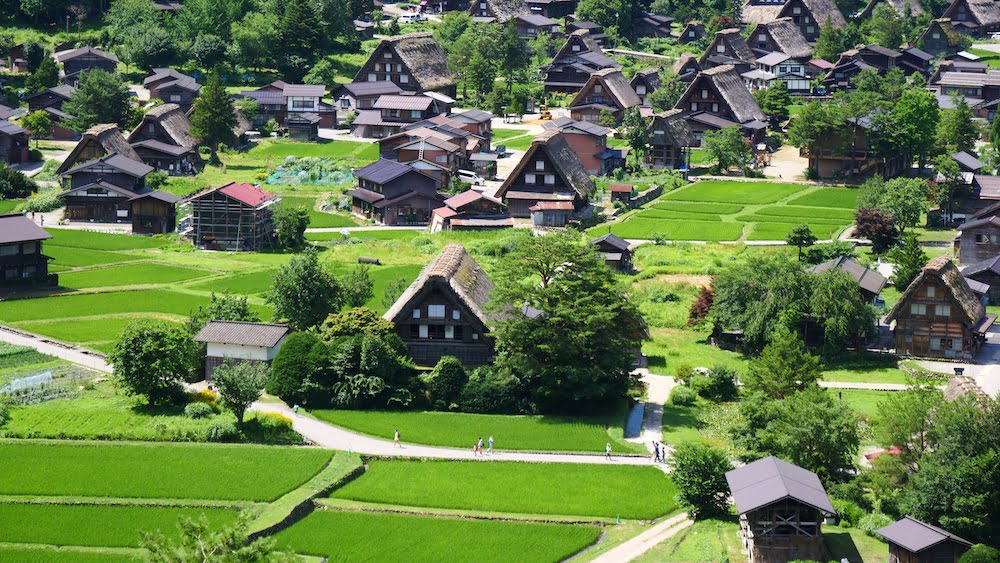
Venturing Beyond the Urban Sprawl
Visiting Japan’s rural areas is like flipping through the pages of an ancient history book . Every village, temple, and even rice field tells a story of the generations that have thrived there. These tales speak of resilience , harmony , and the uniquely Japanese philosophy of wabi-sabi —finding beauty in imperfection and the transient nature of life. By moving beyond the urban sprawl, travelers can experience authentic Japan , learning about the cultural practices, beliefs, and traditions that often get overshadowed by the bright lights of the cities .
Moreover, exploring rural Japan isn’t just an enriching experience for the traveler—it’s also a way to foster sustainable tourism . Many rural areas are experiencing a population decline as younger generations migrate to cities, leaving behind aging communities and, in some cases, abandoned villages . Tourism can play a crucial role in revitalizing these regions, bringing economic support and helping to preserve the rich cultural heritage of these rural communities for future generations.
As we unveil 10 must-visit rural spots in Japan, get ready for an adventure that promises breathtaking landscapes , soulful encounters , and memories that will last a lifetime. This journey into Japan’s countryside offers not just picturesque views, but a chance to rediscover the joy of simplicity , the beauty of nature , and the timeless wisdom embedded in Japanese culture .
The Allure of Rural Japan
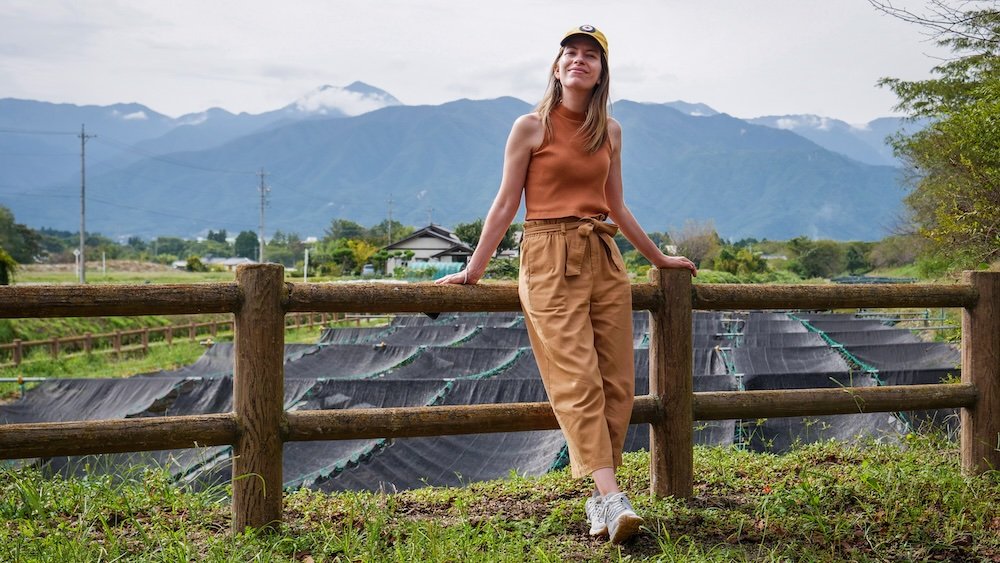
Historical Significance
A deep dive into the Japanese countryside is akin to traveling back in time. The historical significance of these regions is palpable, with every structure, every path, and every tree echoing tales from the past.
- Samurai and Feudal Villages: Rural areas like the town of Hagi in Yamaguchi Prefecture or the little village of Tsuwano in Shimane are reminiscent of old samurai towns. With well-preserved samurai residences, old streets lined with white-walled buildings, and traditional establishments, these regions offer a peek into Japan’s feudal era. The very stones of the streets seem to whisper the valorous tales of samurai who once walked on them.
- Ancient Pilgrimage Routes: The Kumano Kodo pilgrimage route in the Kii Mountain range, a UNESCO World Heritage site, traces its origins back to over a thousand years. Wandering along these sacred trails, pilgrims are reminded of the spiritual journeys of emperors and aristocrats who once sought enlightenment here.
- Historical Preservation: Towns like Shirakawa-go and Gokayama are famous for their traditional gassho-zukuri farmhouses, some of which are more than 250 years old. Recognized as UNESCO World Heritage sites, these villages encapsulate the essence of rural Japanese life from centuries ago.
Natural Beauty and Serenity
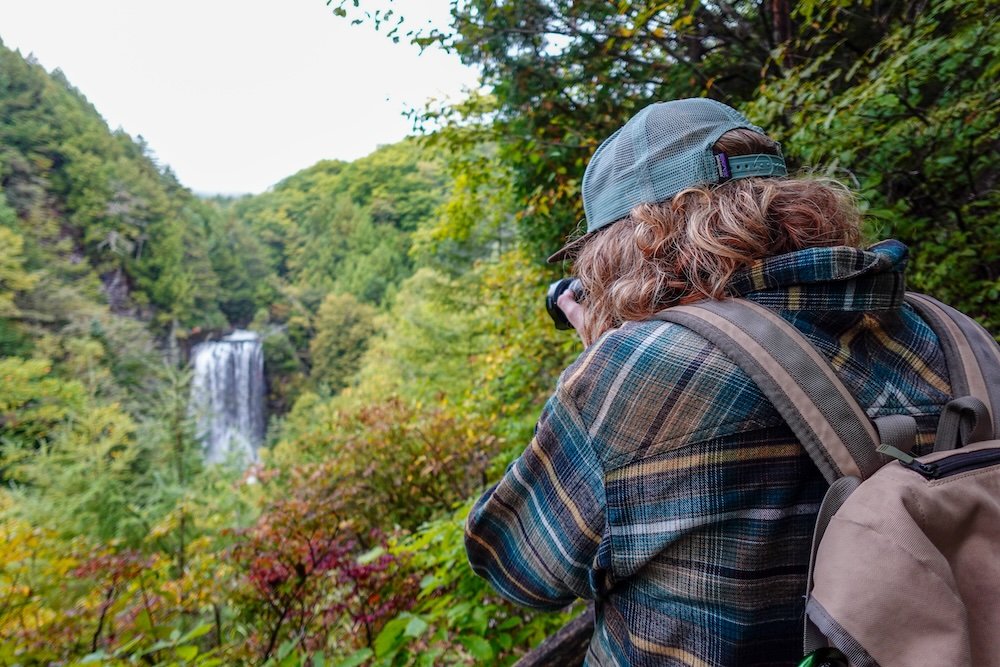
The countryside of Japan is a testament to the country’s incredible geographical diversity and its profound respect for nature.
- Diverse Landscapes: From the snow-capped mountains of Hokkaido to the lush forests of Kyushu, the natural beauty of rural Japan is both varied and mesmerizing. Places like the Japanese Alps offer breathtaking vistas, while the terraced rice fields in areas like Kyushu change with every season, reflecting nature’s ever-evolving palette.
- Seasonal Splendors: Japan is globally renowned for its cherry blossoms, but rural areas magnify this beauty manifold. Regions like Tohoku offer unparalleled views during the sakura season, while places like Nagano become a colorful tapestry during autumn.
- Quiet Retreats: The Iya Valley, often termed Japan’s “Tibet”, is one of the most remote and tranquil areas of the country. With its deep gorges, pristine rivers, and ancient vine bridges, it’s a haven for those seeking peace and tranquility.
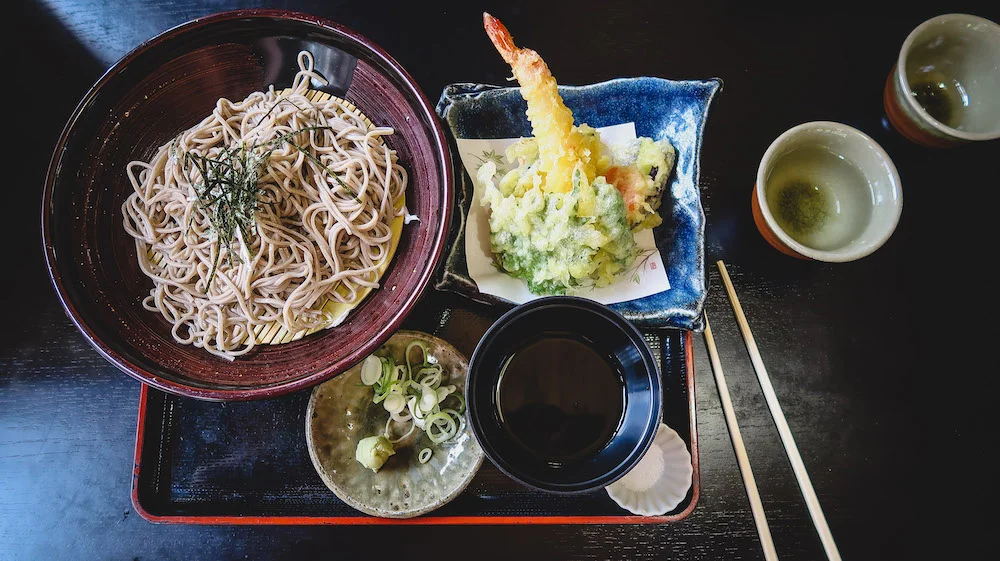
Authentic Cultural Experiences
Rural Japan is where the heart of Japanese culture beats strongest, unobstructed by the cacophony of modern life.
- Traditional Crafts: Areas like Kanazawa are rich in traditional crafts, from gold leaf artistry to intricate silk dyeing techniques. Engaging with local artisans offers a deep appreciation for Japan’s enduring craftsmanship.
- Time-Honored Festivals: Rural festivals, like the Nebuta Festival in Aomori or the Gion Matsuri in Kyoto’s outskirts, offer a vibrant display of Japan’s cultural heritage. Rooted in ancient customs, these festivals provide a profound connection to Japan’s spiritual and artistic essence.
- Culinary Delights: The Japanese countryside is a treasure trove of gastronomic experiences. Be it the fresh seafood of coastal villages or the seasonal delicacies of mountainous regions, rural Japan offers a culinary journey that tantalizes the palate while revealing age-old recipes and cooking techniques.
The allure of rural Japan lies in its deep-seated history, unmatched natural beauty, and authentic cultural immersion. It beckons travelers to step off the beaten path and discover a Japan that’s profound, timeless, and endlessly enchanting.
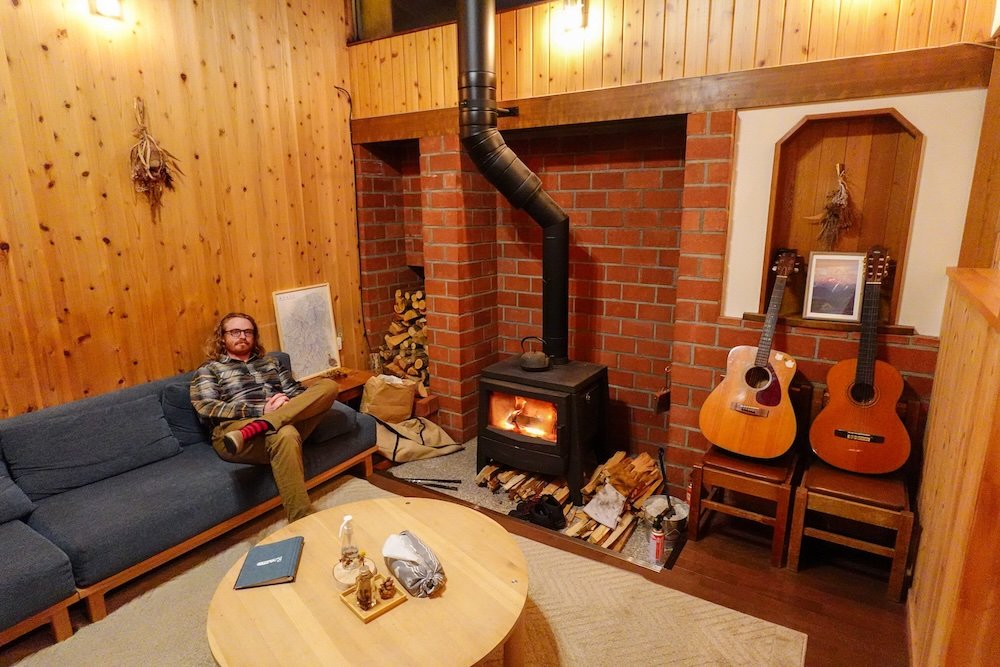
Ten Must-Visit Rural Spots In Japan For Visitors
Here is a list of the top 10 rural destinations worthy of visiting in Japan:
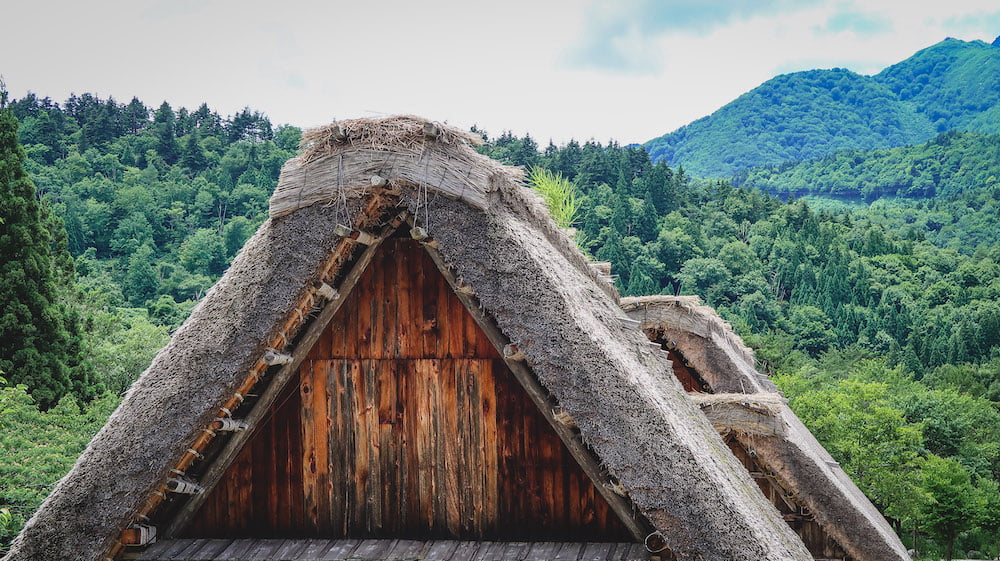
Shirakawa-go (Gifu)
Nestled in a remote valley surrounded by the rugged high mountain peaks of the Northern Japanese Alps, Shirakawa-go is a picturesque village that seems to have sprung straight from the pages of a fairy tale. Recognized as a UNESCO World Heritage site since 1995, it is celebrated for its distinctive gassho-zukuri farmhouses. This style of architecture, with its steep thatched roofs, is reminiscent of two hands brought together in prayer, which is the very essence of the word ‘gassho’.
These homes, with their steeply sloping roofs designed to withstand heavy snowfalls, are an architectural marvel and a testament to Japan’s ingenious traditional design. Their rustic charm is amplified by the intricate wooden beams, which are constructed without the use of nails. Each farmhouse stands as a symbol of the harmonious relationship the villagers of Shirakawa-go have nurtured with nature, adapting to and thriving in the harsh conditions of this secluded region.
The village’s landscape transforms with every season. The pristine white snow during winter turns these homes into magical snow domes, while spring brings forth a burst of cherry blossoms, painting the village in soft pinks. The lush greenery of summer gives way to a splendid display of autumn colors, making Shirakawa-go a year-round destination of mesmerizing beauty.
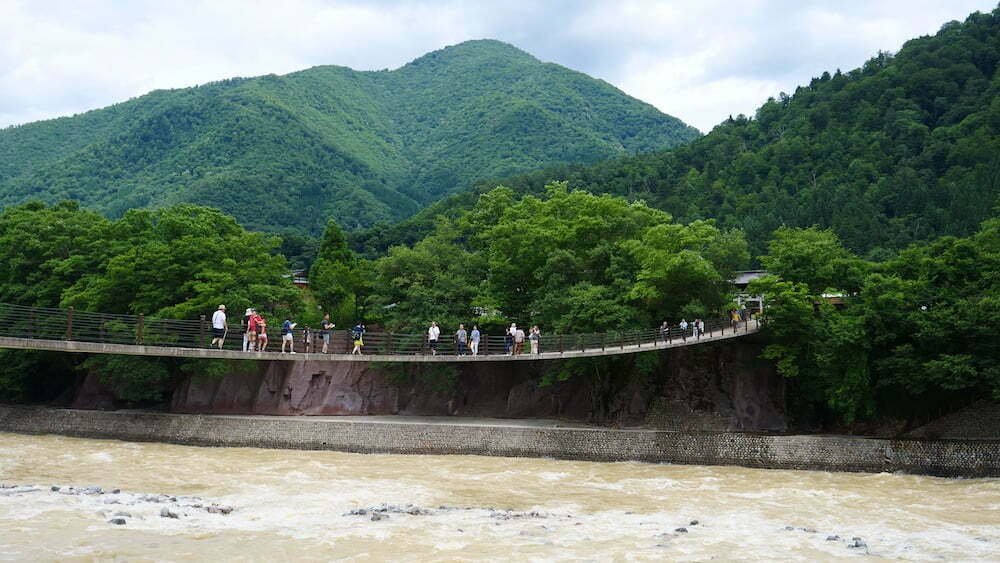
Activities:
- Seasonal Festivals: Shirakawa-go is renowned for its festivals that celebrate the unique culture and traditions of the region. One of the most iconic festivals is the Doburoku Festival , held at Shirakawa Hachiman Shrine. This festival celebrates the autumn harvest with performances, dances, and the serving of doburoku (a type of sake). Another not-to-be-missed spectacle is the Winter Light-Up event. During this time, the gassho-zukuri houses are illuminated, casting a warm, ethereal glow against the snowy backdrop, creating a dreamy, almost magical atmosphere.
- Traditional Guesthouses (Minshuku): Staying in a traditional gassho-zukuri house is an experience that transports visitors back in time. Many of these homes have been converted into minshuku, or traditional guesthouses. Here, guests can experience authentic Japanese hospitality, sleep on futons laid out on tatami mats, and savor home-cooked local dishes. Waking up in such an ambiance, especially when the village is veiled in morning mist or blanketed in snow, is truly surreal.
- Open Air Museums: The Gassho-zukuri Minkaen open-air museum offers a deep dive into the heritage of Shirakawa-go. Here, visitors can explore various relocated and preserved farmhouses, watch demonstrations of traditional crafts, and learn about the daily lives of the villagers in times gone by.
- Observation Decks: For those who wish to capture the panoramic beauty of Shirakawa-go, the Shiroyama Viewpoint is the place to be. This observation deck offers a bird’s eye view of the village, with its cluster of thatched roofs and the Shogawa River flowing gracefully in the backdrop.
In essence, Shirakawa-go is more than just a destination; it’s a journey into Japan’s rich architectural legacy, cultural traditions, and its people’s indomitable spirit. It stands as a reminder of the beauty that emerges when humans live in harmony with nature. Whether you’re a history enthusiast, a nature lover, or a traveler in search of serenity, Shirakawa-go promises memories that will be cherished for a lifetime.
Noto Peninsula (Ishikawa)
Jutting out into the Sea of Japan, the Noto Peninsula in Ishikawa Prefecture is an untouched jewel, a place where the rhythm of the waves meets the echoes of history. Characterized by its rugged coastline, serene beaches, dense forests, and picturesque rice terraces, Noto offers a landscape that is both wild and invitingly serene.
As one of the most remote and rural regions in Japan, the peninsula has managed to preserve its age-old traditions, customs, and way of life. Its isolation, both geographical and cultural, is its strength. While the majestic cliffs and roaring waves represent the wild beauty of nature , the warm-hearted locals symbolize the undying spirit of a community that has weathered storms and celebrated sunrises for generations.
What’s captivating about the Noto Peninsula is the palpable sense of history. From the ancient salt-making techniques still practiced on its shores to the rustic, thatched-roof houses dotting its landscape, Noto stands as a testament to Japan’s enduring connection to its roots.
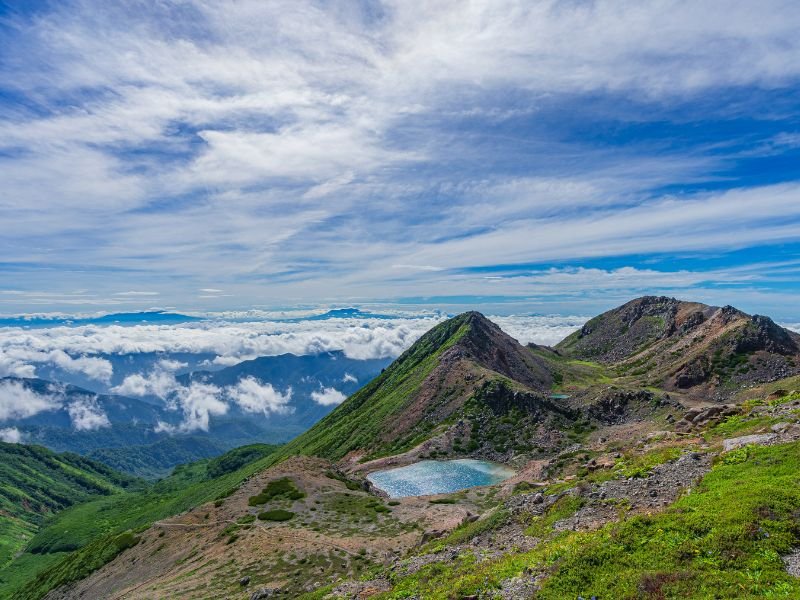
- Wajima Morning Market: As dawn breaks over the Noto Peninsula, the Wajima morning market, locally known as Wajima Asaichi , comes to life. This market has been a hub of activity for over a thousand years. Wander through its vibrant lanes, and you’ll be enveloped in a sensory experience: the fresh aroma of seafood caught just hours before, the vivid hues of locally-grown vegetables, and the inviting scent of freshly-prepared local delicacies. But beyond the produce, it’s the handcrafted lacquerware, known as Wajima-nuri , that steals the show. Meticulously crafted using age-old techniques, these pieces are a fusion of functionality and artistry, making them coveted souvenirs.
- Notojima Aquarium: Situated on Notojima Island, the Notojima Aquarium is a window into the marine world of the Sea of Japan. Home to over 40,000 marine creatures spanning 500 different species, it offers visitors a chance to marvel at the diverse aquatic life. From playful dolphins and graceful sea lions to the mesmerizing jellyfish displays, the aquarium is a celebration of marine biodiversity. Interactive programs, like the dolphin and sea lion shows, not only entertain but also educate visitors about the importance of marine conservation.
- Coastal Exploration: The rugged coastline of the Noto Peninsula is perfect for exploration. Sites like the Ganmon Rock, with its naturally carved sea cave, are a testament to the relentless power of nature. Additionally, the terraced rice fields of Shiroyone Senmaida, illuminated at night, offer a surreal landscape that juxtaposes man’s agricultural prowess with nature’s grandeur.
- Traditional Experiences: Delving into the age-old traditions of the Noto Peninsula can be a transformative experience. Witnessing the ancient salt-making methods at Agehama-style salt farms or participating in local festivals, such as the dynamic Kiriko festivals with their massive lantern floats, provide a deep connection to the region’s cultural tapestry.
In its essence, the Noto Peninsula is a sanctuary where time slows down, and the cacophony of the modern world fades away. It invites visitors to immerse themselves in its timeless beauty, indulge in its authentic experiences, and forge a bond with a land where traditions aren’t just remembered; they’re lived. Whether you’re standing on its cliffs with the sea breeze ruffling your hair or chatting with a local artisan in Wajima market, Noto ensures that its melodies linger in your heart long after you’ve left its shores.
Yakushima (Kagoshima)
Majestically rising from the azure waters of the East China Sea, south of Kyushu, lies Yakushima. A UNESCO World Heritage site since 1993, this verdant island is often referred to as the “Alps of the Ocean” due to its mountainous terrain. But beyond its topography, Yakushima’s true allure lies in its primordial cedar forests, some of which have stood tall and proud for thousands of years.
The island is cloaked in a rich tapestry of biodiversity, with the forests housing trees that have witnessed millennia, often referred to as “Yakusugi.” The most famous among them is the Jomon Sugi , a cedar tree believed to be over 7,000 years old. This ancient tree, with its gnarled bark and sprawling canopy, stands as a silent testament to the passage of time.
The island’s unique ecosystem is a result of its varied altitude, ranging from warm coastal areas to cooler mountainous regions. This gradient has endowed Yakushima with a fascinating array of flora and fauna, with subtropical and subalpine zones. As the mists roll in, they weave a gossamer blanket around the island, further enhancing its ethereal beauty and nurturing the moss-covered forests that seem straight out of a fantasy realm.
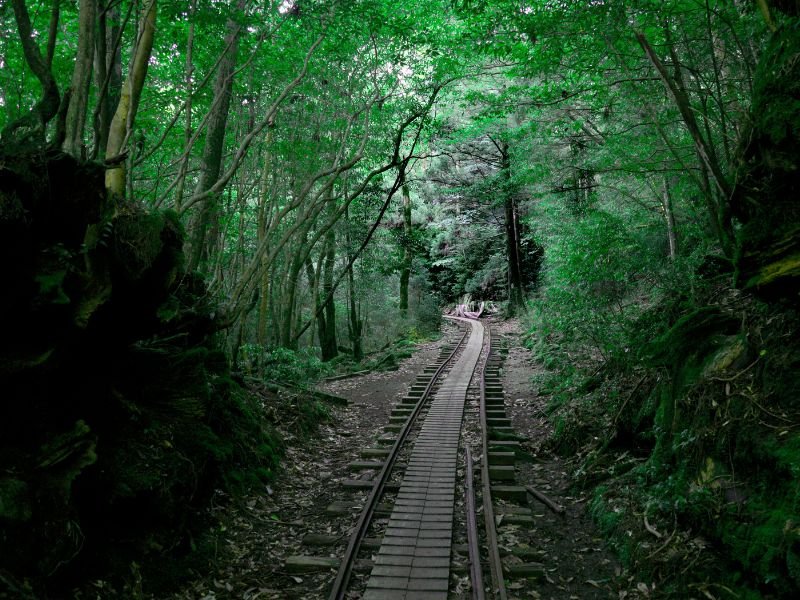
- Trekking: Yakushima is a trekker’s paradise. The trails here range from gentle walks amidst the cedar forests to challenging hikes up the island’s peaks. The path leading to the venerable Jomon Sugi is particularly popular, taking hikers through verdant landscapes and offering glimpses of the island’s ancient trees. Every step on these trails brings with it the aroma of the dense forest, the chirping of endemic birds, and the timeless aura of the ancient cedars.
- Visiting Waterfalls: The island’s abundant rainfall gives life to several stunning waterfalls. The Oko no Taki waterfall, one of the tallest and most majestic on the island, cascades gracefully, creating a misty spectacle. Another gem, the Senpiro no Taki , is framed by a vast granite backdrop, showcasing nature’s artistry at its finest. These waterfalls, with their pristine pools and surrounding greenery, offer tranquil spots for reflection and relaxation.
- Exploring the Coastline: While the forests are Yakushima’s crowning glory, its coastline is equally captivating. The coastal areas, with their unique rock formations and tide pools, provide an opportunity to witness marine life and appreciate the island’s geology. The ethereal Hirauchi Kaichu Onsen is a seaside hot spring that’s accessible only during low tide, offering bathers a therapeutic experience with panoramic ocean views.
- Wildlife Watching: The dense forests of Yakushima are home to the Yaku deer and Yaku macaque, both endemic to the island. Observing these creatures in their natural habitat, undisturbed by the urban sprawl, is a magical experience. The island’s biodiversity extends to its skies and streams, with varied bird species and creatures like the loggerhead turtle frequenting its shores.
Yakushima is where nature’s grandeur unfolds in every nook and cranny. It beckons travelers to disconnect from the outside world and form a deep connection with the earth and its ancient tales. From the whispers of the age-old cedars to the rhythmic cadence of its waterfalls, Yakushima offers a symphony of experiences that resonate with the soul and leave an indelible mark on the heart.
Nikko (Tochigi)
Situated in the mountainous heart of Tochigi Prefecture lies Nikko, an enchanting blend of rich history and breathtaking nature. For centuries, it has been a spiritual and cultural center, drawing pilgrims and travelers alike with its grandiose temples, serene landscapes, and the resonant mantra, “Never say ‘kekkou’ until you’ve seen Nikko,” meaning one should not use the word ‘beautiful’ until witnessing the beauty of this place.
Nikko’s historical significance is intertwined with its spiritual heritage. The mausoleums of the Tokugawa shoguns, surrounded by a complex of shrines, bear testimony to Japan’s feudal history, while the vast, pristine wilderness that envelopes these structures stands as a testament to nature’s eternal splendor. The juxtaposition of meticulously crafted wooden structures, adorned with intricate carvings and gold leaf, against the backdrop of towering cedar trees and the distant murmur of waterfalls encapsulates the harmonious coexistence of man and nature.
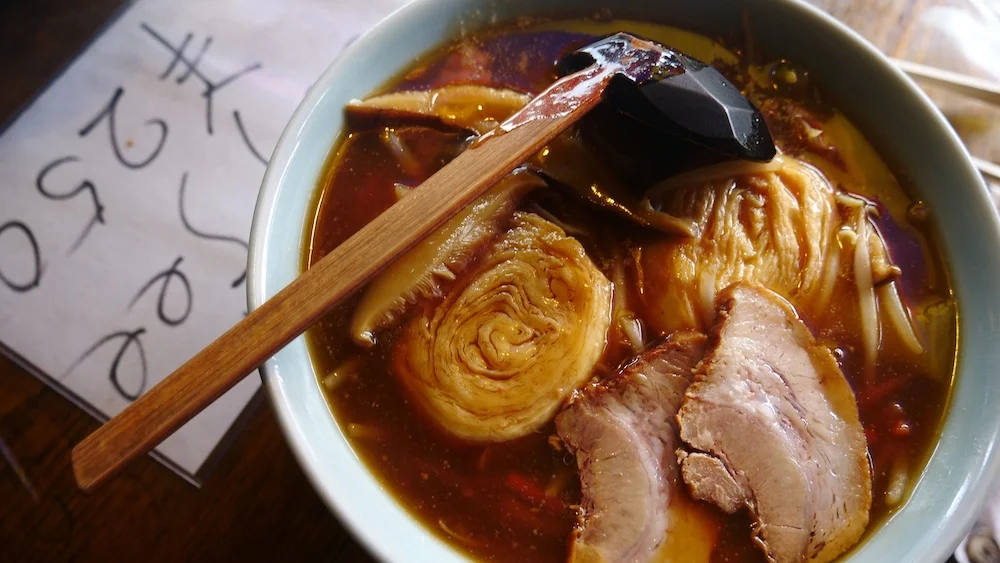
- Visiting Toshogu Shrine: At the heart of Nikko’s historical district stands the Toshogu Shrine, the final resting place of Tokugawa Ieyasu, the founder of the Tokugawa Shogunate that ruled Japan for over 250 years. The shrine complex is a masterpiece of Japanese craftsmanship and architectural prowess. With its lavishly decorated gates, like the renowned Yomeimon Gate, and intricate wood carvings, including the famous “See no evil, speak no evil, hear no evil” monkeys, Toshogu offers a journey into Japan’s rich past. Each detail, from the vibrant colors to the ornate sculptures, tells tales of power, devotion, and artistic innovation.
- Hiking around Lake Chuzenji: A short drive from the historic heart of Nikko takes you to the tranquil shores of Lake Chuzenji. Situated at the foot of Mount Nantai, this lake is a result of the mountain’s volcanic activity. Its calm, reflective waters provide a mirror to the changing seasons — cherry blossoms in spring, lush greenery in summer, vibrant autumnal hues, and a serene snow-clad landscape in winter. Hiking trails around the lake offer varying levels of difficulty, catering to both casual walkers and avid trekkers. Along the way, landmarks like the Kegon Falls, one of Japan’s highest waterfalls, add to the scenic beauty, providing picturesque spots to pause and soak in the view.
- Exploring Nikko National Park: Beyond the lake lies the expansive Nikko National Park, a haven for nature enthusiasts . Dense forests, mountainous terrains, hot springs, and an array of flora and fauna await discovery. The park’s trails lead to hidden gems, from secluded shrines to panoramic viewpoints. For those seeking tranquility, the park’s serene landscapes, punctuated by the sounds of chirping birds and rustling leaves, provide a meditative escape.
- Experiencing Onsen Culture: After a day of exploration, there’s no better way to relax than by indulging in Nikko’s onsen (hot spring) culture. The therapeutic waters, rich in minerals and sourced from the region’s volcanic activity, promise rejuvenation for both body and soul.
Nikko is a symphony of history and nature. It invites travelers to traverse the corridors of time, to stand where shoguns once stood, and to witness the timeless beauty of nature that has inspired poets and artists for generations. Whether it’s the solemnity of a centuries-old ritual at Toshogu or the first light of dawn reflecting on Lake Chuzenji, Nikko offers moments of profound beauty and reflection.
Iya Valley (Tokushima)
Hidden deep within the mountainous folds of Tokushima Prefecture on Shikoku Island, the Iya Valley is a verdant oasis of tranquility, often referred to as one of Japan’s “Three Hidden Valleys.” Its isolation has preserved not just its pristine natural beauty, but also a way of life and traditions that have remained largely untouched by the rapid modernization witnessed elsewhere.
The valley, with its steep rocky cliffs and the emerald-hued Iya River flowing below, paints a picturesque landscape. But among the many natural wonders of Iya, the most iconic are its vine bridges. These bridges, originally constructed as a means to traverse the valley, are made using woven vines and are periodically rebuilt to ensure their strength. With wooden planks spaced intermittently, they sway gently when crossed, offering both an exhilarating experience and unparalleled views of the river below.
The legend goes that these bridges were built by the Heike clan, who fled to the valley after a defeat in the 12th century. Their choice of such a secluded refuge and the creation of these bridges, which could be easily cut down in the face of an invasion, speaks volumes of the valley’s strategic significance in ancient times.
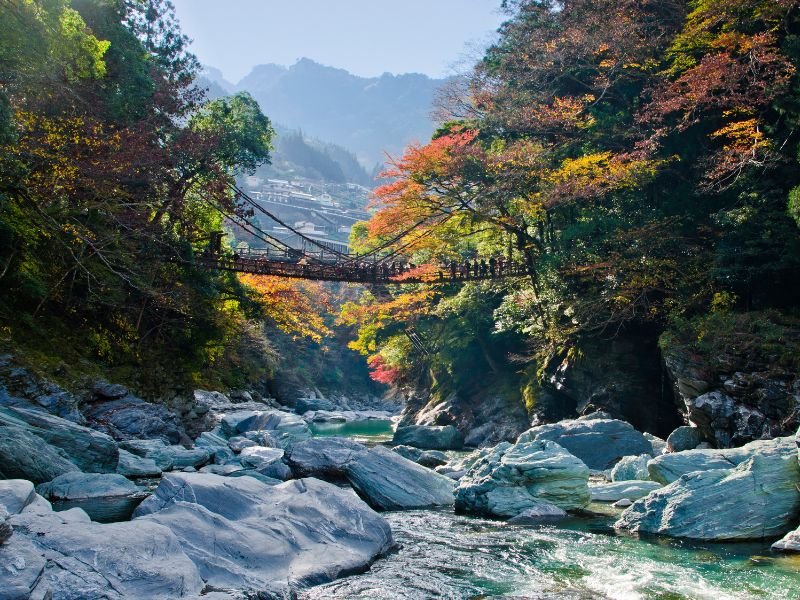
- Hot Springs: The seclusion of Iya Valley is reflected in its onsen (hot spring) culture. Tucked away amidst nature, these springs offer a therapeutic experience. The mineral-rich waters, heated by the earth’s geothermal activity, are believed to have healing properties. Bathing in these springs, with the mountainous horizon in the backdrop and the sounds of nature all around, rejuvenates both the body and spirit. The Iya Onsen , accessed via a cable car that descends down a steep mountain slope, is particularly notable for its riverside location and breathtaking views.
- Oboke Gorge Boat Rides: Further enhancing the valley’s allure is the Oboke Gorge, carved by the Iya River over millennia. The sheer rock faces, interspersed with verdant vegetation, create a mesmerizing landscape. Navigating this beauty, traditional boat rides offer a unique perspective of the gorge. As the skilled boatmen steer through the gentle rapids, they share tales and legends of the region, making the ride both scenic and informative.
- Exploring Traditional Villages: Scattered throughout the valley are quaint villages that have retained their traditional charm. A visit to these hamlets offers insights into the valley’s history and the lifestyle of its inhabitants. The Iya Kazurabashi , the most famous of the vine bridges, is located near one such village, and crossing it is akin to stepping back in time.
- Hiking and Sightseeing: For those keen on exploring the valley’s terrains, numerous hiking trails crisscross the region. These paths, ranging from gentle walks to more challenging treks, lead to vantage points offering panoramic views of the valley. The Manikin Peeing Boy statue, perched on a cliff overlooking a deep gorge, is one of the valley’s quirky attractions, symbolizing the depth and sheer drop of the valley below.
The Iya Valley is a reminder of the timeless beauty and serenity that still exists in pockets of the world. It’s a place where the mists of the past seamlessly blend with the present, where every vine bridge crossed and every mountain trail traversed tells tales of legends, of battles lost and won, and of the indomitable spirit of nature and humanity. Whether it’s the warmth of the hot springs or the gentle sway of a boat ride in the Oboke Gorge, the valley offers a retreat for the soul, a place to disconnect and find one’s bearings amidst nature’s grandeur.
Kiso Valley (Nagano)
Located in the heart of the towering Japanese Alps, Kiso Valley in Nagano Prefecture is a portal to Japan’s illustrious past. Characterized by its lush landscapes, meandering rivers, and rich history, the valley stands as a testament to an era when foot travel was the primary means of long-distance transportation. But, perhaps most emblematic of this bygone epoch are the valley’s meticulously preserved post towns, especially Tsumago and Magome, which once served travelers on the historic Nakasendo trail.
The Nakasendo, translating to “The Road Through the Mountains,” was one of the five routes connecting Tokyo and Kyoto during the Edo period. Of its 69 post towns, Tsumago and Magome are the most atmospheric and well-preserved, seemingly frozen in time. As you walk through these towns, the wooden facades, lantern-lit pathways, and stone-paved streets transport you back to a time when samurai, merchants, and travelers roamed these paths. With the prohibition of modern-day intrusions like power lines and private cars, the authenticity of the Edo-period ambiance remains undisturbed.
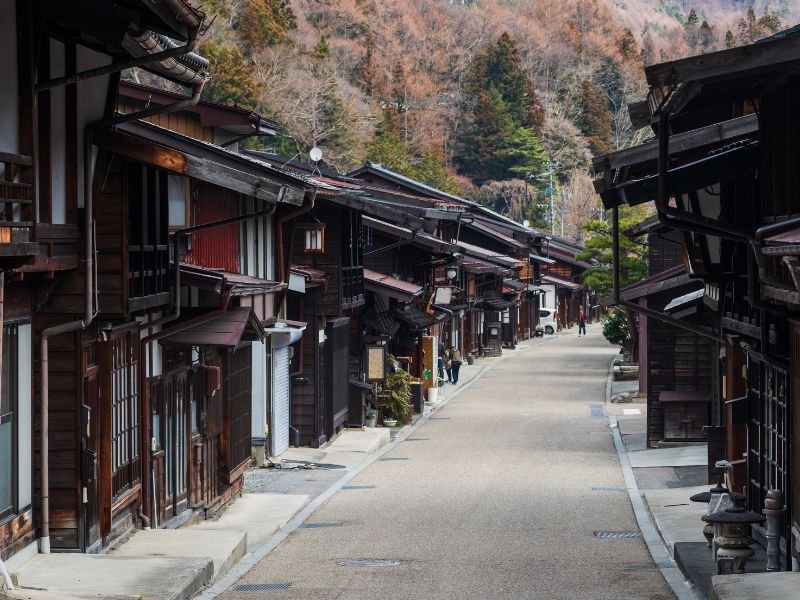
- Hiking the Nakasendo Trail: Among the most rewarding experiences in Kiso Valley is hiking the scenic stretch of the Nakasendo between Tsumago and Magome. Spanning approximately 8 kilometers, this segment of the trail offers a meditative journey through centuries-old cypress and cedar forests, cascading waterfalls, and picturesque rice terraces. Marked by centuries-old way markers and punctuated with teahouses offering respite to modern-day travelers, the trail provides both a physical journey through nature and a temporal journey through history.
- Sampling Local Cuisine: The culinary delights of Kiso Valley are as rooted in its history as the post towns themselves. As you traverse the region, indulge in traditional dishes like Gohei-mochi – skewered and grilled rice cakes glazed with a sweet and savory walnut or miso sauce. Another must-try is Kiso soba , buckwheat noodles unique to the region, often served cold with a dipping sauce or hot in a broth, a testament to the valley’s agricultural heritage.
- Visiting Historical Attractions: Beyond the main post towns, the valley is dotted with historical sites and museums. The Waki-honjin in Tsumago offers insights into the accommodations provided to high-ranking officials during their travels. With its original structure preserved, a visit here offers a glimpse into the architectural and cultural nuances of the period.
- Engaging with Traditional Crafts: Kiso Valley is renowned for its woodworking tradition, especially the crafting of lacquerware. The deep-hued, meticulously crafted pieces, often inlaid with gold or silver, are a reflection of the region’s artisanal heritage. Engaging with local craftsmen, witnessing their intricate processes, and even procuring a piece as a keepsake, makes for a memorable experience.
- Experiencing Stay in a Ryokan: To fully immerse oneself in the ethos of Kiso Valley, a stay in a traditional ryokan (inn) is imperative. With tatami-matted rooms, communal onsen baths, and traditional meals served in-room, it offers a holistic experience of Japanese hospitality and a sense of tranquility that aligns seamlessly with the valley’s ambiance.
Kiso Valley, with its preserved post towns and historical trails, offers a rare juxtaposition of nature and history. It beckons travelers not just to witness but to experience a way of life that thrived centuries ago. Each step on the Nakasendo, each bite of the region’s delicacies, and every interaction with its age-old traditions serve as a bridge between the past and the present, making a visit to this valley a poetic journey through time.
Naoshima (Kagawa)
Tucked away amidst the azure waters of the Seto Inland Sea, Naoshima is a beguiling blend of nature’s majesty and human creativity. Often dubbed the “Art Island,” Naoshima stands as a vibrant testament to the transformative power of art. What was once a tranquil fishing island with a declining population has metamorphosed into an unparalleled global art hub, thanks to the vision of a few art aficionados and the collaboration between artists, architects, and the local community.
The island’s unique identity is shaped by its intriguing juxtaposition of contemporary art installations and traditional Japanese life. As you amble through its settlements, it’s not unusual to stumble upon avant-garde sculptures seamlessly integrating with the island’s natural topography or traditional houses transformed into art spaces. This organic fusion of art, architecture, and landscape not only redefined Naoshima’s narrative but also posed a profound meditation on the relationship between nature, art, and humanity.
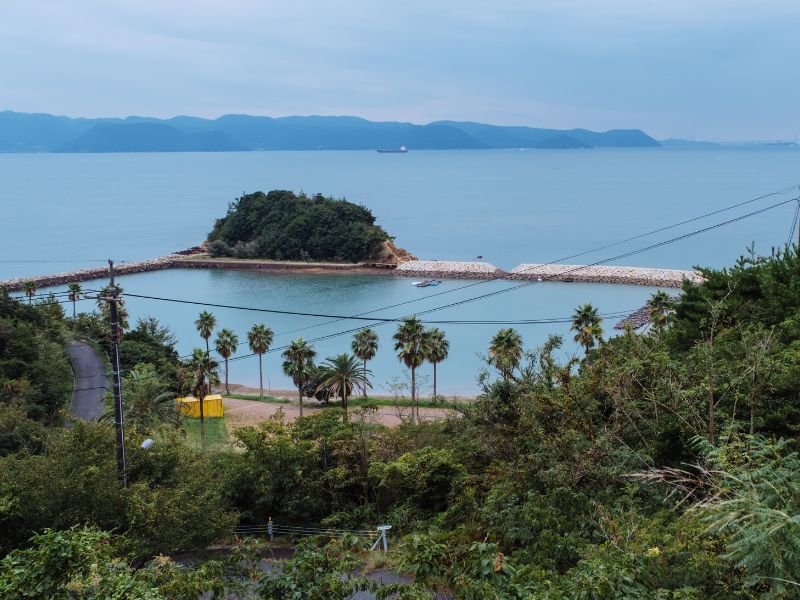
- Exploring the Chichu Art Museum: Perhaps the most iconic of Naoshima’s art destinations, the Chichu Art Museum, designed by the renowned architect Tadao Ando, is a masterclass in architectural innovation. Entirely subterranean, the museum utilizes natural light to illuminate its exhibits, ensuring that the viewing experience changes with the shifting position of the sun. The museum houses works by eminent artists such as Claude Monet, James Turrell, and Walter De Maria. Beyond the artworks, the museum itself is an artistic marvel, with its geometric forms and play of light and shadow offering a transformative experience.
- Beach Hopping: Naoshima’s beaches are a confluence of sandy shores and artistic flair. The most famous, Benesse House Beach , is punctuated with artworks that invite interaction. From the whimsical yellow pumpkin by Yayoi Kusama to the playful sculptures that pepper the landscape, each installation enhances the beach’s allure. These beaches provide both relaxation and contemplation, as the waves and art converse in silent harmony.
- Visiting the Benesse House Museum: An integration of a museum and a hotel, the Benesse House Museum showcases a diverse collection of contemporary art from both Japanese and international artists. Each piece is thoughtfully placed, ensuring that the art, architecture, and surrounding environment resonate with each other. Staying at the Benesse House allows visitors to immerse themselves fully in the art experience, with artworks extending from the museum into the rooms and surrounding areas.
- Exploring Art Houses and Installations: The Art House Project transformed abandoned houses and workshops into art installations. Scattered across the island, these spaces blur the boundaries between everyday life and art. Each house offers a unique encounter, be it the serene ambiance of Minamidera, which houses a James Turrell light installation, or the reflective waters of the Go’o Shrine.
- Riding the Art Buses: Naoshima’s local buses, adorned with colorful polka dots, reflect the island’s artistic ethos. Beyond their functional role of transporting visitors between key destinations, they add a touch of whimsy to the island’s landscape.
- Sampling Local Delicacies: While art is the soul of Naoshima, its culinary offerings provide a flavorful counterpart. The local cafes and eateries, some housed in artfully designed spaces, offer delicacies like fresh seafood from the Seto Inland Sea, ensuring that the island’s artistic journey also satiates the palate.
Naoshima challenges the traditional paradigms of where and how art should be displayed. It invites visitors to not just observe art but to live it — to feel the sun as it plays on a Monet, to hear the waves as they serenade a sculpture, and to contemplate art’s space in our lives and landscapes. It’s an island where every sunset paints a canvas and where the line between man-made and natural beauty is delightfully blurred.
Aso (Kumamoto)
Located in the heart of Kyushu, Aso in Kumamoto Prefecture is a testament to nature’s raw and magnificent power. Dominating the landscape is Mount Aso, one of the world’s most active volcanoes, which has shaped the region’s geography, history, and culture over countless millennia. The vast caldera, spanning approximately 120 kilometers in circumference, is one of the largest in the world, and within its expansive embrace lie thriving towns, fertile plains, and the resplendent Aso-san, the central volcanic complex.
Aso’s landscape is a testament to both the destructive and nurturing powers of volcanism. While eruptions have carved its rugged terrains and left ash-laden layers, they have also blessed the region with mineral-rich soils, making it an agricultural haven. The juxtaposition of verdant pastures, undulating hills, and the ever-smoldering crater offers a dramatic landscape that captivates both the eye and the soul.
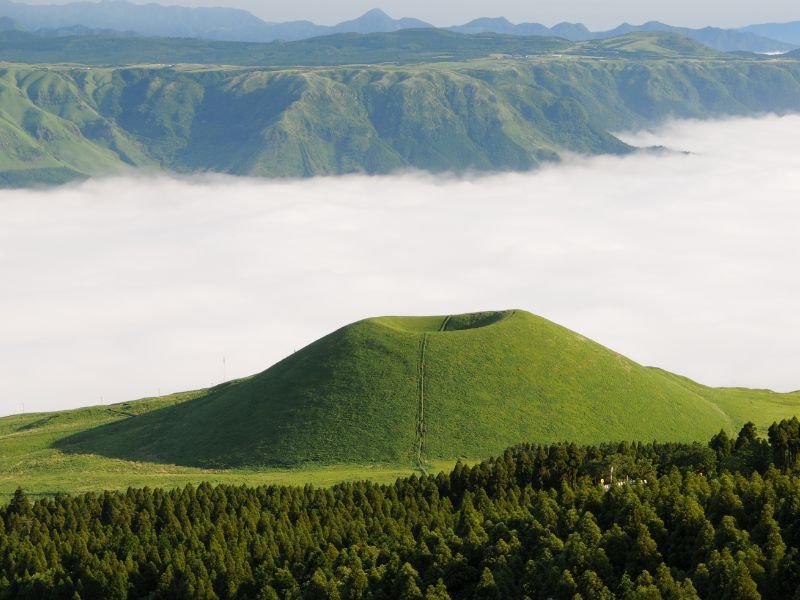
- Hiking: Aso offers myriad hiking opportunities that cater to both novice walkers and seasoned trekkers. The trails around the outer rim of the caldera offer panoramic views of the expansive interior, while those venturing closer to the central crater are rewarded with views of fuming vents and the cerulean-blue Komezuka, a beautifully symmetrical volcanic cone. Each path provides unique vantage points of Aso’s multifaceted beauty, from its lush grasslands to its smoky summits.
- Visiting Aso Volcano Museum: Delving deep into the geology, history, and cultural significance of Mount Aso, the Aso Volcano Museum offers a comprehensive understanding of the region’s volcanic activity. Interactive exhibits detail the formation of the caldera, the different types of eruptions, and the flora and fauna nurtured by this unique ecosystem. A visit here not only educates but also offers context to the landscape visitors witness, making it an essential stop for those keen on understanding the intricacies of this geothermal marvel.
- Exploring the Aso Shrine: A symbol of the region’s spiritual heritage, the Aso Shrine is believed to be over 2,500 years old and pays homage to the deity of Aso-san. Though the original structures were damaged in earthquakes, the restored shrine continues to be a beacon of the region’s cultural and spiritual identity. Festivals, rituals, and ceremonies here often intertwine with the volcanic landscape, reflecting the deep reverence and respect the locals have for the mountain’s power.
- Horse Riding: The grassy plains of the caldera, known locally as Kusasenri, offer a unique equestrian experience. Riding amidst this vast green expanse, with the looming presence of the volcanic peaks in the backdrop, is both tranquil and invigorating. The gentle trot of the horses complements the serene ambiance, making it a favorite activity for those looking to experience Aso’s beauty at a leisurely pace.
- Sampling Local Cuisine: The mineral-rich soils of Aso, nurtured by centuries of volcanic activity, yield crops of exceptional quality. Delight in local specialties like Akaushi (Aso beef), celebrated for its tenderness and flavor, or savor the freshness of locally grown vegetables in a traditional hot pot. The region’s culinary offerings are a reflection of its fertile landscapes, ensuring that every meal is a flavorful journey through its terrains.
Aso is a celebration of nature in its most primal form. It’s a place where the earth rumbles, where steam hisses from crevices, and where life thrives in the shadow of a smoldering giant. It’s a reminder of our planet’s dynamic core, of the forces that shape our world, and of the delicate balance between destruction and creation. Whether you’re gazing into the depths of a crater or savoring the bounty of the land, Aso offers an encounter with nature that’s both humbling and exhilarating.
Kamakura (Kanagawa)
Nestled between the sparkling waters of Sagami Bay and the verdant hills of Kanagawa, Kamakura is a delightful blend of history, spirituality, and natural beauty. Once the de facto capital of Japan during the Kamakura Shogunate, this coastal city has retained its historical charm and continues to beckon visitors with its array of venerable temples, storied shrines, and serene landscapes. The city’s timeline, spanning centuries, is palpably felt in its cobbled streets, ancient structures, and the tales whispered by the towering trees that have stood sentinel through ages.
A significant chapter of Japan’s feudal history was written here, and its legacy manifests in the myriad architectural wonders and cultural landmarks. But beyond its illustrious past, Kamakura is also a tale of timeless beauty – of cherry blossoms painting landscapes, of the majestic Buddha casting his benevolent gaze, and of the waves serenading its sandy shores.
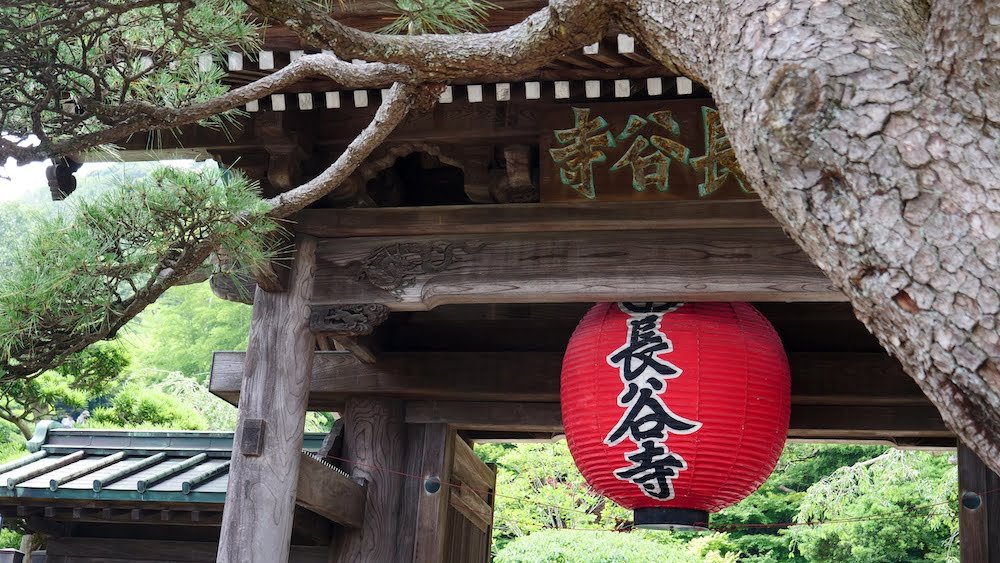
- Visiting the Kotoku-in Temple: Home to the iconic Great Buddha (Daibutsu), the Kotoku-in Temple is a must-visit pilgrimage for any traveler in Kamakura. This colossal bronze statue, standing over 11 meters tall, is not only a marvel of ancient craftsmanship but also an embodiment of serenity and introspection. Cast in the 13th century, the Daibutsu braved earthquakes and tsunamis, its tranquil expression unaltered by the tests of time. Visitors can even venture inside the statue, witnessing the intricate interior framework that supports this massive icon.
- Beach Strolls: Kamakura’s coastline is a delightful tapestry of sandy beaches and azure waters. Yuigahama and Zaimokuza Beaches are popular retreats, especially in the summer months. Strolling along the shoreline, with the rhythmic cadence of waves accompanying one’s thoughts, is a therapeutic experience. As the sun sets, these beaches morph into vibrant hubs, with cafes, food stalls, and surfers savoring the ocean’s embrace.
- Hiking in Kamakura’s Hills: The city’s hills, carpeted in dense forests and crisscrossed by ancient trails, are a hiker’s paradise. One of the most popular trails is the Daibutsu Hiking Course, connecting the Kotoku-in Temple to the Kuzuharaoka Shrine. Along the way, travelers are treated to panoramic views, secluded temples, and the serene ambiance of nature. The trail, echoing with birdsong and the whispers of ancient trees, is a journey through both nature and history.
- Exploring Other Temples and Shrines: Kamakura boasts a plethora of spiritual sanctuaries. The Tsurugaoka Hachimangu Shrine, with its vibrant torii gates and serene lotus ponds, stands as a testament to the city’s Shinto heritage. Engaku-ji and Kencho-ji, Zen Buddhist temples, invite contemplation with their pristine gardens, koi-filled ponds, and age-old structures.
- Savoring Local Delicacies: Kamakura’s culinary landscape is as diverse as its history. From traditional Japanese sweets like Hato Sable (dove-shaped cookies) to fresh seafood caught from Sagami Bay, the city offers a gastronomic journey that tantalizes the palate. Street food stalls, especially around Komachi Street, serve everything from squid ink ice cream to savory rice crackers.
- Bamboo Grove at Hokokuji Temple: A lesser-known gem, the Hokokuji Temple, is often referred to as the ‘Bamboo Temple’. Beyond its main hall lies a mesmerizing bamboo grove, where slender bamboo stalks soar towards the sky, creating a canopy of green. A walk here, with the sun filtering through the bamboo and the soft rustling of leaves, is a meditative experience, further enhanced by a cup of traditional matcha tea served within the temple premises.
Kamakura, with its juxtaposition of the ancient and the timeless, offers a respite from the frenetic pace of urban life. It’s a place where the past dialogues with the present, where nature intertwines with history, and where every corner, be it a temple alcove or a beachside cafe, narrates tales of bygone eras and eternal beauty.
Takayama (Gifu)
Takayama, often referred to as “Little Kyoto” due to its beautifully preserved historical streets, is a delightful town situated in the mountainous Hida region of Gifu Prefecture. Its charm is encapsulated in its old town, where narrow lanes, lined with Edo-period (1603-1868) wooden merchants’ houses, craft shops, and sake breweries, transport visitors back to a bygone era. The town’s location, ensconced amid the Japanese Alps, provides a picturesque backdrop, further accentuating its historical allure. The fusion of natural beauty with cultural richness makes Takayama an embodiment of the quintessential Japanese experience, seamlessly blending the past’s rustic elegance with nature’s serenity.
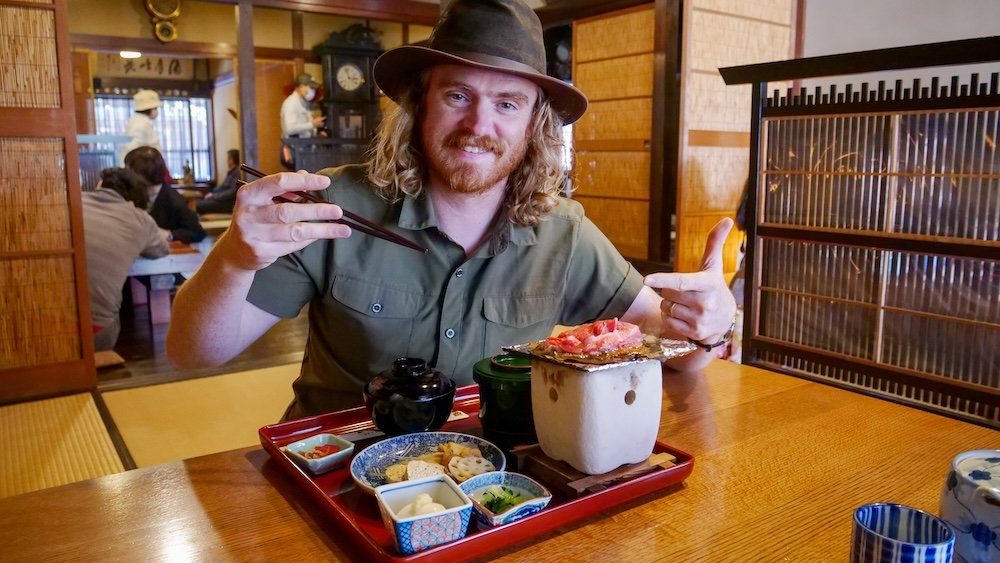
The air here carries the gentle scent of cedar, while the soundscape is a serene melody of rustling leaves, distant temple bells, and the soft murmurings of the Miyagawa River that flows gently through the town. Takayama, with its slower pace and rich tapestry of traditions, offers an escape from modern urbanity, reminding visitors of the nuanced beauty of simplicity and heritage.
- Exploring Sanmachi Street: The heart of Takayama’s historic district, Sanmachi Street, is a living museum of the Edo period. This well-preserved area consists of three narrow lanes filled with wooden buildings, sake breweries, boutiques, and cafes. Each structure, with its lattice-fronted facades and carved wooden accents, narrates tales of the town’s merchant history. As visitors meander through the lanes, they can sample local specialties, from Hida beef skewers to sake tastings offered by age-old breweries. Each step taken on the stone-paved paths is a step back in time, making Sanmachi Street an immersive historical journey.
- Visiting Morning Markets: Takayama’s morning markets, particularly the Jinya-mae and Miyagawa markets, are a vibrant testament to the region’s agricultural bounty. Local farmers and artisans gather every morning, offering a myriad of fresh produce, homemade pickles, crafts, and delightful snacks. The markets, with their lively ambiance and colorful displays, offer a delightful sensory experience, allowing visitors to engage with the local community and savor the region’s flavors.
- Hida Folk Village: A short distance from the town center lies the Hida Folk Village (Hida no Sato), an open-air museum showcasing traditional mountain farming life. Over 30 authentic gassho-zukuri (thatched-roof) farmhouses, salvaged and relocated from remote areas, dot the landscape. Each structure, with its steeply pitched roofs designed to withstand heavy snowfalls, offers insights into regional architecture and rural life. Demonstrations of traditional crafts, such as weaving and lacquer work, further enrich the experience, allowing visitors to engage with Japan’s age-old artistry.
- Savoring Hida Beef: Takayama is renowned for its Hida beef, a marbled delicacy that rivals Kobe beef in flavor and tenderness. Many local restaurants offer dishes showcasing this regional specialty, from succulent steaks to melt-in-the-mouth sushi. Dining in Takayama often becomes a culinary journey, where each bite resonates with the rich flavors of the Hida region.
- Exploring Temples and Shrines: Beyond its historic streets, Takayama is home to numerous temples and shrines, each radiating spiritual tranquillity. The Takayama Jinya, once a government house, now stands as a museum detailing the town’s administrative history. The nearby Shiroyama Park, apart from offering panoramic views of the town, is dotted with several temples and shrines, providing a tranquil setting for contemplation.
- Attending Takayama Festivals: If timed right, visitors can witness Takayama’s renowned festivals, held in spring and autumn. These festivals, with their ornate floats, puppet performances, and processions, are a vibrant display of the town’s cultural heritage, drawing visitors from across the globe.
Takayama, with its juxtaposition of the historical and the natural, is more than just a destination—it’s an experience. Whether one is strolling along Sanmachi, sipping sake beneath wooden eaves, or marveling at the architectural splendor of gassho-zukuri houses, the town weaves a spell, encapsulating the soul of Japan in its cobbled paths and timbered facades.
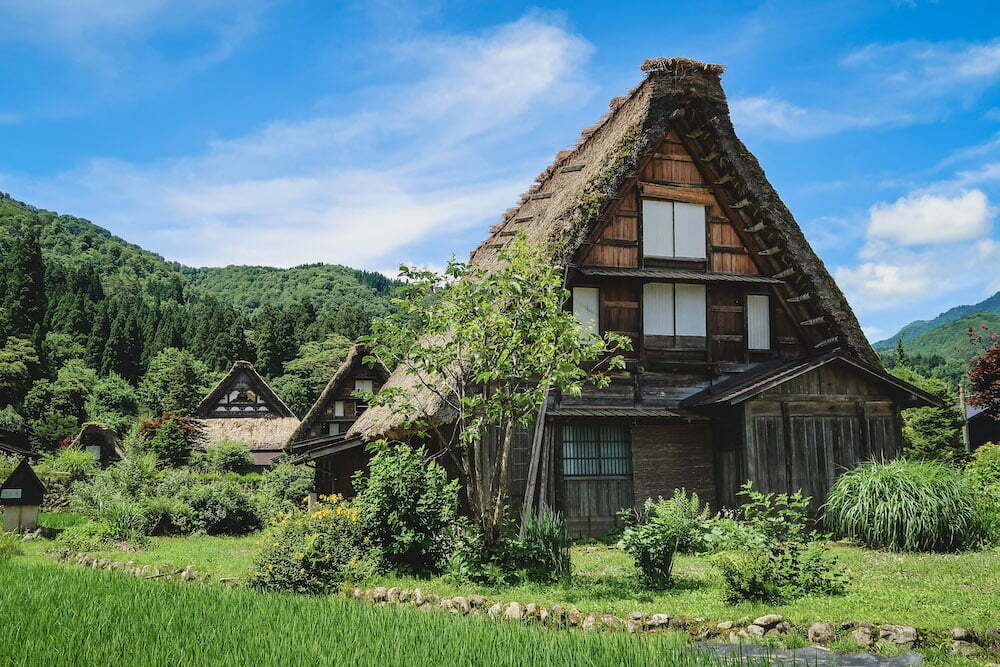
Tips for Traveling in Rural Japan
Public transportation considerations:.
- Schedules and Timing: While Japan is renowned for its punctual and efficient public transport system, rural areas may have less frequent services than metropolitan cities. It’s imperative to check schedules in advance, especially the last train or bus timings, to avoid being stranded.
- Japan Rail Pass: For those planning to travel extensively by train, consider investing in a Japan Rail Pass. It offers unlimited travel on JR trains over consecutive days, making it economical and convenient for tourists. Note that this must be purchased before arriving in Japan.
- Local Passes and Cards: Some regions offer their own travel passes for unlimited or discounted travel within a specific area. Researching these options can lead to savings. Additionally, IC cards like Suica and Pasmo, which are used in urban areas for seamless transactions, might be accepted in some rural transportation networks.
- Language Barrier: While urban transport often has announcements in English, rural areas might not. Having a translation app or a phrasebook can be beneficial. Additionally, taking screenshots of your destinations in Japanese can help in asking for directions.
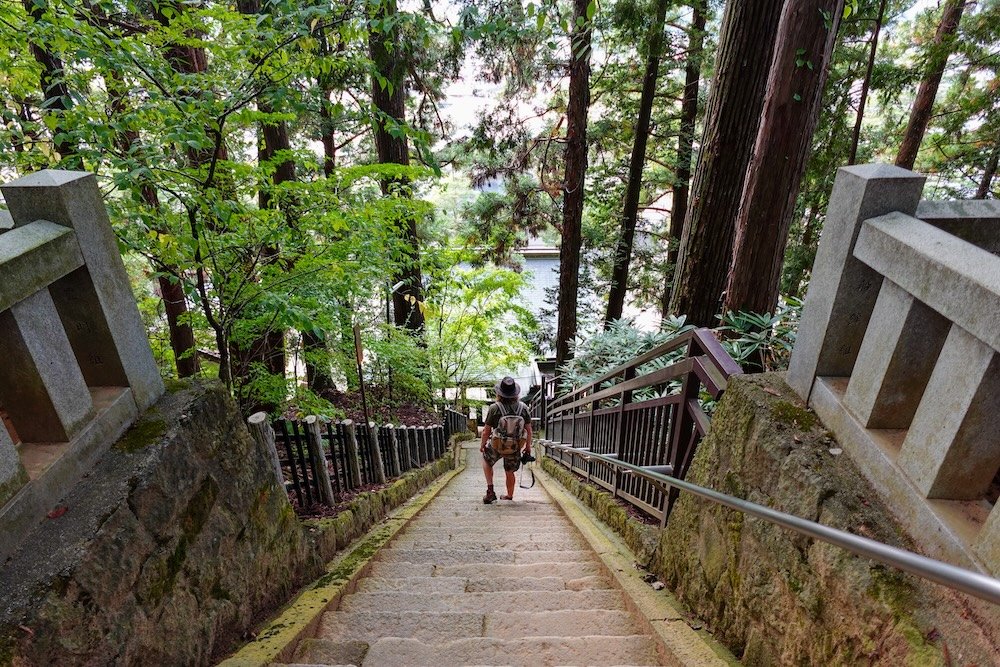
Etiquette and Respect for Local Traditions:
- Behavior at Shrines and Temples: Before entering sacred places, observe and follow local customs. This might include cleansing at a purification fountain, bowing, or refraining from loud conversations. Some areas might also require removing shoes before entering.
- Photography: Always ask for permission before taking photos, especially in rural areas where residents might not be accustomed to tourists. Some religious sites and private properties may also have restrictions on photography.
- Dress Appropriately: Especially when visiting religious sites, dressing modestly is appreciated. This can mean covering shoulders and wearing longer skirts or trousers.
- Avoid Littering: Japan is known for its cleanliness, and trash bins might be rare. Always carry a small bag to keep your trash and dispose of it at your accommodation or when you find an appropriate disposal area.
- Local Norms: Each region might have its own set of customs. For instance, in onsen (hot spring) towns, it’s common to see people walking around in yukatas (casual summer kimono). Embracing these traditions can enhance your experience.
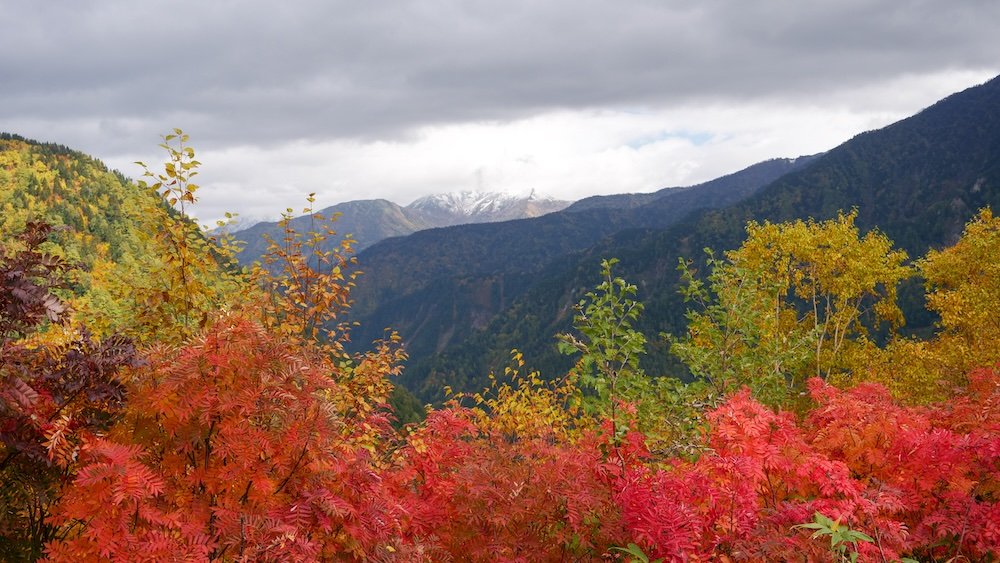
Best Seasons to Visit Each Destination:
- Shirakawa-go (Gifu): Best visited during winter when the gassho-style houses are blanketed in snow, creating a picturesque winter wonderland. Alternatively, autumn offers a palette of colors with the changing foliage.
- Noto Peninsula (Ishikawa): Spring and autumn are ideal for enjoying the coastal beauty without the summer crowds or winter chills.
- Yakushima (Kagoshima): Late spring, when the island’s rhododendrons are in bloom, or autumn, for cooler trekking conditions.
- Nikko (Tochigi): Autumn is renowned for its brilliant fall colors, making it a popular season. However, spring offers cherry blossoms juxtaposed against historic structures.
- Iya Valley (Tokushima) & Kiso Valley (Nagano): Both valleys are particularly stunning in autumn with their vibrant foliage. Spring is also a lovely time with fresh greenery and blooming flowers.
- Naoshima (Kagawa): Spring and autumn are pleasant for outdoor art exploration, avoiding the summer heat and the winter chill.
- Aso (Kumamoto): Spring, when the Aso caldera’s vast grasslands are lush and green, or autumn, when hues of brown and gold dominate the landscape.
- Kamakura (Kanagawa) & Takayama (Gifu): Both destinations are attractive year-round. However, spring offers cherry blossoms, and autumn brings vibrant fall colors. Takayama also has its famous festivals in these seasons.
Traveling in rural Japan offers a deeper dive into the nation’s heart and soul. While it requires a bit more planning and sensitivity towards local norms, the rewards in terms of experiences and memories are unparalleled. Embrace the journey with an open heart, respect for traditions, and a genuine desire to connect, and rural Japan will unfold its wonders in myriad, unforgettable ways.

Conclusion: Rural Destinations In Japan
In a world that often moves at breakneck speed, there’s a quiet call to slow down, to step away from the hustle of modern life and seek solace in the simpler, quieter corners of the earth. While Japan is famed for its neon-lit streets and bustling cities like Tokyo and Osaka , it also holds within its embrace hidden gems —places of pristine beauty , rich with tradition and tranquility . These rural landscapes, often overlooked by the hurried traveler, offer experiences that are deeply personal and profound .
Journeying through the Japanese countryside is like stepping back in time. It’s not just about seeing the sights; it’s about feeling the world around you. The gentle breeze rustling through ancient cedar forests, the warm sunlight filtering through autumn leaves, the silent stories whispered by old wooden buildings—all of these create moments that linger long after you’ve left. Traveling here becomes more than just a vacation—it’s a journey of self-discovery , a chance to capture and cherish meaningful moments .
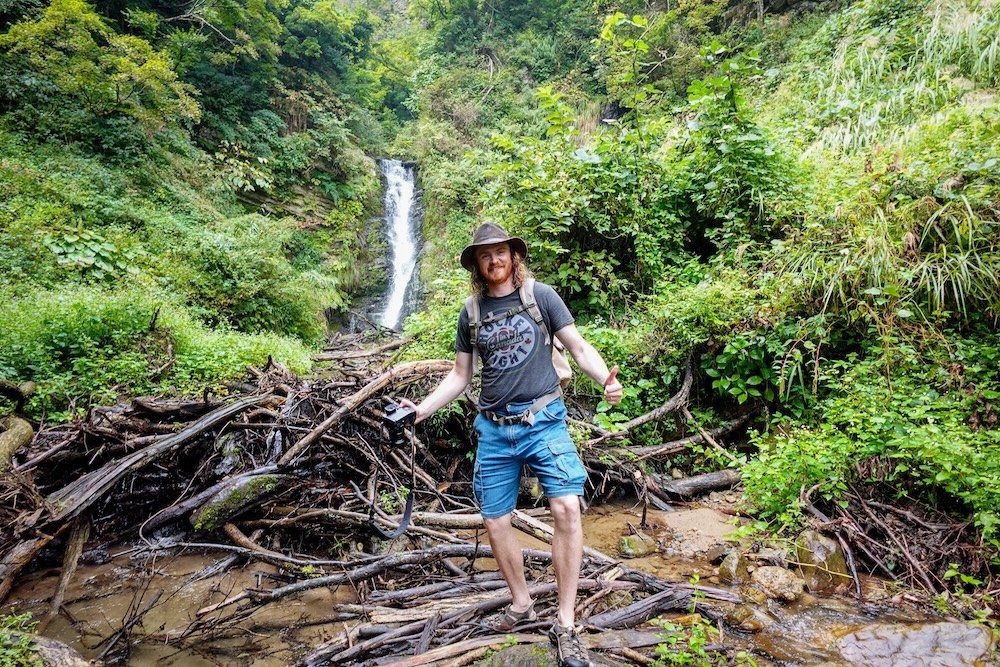
Japanese Countryside: Final Thoughts
In every hidden valley , along every winding trail , beside each murmuring stream , lies an invitation. An invitation to step away from the constant hum of technology , to leave behind the distractions of modernity , and reconnect with a world that offers authentic simplicity . Here, amidst the untouched beauty of Japan’s rural landscapes , you don’t just find breathtaking views—you find pieces of yourself . It’s a chance to rekindle your love for nature, to remember the beauty of quiet moments and the joy of slowing down .
But the allure of rural Japan isn’t just about the scenery. It’s the people , the guardians of tradition, who make each visit special. Their warm smiles and age-old customs create memories that last a lifetime. It’s the local festivals , where every dance and every float tells stories from the past. And it’s the food , crafted from ingredients grown in the very soil you walk on, bursting with flavors as pure as the hospitality with which they’re served.
In rural Japan, you don’t just visit—you connect . You experience a world where tradition and nature meet, and in doing so, you may just find the peace and simplicity you’ve been searching for.
You may also like
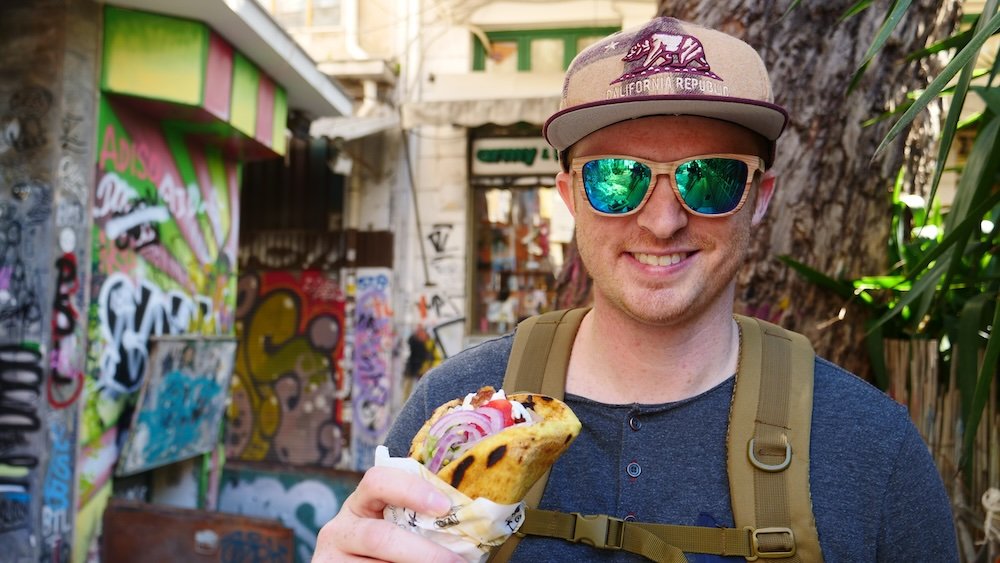
Wrapped Up: Gyro, Kebab, and Donair – Unraveling the Differences

India Pakistan Border Closing Ceremony at Attari Wagah

Warsaw Travel Guide: The Top 25 Things to Do in Warsaw, Poland
Your email address will not be published. Required fields are marked *
Rural Discovery Tour
Discover the Hospitality of Rural Japan
Tour Highlights
brief explanation of what this Tour offers goes here.
Tour highlights
- Home-Stay in Kameoka, A Unique Opportunity to Discover the Japanese Culture in Depth
- Explore Rural Japan with Your Host
- Kyoto, the Ancient Imperial Capital
- The Great Buddha of Nara in Todaiji Temple
What's Included
- Airport Pick-up and Orientation
- Destination Transfers
- Accommodations
- Meals, Guides and Activities as detailed
- Assistance from our Japan Office
Our Commitment
- Trips of Experience
- Personal Service
- Commitment to Excellence
- Responsible Travel
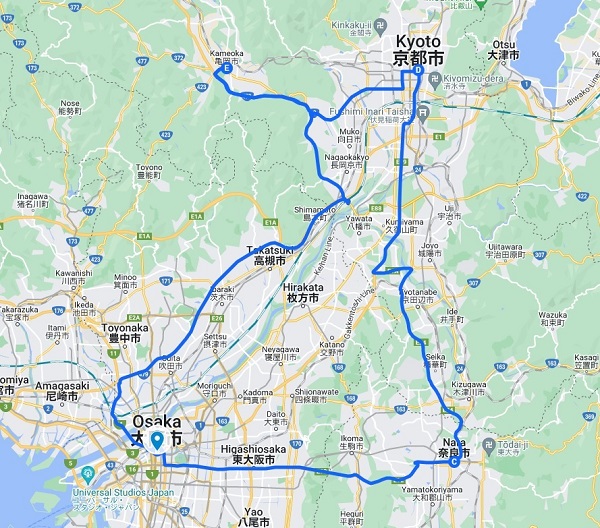
Our Rural Discovery Independent Tour will introduce you to rural Japan and its people while staying with a Japanese family. Of course, you will see some amazing sights but the point is to sit down and talk with Japanese people, learn how Japanese live, and experience something beyond traditional sightseeing. Our rural home-stay tour will give you stories that you will remember long after your photos have faded.
During your rural home stay opportunities are endless…
*Learn to cook traditional Japanese dishes
*Explore the village by bicycle or on foot, visit Izumo Daijingu Shrine and the Anao Temple which usually do not welcome tourists
*Experience a traditional tea ceremony, try Japanese ikebana (flower arrangement), write Japanese calligraphy, and try to play the Koto (traditional Japanese stringed instrument) with our local cultural experts and artisans
*Ride riverboats through the Honzu River Gorge, an ancient trade route to Kyoto
*Tour a local sake brewery, a tofu maker, a pottery studio, a antique shop
*Relax at the Hiyoshi Hot Springs, treat yourself to a Shiatsu massage
*Bonsai workshop
*Visit the world’s best whetstone excavation site
*Journey through rice paddies and farmlands to the historic mountain village of Miyama
This tour can be fully customized. The below itinerary is an example of a Classical custom tour. Price per person based on double occupancy for two travelers: Classical : from US$2,710 Superior : from US$3,810 Luxury : price upon request
Sample Itinerary
The tours featured throughout our website are intended to give you ideas for what's possible when you travel with us. Treat them simply as inspiration, because your trip will be created individually by one of our specialists to match your tastes and budget.
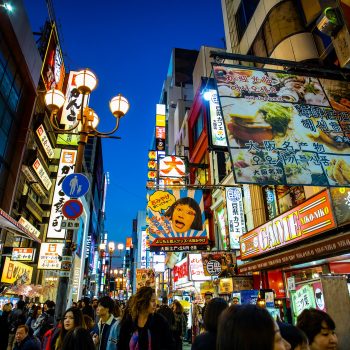
Your airport pick up will meet you at Kansai International Airport (assuming your flight arrives after 8:00am and before 21:30) and will take to your hotel in Osaka by public transportation. They will give you an orientation, hand you your transportation tickets, give you your rental pocket internet device, check you into your hotel, and answer any of your questions. You will be on your own for dinner but your airport pick up will make a few suggestions. Osaka is huge city with down to Earth people who are very proud of their cuisine, most notably okonomiyaki (a pancake-based dish containing vegetables, meat, and/or seafood), takoyaki (octopus dumplings) and udon noodles. These dishes are not fancy but are like the people of Osaka, friendly and open. The train from Kansai Airport to Namba Station in Osaka will take about 45 minutes.
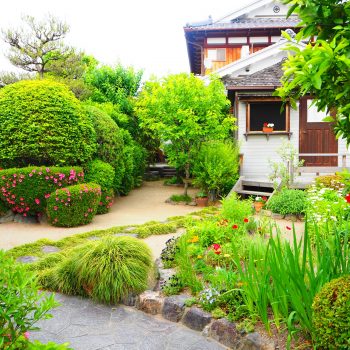
Rural Kyoto
Today you will take a train to Kyoto and then to the rural town of Kameoka. You will meet your guide/host at Kameoka Station who will take you to your home for the next 2 nights. This quaint rural town is located on the other side of the mountains that surround Kyoto but is a world away. You will stay in your guides home and they will show you around their neighborhood before settling in for the evening dinner and conversation. If the weather is nice you may consider an evening stroll before heading to bed. The train from Namba Station in Osaka to Kameoka Station will take about 1 hour.
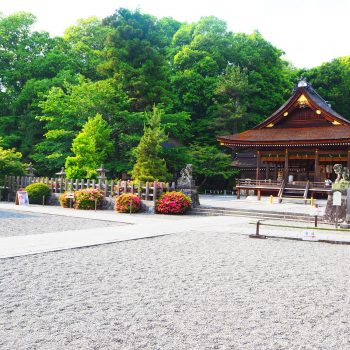
Today you will start your in depth exploration of Kameoka along with your guide/host. Here the possibilities are endless: you can explore Kameoka by bicycle or on foot and also learn about Japanese cooking, flower arrangement, pottery, and much, much more. If you are interested your guide may introduce you to some of their artisan friends which will further expand your understanding of Japan. For lunch (not included) you will stop in a local restaurant that tourists could ever find. In the evening you will head back to your host’s home for dinner. This is really the best way to experience Japan.
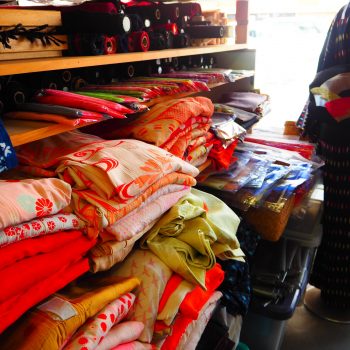
Rural Kyoto & Kyoto
Today you will cross the mountains and head to Kyoto, formerly the imperial capital of Japan. If you are traveling in Japan during the warmer months you may consider taking a traditional boat ride from Kameoka to the Arashiyama area of Kyoto. These boat are expertly guided down the river much as they were during the Edo Period. While in Arashiyama you will take a stroll through Kyoto’s famous bamboo forest before exploring other areas of this amazing part of the city. For accommodations you can chose from a ryokan inn, machiya townhouse or hotel. The trip from Kameoka to Arashiyama by train take only 15 minutes.
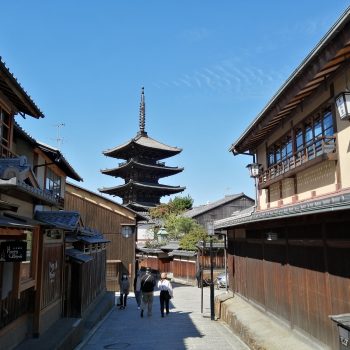
Your private local guide will meet you at your hotel and will show you the ancient imperial capital of Kyoto. Your guide will not work from a predetermined itinerary and will show you sights that are interesting to you. They are also very flexible and can make on the fly changes to fit your style, mood, weather and crowds. Possible sights in Kyoto include Higashiyama, Kiyomizudera, Gion, Nishiki Market, Kimono Museum, National Museum, Manga Museum, and many other possible temples, gardens, museums and so on. Only the best local guides can offer this kind of flexibility. Due to the flexible nature of your sightseeing, we do not include transportation, entry fees or meals while you are with your guide. If you have any specific sights you want to visit with your guide please let us know.
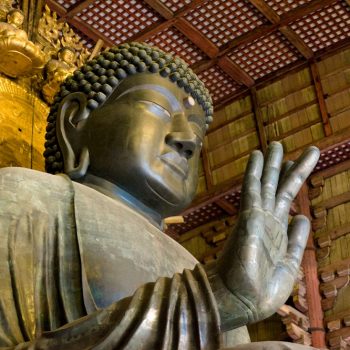
Nara is located near Kyoto and was the imperial capital from 710 until 784 before it was moved to Heijo-kyo (Kyoto). During this period, a large number of shrines and temples were erected under the protection of the imperial family and aristocrats. However, the monks in the surrounding hills started ro gain too much influence and eventually tried to seize power from the Shinto emperor. It was decided to move the capital to Heian-kyo, nowadays known as Kyoto. Many of the temples built at the height of Nara power, like the Todaiji and Horyuji temples, are currently registered as World Heritage Sites. Both Japanese and foreign tourists visit the city to see these temples, to walk among the free-roaming deer of Nara park or to visit some of the beautiful scenic mountains surrounding the city. You will return to Kyoto for the evening. The train from Kyoto Station to Nara Station will take about 45 minutes.
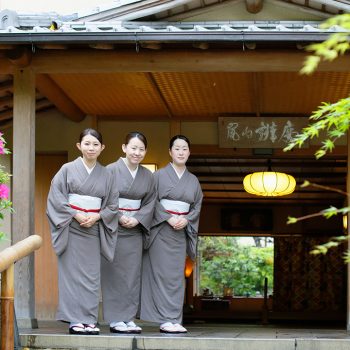
Today will be your last day in Japan and your last chance for sightseeing and shopping. You will take a train from Kyoto Station to Kansai Airport following the directions in your personalized tour organizer.
Other Tours Similar To Rural Discovery Tour

Cultural Diversity Tour
Experience the diverse cultures of japan.
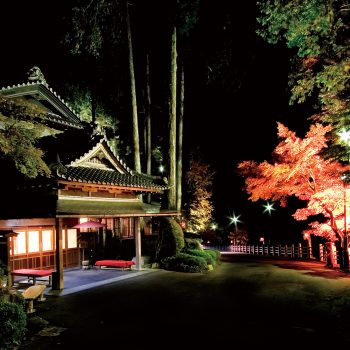
Ancient Japan & Shodoshima Tour
Traditional japan and shodoshima.
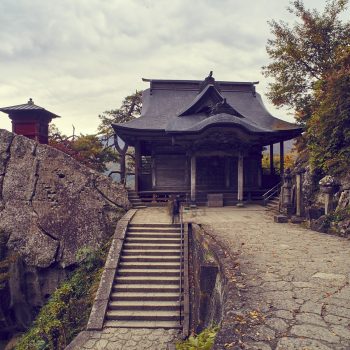
Best of Northern Japan
Fine cuisine, temples and hot springs.
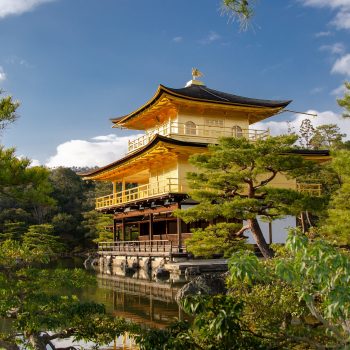
Classical Japan Tour
Must see sights of japan, virtual map tour.
Open Iframe
Rural Discovery Tour In Pictures

What Our Customers Have To Say
John moawad.
It was our first trip to Japan. Working with Jeff was a pleasure. His knowledge of the country and local contacts were very helpful. Choice...
Marina Boyer
North central exploration.
Working with Jeff at Rediscover Tours was a wonderful experience. He helped me plan a 10 day trip of a lifetime to Japan with my mother...
Shoguns and Samurai
I would like to take this opportunity to commend and thank you for the marvelous vacation we recently enjoyed in Japan. The entire experience exceeded...
Our Team Of Local Experts
Our team of Japan experts have all lived in Japan for years and know its the hidden treasures. Our team is here to answer all your questions and to build your tour just the way you want it.
Jeff Aasgaard
Jeff was born in a south suburb of Chicago named South Holland and lived in Japan for 14 years. He now lives in Commerce Township, Michigan with his wife Yoshimi, son Shota, and daughter Mina. He enjoys playing with his kids, volunteering with his daughter’s marching band, cycling and training and teaching Aikido.

Michiyo Kakiuchi
Michiyo was born in Noboribetsu, Hokkaido Prefecture though currently lives in Takarazuka, Hyogo Prefecture. Her main passions in life is traveling all around the world and enjoying their cultures.

Izumi Yamauchi
Izumi has spent most of her life in the Kansai region, except for the 10 years that she enjoyed in the UK. Living abroad has made her appreciate her own culture and local beauty even more. She currently lives in Osaka with her family, including two cats and two dogs.
Why Rediscover Tours
Great trips don't just happen; it takes expert knowledge and years of experience to create a truly memorable holiday. You can rely on Rediscover Tours to make your perfect Japanese experience. Our dedication to excellence makes the difference.

Trips Made for You
Your Japan travel expert will create your trip just for you
Your interests and travel style will be front and center when designing your tour
Accommodations will be selected based on your style and we will inform them of all your special meal and physical requirements
Japan Experts
Your Japan expert has lived in Japan or is Japanese
They know the hidden treasures of Japan that you will love and most tourists miss
Most of our team lives in Japan giving them first hand knowledge of the latest trends and experiences for you to enjoy
Finest Guides
Private local guides add a whole new depth to your Japanese tour
We only hire the best guides and review each trip with them insuring excellent experience
Your private guide will listen to you, show you sights of interest and will make on the fly changes to match the weather and crowds
With Confidence
Our office in Japan is here to assist and support you
Rediscover Tours has been organizing travel to Japan since 2000
You will arrive comfortable in the knowledge that all details are taken care of and that our Japan office is just a call away
- Countryside and village visits
Japan Countryside and Village Visits Trips 2024/2025
Countryside and village visits trips in Japan. Looking to travel Japan on a countryside and village visits tour? We offer 5+ countryside and village visits tours through-out Japan, backed by many reviews and offering discounts up to 24%. All our trips are offered by expert trip designers and Japan destination experts, with trip durations ranging from 11 to 24 days.
Showing 8 Trips in Japan
- Most Popular
- Lowest Price First
- Highest Price First
- Lowest Duration First
- Highest Duration First
- Highest Discount
We use cookies to analyze traffic and give you personalized content and ads. It's an essential part of giving you a great site experience. Click on the 'Accept' button if you agree with our use of tracking and analytical cookies. Please refer to our Cookie Policy for more information.

Ultimate Japan

Cherry Blossom Festival - 13 days
Journeys: Iconic Japan

Japan Unrivalled

Splendours of Japan

Beijing to Tokyo: The Great Wall & Mt Fuji

Japan Real Food Adventure

Southern Japan Experience
Trending destinations in japan.
- Budget Tours
- Luxury Tours
- Japan Tours
- Japan Eco Tours
- Japan Solo Trips
- Japan Tours for Young Adults
- Japan Guided and Escorted Tours
- Japan Tours for Senior Citizens
- Japan Group Tours
- Japan Family Tour Packages
- Japan Travel Deals
- Japan Small Group Tours
- Japan Budget Tours
- Japan Tailor-made Vacation Packages
- Japan Last Minute Deals
- Japan Private Tours
- Japan Luxury Tours
- Japan Customized Tours
- Japan Tour Operators
Popular Destinations
- Tokyo Tours
- Kyoto Tours
- Osaka Tours
- Hiroshima Tours
- Hakone Tours
- Sapporo Tours
- Kanazawa Tours
- Takayama Tours
- Mt Fuji Tours
- Mount Koya Tours
Popular Activities
- Adventure Tours
- Art and architecture Tours
- Beach Tours
- Bicycle Tours
- City sightseeing Tours
- Cultural, religious and historic sites Tours
- Explorer Tours
- Local culture Tours
- Museum and gallery visits Tours
- Natural landmarks sightseeing Tours
- Sightseeing Tours
- Train Tours
- Trekking and Hiking Tours
- Walking Tours
- Wildlife Tours
Upcoming Departures
- Spring tours
- Winter tours
- Summer tours
- September 2024 tours
- October 2024 tours
- November 2024 tours
- December 2024 tours
- January 2025 tours
- February 2025 tours
- March 2025 tours
- April 2025 tours
- May 2025 tours
- June 2025 tours
- July 2025 tours
- August 2025 tours
- September 2025 tours
- October 2025 tours
- November 2025 tours
- December 2025 tours
- March 2026 tours
- April 2026 tours
- May 2026 tours
- June 2026 tours
- July 2026 tours
- August 2026 tours
- September 2026 tours
- October 2026 tours
Trips per Duration
- 1 day tours
- 6 days tours
- 1 week tours
- 8 days tours
- 9 days tours
- 10 days tours
- 11 days tours
- 12 days tours
- 13 days tours
- 2 weeks tours
- 15 days tours
Trending Travel Guides
- Trekking in Japan: The 6 Best Multi-day Hiking Trails
- Walking the Kumano Kodo Trail: 5 Popular Routes
- Japan’s Golden Route: Experience the Best of Japan
- Great Japan Itineraries: How Many Days to Spend?
- The Top 10 Places to Visit in Japan
- Cherry Blossom Festival in Japan: 10 Best Spots
- Things to do in Japan
- Two Weeks in Japan: Top 2 Recommendations
- 10 Days in Japan: Top 3 Recommendations
- Best Time to Visit Japan
- Japan in March: Festive Galore in Warm Weather
- Japan in April: Weather, Tips & Cherry Blossoms
- Japan in January: Weather, Tips & New Year Festivities
- Japan in May: Pleasant Weather and Gorgeous Countryside
- Japan in July: Weather, Festivals and Lavender Bloom
- Japan in November: Pleasant Weather and Autumn Colors
- Japan in February: Weather, Tips & Snow Sculptures
- Japan in August: Summer Weather and Beach Excursions
- Japan in September: Weather, Tips & Lively Parades
- Japan in October: Cool Weather and Autumn Festivities
- Japan in June: Warm Weather and Better Rates
- Japan in December: Sunny Weather and Snowy Slopes
- Planning a Trip to Japan: Travel Tips and Advice
- Summer in Japan: Sun, Fun & Weather
Japan Countryside and village visits Tour Reviews
- Diana Irimia
- Jacob Wilson
The Ultimate Guide to Traveling in the Japanese Countryside
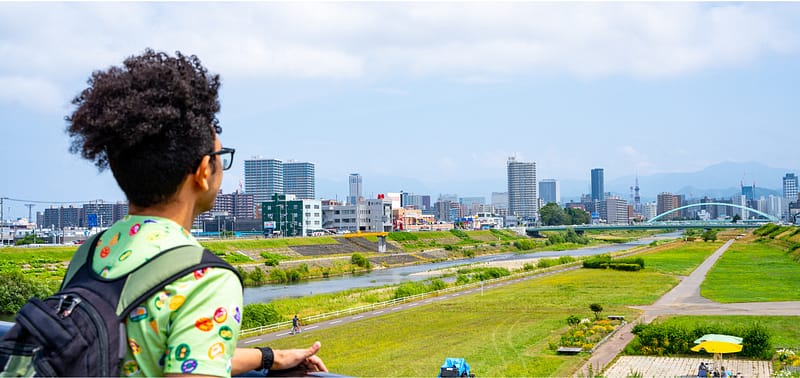
Exploring and traveling in the Japanese countryside is one of the most harmonic down-to-earth things you can experience in life. This is because Japan has a more than 2000-year old history, rich with temples, shrines, and other historic places to visit. Japan is also a country with beautiful and varying nature. Not only does Japan offer jungles in southern Okinawa. It also offers snow and a Scandinavian climate in northern Hokkaido. Nature also varies greatly with altitude, and Japan is 73% mountainous! This also means that 73% of Japan lies in the countryside!
So, how to best start traveling in the Japanese countryside? What can you do there? That’s what we’ll talk about in this article. Read on if you want to learn more!

Things to do when traveling in the Japanese countryside
Before exploring different options for traveling in the Japanese countryside, let’s explore why you would even bother going there in the first place. Here are some tips for enjoyable things to do in the Japanese countryside:
Hiking and nature walks
The first and most obvious thing you can do is to just go hiking. There are so many different options for you that it’s hard to cover all of them here.
As for the time of year, we especially recommend hiking during spring and autumn to experience the cherry blossom season or autumn foliage season . Don’t forget to bring good shoes and lots of water and rations.
Hot springs (onsen)
There are more different types of Onsen (温泉) in Japan than you can imagine. Onsen come in all kinds of colors and variations and the best onsen are always found within the countryside. Some onsen come with a fantastic view, some have tea leaves in them, some are so acidic that you can’t put your face in the water.
Local food tasting
You’d be surprised how much local variation there is to cuisine in Japan. Most cities and prefectures have their own set of renowned cuisine ( meibutsu , 名物). For example, Aomori is known for apples, Hiroshima for okonomiyaki, Saga is known for dried seaweed persimmons, and so on. Wherever you go, make sure to try out the local cuisine while traveling in the Japanese countryside!
The countryside has less light pollution, and you can see the starry skies much more clearly, providing an excellent opportunity for stargazing. Bring a blanket and flashlight, lie back, and enjoy the night sky.

Different regions in Japan and what makes them special
As earlier mentioned, Japan offers great variation in nature, landscape, and cultural activities depending on which area you visit. To highlight this, let us give a brief overview of the different areas in Japan and what you can do in each area!
Okinawa – A tropical haven
Let’s start in the South! If you want to experience clear, turquoise waters and white sandy beaches, try out snorkeling in the coral reeves, or visit the last jungles of Japan, Okinawa might be for you!
The prefecture of Okinawa consists of 160 islands and many of the smaller islands around the main island have the best beaches and water activities such as snorkeling. Some ferries go back and forth from the Okinawan capital of Naha on a regular basis.
One good thing to be aware of is that Okinawa gets really hot during summer, as such, it may be wise to avoid the peak of summer and the rainy season.
Kyūshū – An enchanting tapestry of nature
If you want to explore the Japanese countryside, one of the best places to start with is the southern island of Japan, Kyūshū. In the southwestern part of the island, you will find Kagoshima, a popular destination most famous for the island of Sakurajima, an active stratovolcano that sits in Kagoshima Bay.
Further north on the western coast lies Nagasaki. Nagasaki was the only port connecting Japan and the rest of the world during the Edo period when Japan isolated itself to not become influenced by Western powers.
In the middle of Kyūshū, you will find Saga Prefecture. If you are interested in learning about the origins of Japan, you can travel to the Yoshinogari Historical Park and learn more about the Yayoi period and Queen Himiko. Finally, Kyūshū also has one of the best onsen resorts in Japan, namely Beppu in the Oita prefecture .
Shikoku – A breathtaking pilgrimage
Shikoku is the least populated island of Japan’s four main islands. Therefore, it is also one of the best places to visit if your goal is to experience traveling in the Japanese countryside. One reason Shikoku is beautiful is because there are bridges that connect the many tiny islands dotting the region. Another local curiosity is the Shikoku Junrei (四国巡礼), a 1200 km pilgrimage that takes you past 88 Buddhist temples on foot and takes 1 to 2 months to complete by foot.
Chūgoku – History, nature, and culinary delights
The Chūgoku region is the westernmost region of Honshū and where popular destinations such as Hiroshima lie. In the region, you can enjoy delicious Okonomiyaki, stop by the Hiroshima Peace Memorial Museum learn about the tragic nuclear bomb strike, and remember its victims.
If you want to explore outside the large cities we recommend visiting the Kintai Bridge (錦帯橋). An absolutely magical place during the Sakura season. You can catch a ferry and visit the island of Miyajima (宮島) which offers delicious food, temples, and hiking possibilities.
Another peculiar place in the area is Ōkunoshima (大久野島). Or “Rabbit Island” – an island which houses thousands upon thousands of free-roaming friendly rabbits.

Kansai – The cultural center of Japan
The Kansai region is the cultural mecca of Japan and an excellent place to experience Japanese traditional culture. Here you will find the old capital of Kyoto . and the second largest city in Japan, Osaka . Kyoto is one of the only larger cities that wasn’t bombed during WWII, and as such, the density of historical temples is unmatched. By the way, if you happen to be traveling in the Kyoto area, one recommendation is to climb Mt. Daimonji at sunset and see Kyoto from above as the darkness settles. The slow transition from the sunset to how the city lights up is simply amazing.
If Kyoto is a bit too crowded for you, you can also visit the nearby lake Biwa – The largest lake in Japan. Here you can do tons of outdoor activities such as cycling, swimming, camping, and more.
In the area near Osaka, you also have the port town of Kobe , a more peaceful harbor town with an international vibe and lots of hiking options. Finally, we also highly recommend visiting the city of Nara – Japan’s oldest capital, a city filled with ancient temples and beautiful parks with free-roaming deer that, through the ages, have learned to bow for food!

Chūbu – A gateway for travel, camping, and sightseeing
Next, we have the central region of Japan called Chūbu. Here lies the famous Mount Fuji . Around Fuji you also have the Fuji Five Lakes (富士五湖). This area is one of the best places to visit exploring the Japanese countryside. We recommend renting a bike, staying at a hotel (or camping), and traveling around the five lakes surrounding Mount Fuji. You will also find the city of Nagoya in Chūbu – a famous city connecting Tokyo and Kyoto. Nagoya offers great variation in local food such as miso-katsu (味噌カツ) or kishimen (きし麵). Nagoya is the ideal spot to have as a base, as it is right in between Kyoto and Tokyo, as well as near remote must-visit locations such as the Shirakawago (白川郷) and the Shima Peninsula (志摩半島).
Kantō – Japan’s big apple
The Kantō region is where you will find the big apple of Japan, namely Tokyo . Although Tokyo indeed is the world’s largest metropolitan area, the beautiful thing is that it’s very easy to access more rural and harmonic places with public transport. The Kantō region has some of the very best options when it comes to traveling in the Japanese countryside. First of all, we have Hakone at a stone’s throw distance southwest of Tokyo. Hakone is ideal for bathing in onsen, and hiking. We also have Kamakura close by, a historically important port town with lots of beaches, historical buildings, and the famous peninsula of Enoshima (江ノ島). If you travel North instead you can visit Nikko. Nikko lies in the mountains and is a great place to visit during the winter. Our recommendation if you want to see more of the countryside is to take a bus from Nikko station to Lake Chuzenji (中禅寺湖). Here you will find waterfalls, a crystal blue lake with the towering Mt Nantai that really makes the snowy landscape a spectacle to behold. You can also rent snowshoes and walk around the marchlands of Senjō-ga-hara (戦場ヶ原)! Going northwest you can either visit the Nagano prefecture. When it comes to traveling in the countryside, your best option in the area is the town of Yudanaka (湯田中). A small town north of Nagano that is famous for bathing snow monkeys and onsen. In the same direction, you also have the Gunma prefecture which too has a famous onsen resort, especially during summer. Other than that, we have the astonishing port town of Yokohama and the adjacent Minato Mirai, Saitama, and the Edo-style town of Kawagoe, Chiba with its many parks and rural areas, there are so many great locations to visit that we can’t possibly list them all here.
Tōhoku – A snowy paradise
Proceeding up north we have the region of Tōhoku. If you live in Japan or plan to travel there, our recommendation is to travel north towards Tōhoku and Hokkaido during the winter season! The reason is that Tōhoku has many great locations for winter activities. Using Sendai as the base, you can, for example, visit Yamadera (山寺), a beautiful temple in the middle of nowhere on the mountainside with an amazing view. You can also keep going to find the rural town of Zaō (蔵王), a lesser-known but very recommended place for skiing and onsen.
You can also travel north and visit places such as the town of Kessennuma (気仙沼市) an area that was badly struck by the 2011 Tōhoku earthquake and following tsunami.

Hokkaido – Skiing, hiking and hot springs
Finally, we have the northernmost island of Hokkaido. Using the capital of Sapporo as your base, you can enjoy skiing and hiking, as well as learn about the indigenous Ainu people.
If you want to experience traveling in the Japanese countryside, we recommend using the railway connection that connects the southern towns of Hakodate and Sapporo. Although the train ride takes several hours, there are many stops along the way where you can visit rural villages that very seldom get visitors.
Transportation for traveling in the Japanese countryside
Getting from point A to B is not as straightforward if you are in the rural areas of Japan. You’re likely to encounter hourly bus traffic, signs written only in Japanese, and a population that most likely doesn’t speak English. Therefore, the first and maybe most important tip is to learn some basic Japanese – enough to ask for directions and read signs. Luckily, reaching this level of proficiency only takes a couple of months, if you study at one of our partner schools in Japan, or take an online course !
With that said, let us present your different transportation options for traveling to, and within the Japanese countryside!
Travel by train
Your first choice of travel will probably be by train. Japan has a huge train network that connects all of Japan. We recommend getting an IC card for easier payment. If you are planning on traveling far and want to visit rural areas, it is also recommended to get a Seishun 18 Kippu (青春18切符), a stampcard where one stamp (about 3013 yen) allows free travel with JR local trains for one full day.
Travel by bus
Japan also offers large bus networks connecting commuters far into the countryside from the nearest train station. However, most buses in rural areas don’t have any support for the English language. Therefore, it is highly recommended to directly ask the bus driver if the bus goes to your location before entering the bus. It’s also good to know that you need to press the “stop button” at your station, otherwise the bus driver will just pass by.

Travel by taxi
If there is no public transport available to your location, your best bet is to simply take a taxi. It may be a bit more expensive, but its convenience makes up for it. If you want to learn more about using a taxi while traveling in the Japanese countryside, check out our guide on the matter here .
*Note that Uber and other ride-sharing apps aren’t commonly used in Japan, and may be unavailable in rural areas.
Travel by bicycle
Depending on how far you need to go while traveling in the Japanese countryside, another great option is to rent a bicycle! Enjoying nature from the back of a bicycle is much more enjoyable than from a car window! But if you are going into the mountains on a bicycle, the roads can both be narrow and dangerous. Therefore it’s important to know your route before departing.
Also, remember to follow Japanese law when cycling, or you may be subject to a fine. It is not allowed to listen to music while cycling. On pedestrian sidewalks, you must have a headlamp installed on the bicycle, and in cities, you may only park the bicycle at designated parking lots.
Communicating with the locals
One thing that makes your rural experience even more memorable is having a chat with the locals. Most often you don’t even need to make the first move. Foreigners traveling in the Japanese countryside are rare, and more often than not, locals will take an interest in you initiating a conversation before you have the chance to. Of course, to be able to communicate, you must first learn how to speak conversational Japanese. To get the most out of your Japanese travel experience, we therefore recommend that you spend some time learning Japanese! If you are interested in making a study trip to Japan, contact us for more information! If you want to learn more about Japanese culture and life in Japan, make sure to follow our blog !
Share this article
Go! Go! Nihon
Related articles.

How to open a business in Japan: 5 myths to avoid

Explaining the 150 hour Japanese study requirement for language school
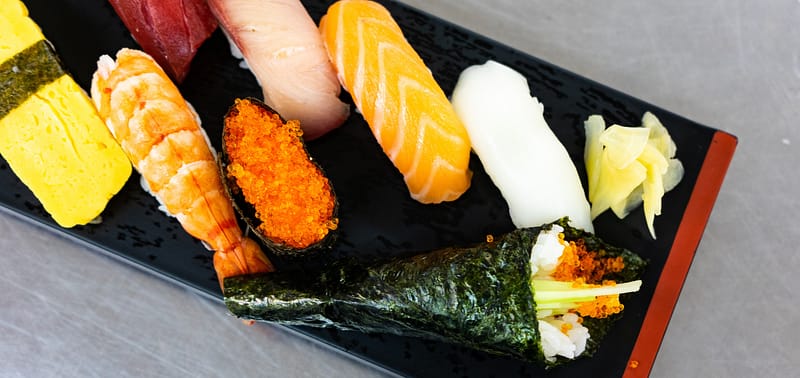
How to make Restaurant Reservations in Japan: Apps & Phrases
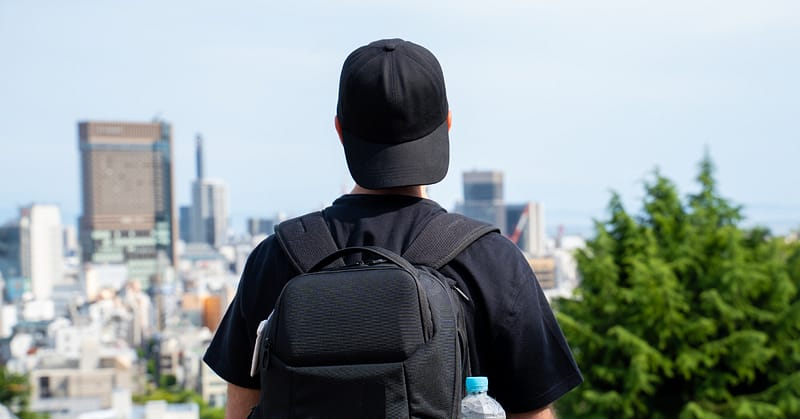
Digital Nomad Visa in Japan: Requirements & How to Apply
Ready to Live & Study in Japan?

Subscribe to our newsletter
© 2024 株式会社GoGo World

Hida Takayama Rural & Local Activity
Explore rural japan.
Deeply localized and unique cultural tours in the countryside of Takayama
Why UMESEKO TOUR?
We are a newly born tour provider in Takayama area but have already got many high reputations. One of our experiences was certified as one of the top 10 experiences in Japan of Tripadvisor 2019 Travelers' Choice. All tours are made for small groups and travelers seeking for DIFFERENT experiences. We take guests to non-touristy places that unlisted on any guidebooks or websites, which can make our tour more special and they will enjoy exploring the authentic Japan's countryside. Even though our tours are highly evaluated, we have always been developing the quality of product and service to offer the very best experience. We surely promise that you will have unforgettable time with us.
Experience Hida like never before
Not visiting major touristy spots like the Takayama Old Town, the Gero Hot Spring and the Shirakawa Village, we offer you a chance to explore hidden areas of region to enjoy staying Hida more.
Start your adventure today
Our friendly and knowledgeable guide will take you to the precious trip, and share a lot of local stories with you, which give you new and different perspectives of Japan.
View Our Tours
Choose from our comprehensive list of guided, unique and localized experiences in the countryside of Takayama and Gero.
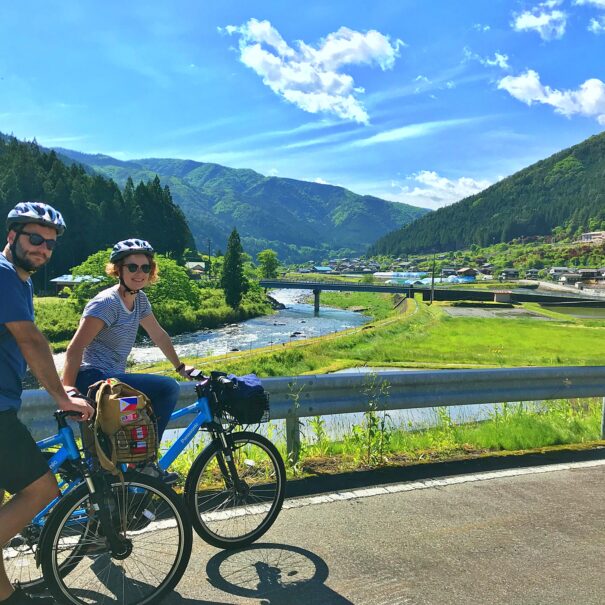
Maze E-Bike Tour
Best way to explore the rural Japan
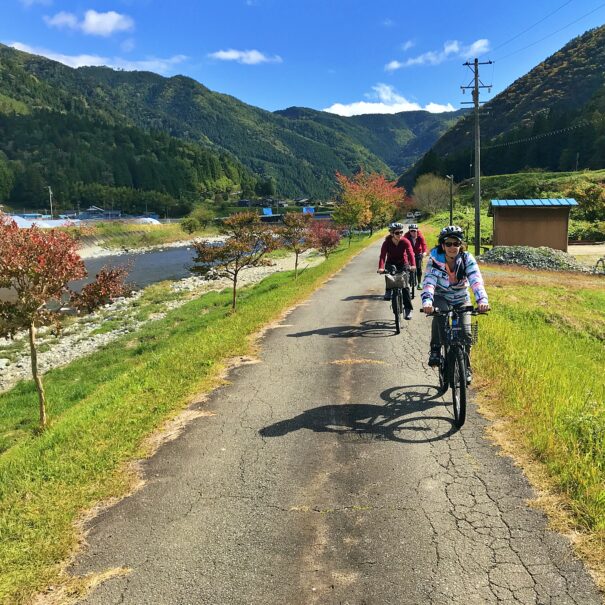
Maze E-Bike Tour – Half
Easy & quick trip to see the Japan's countryside
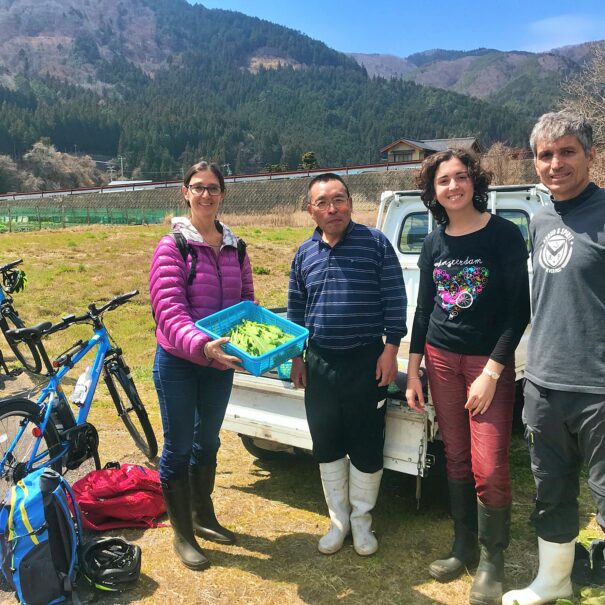
Maze E-Bike Tour – Premium
Private rural experience with the luxurious lunch
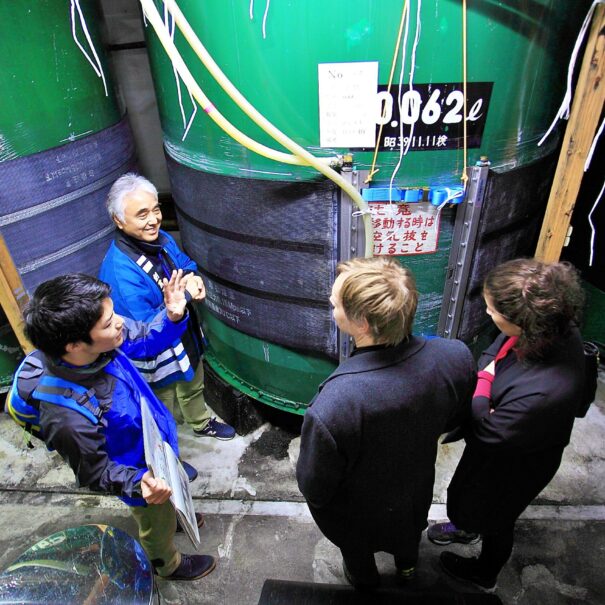
Hida Sake Brewery Tour
Privately see, feel, and taste sake inside the brewery
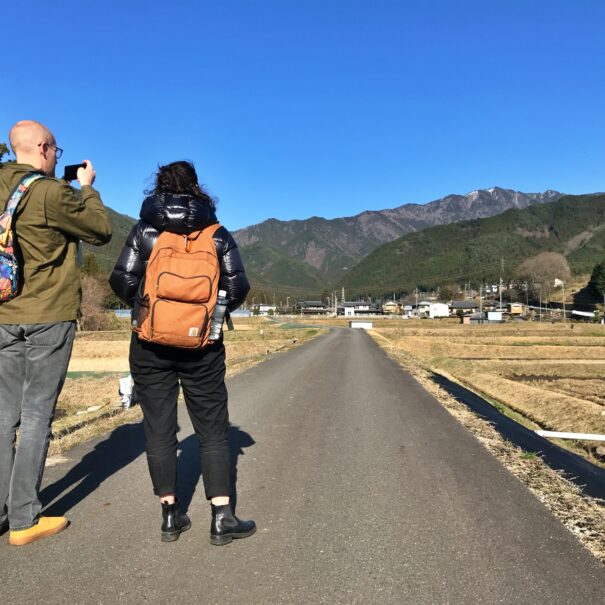

Hagiwara Rural Walking Tour
Relaxed walk to feel the local culture of rural Japan
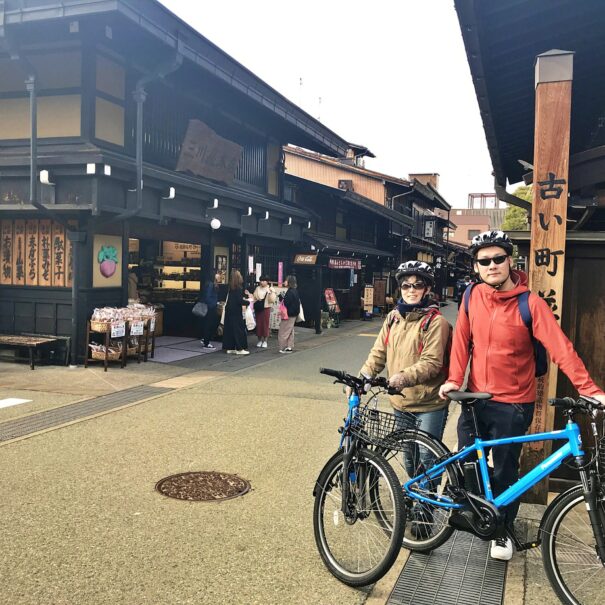
Takayama E-Bike Tour
Fantastic biking adventure from Takayama

UMESEKO TOUR
Oshinmachi 1-65, Takayama Gifu, Japan 506-0851
Mon-Sun: 9:00AM-4:00PM
Boutique Japan
Tokyo and the Japanese Countryside (6 Days)
A 6-day Japan itinerary featuring incredible food, charming backstreets, and a sublime selection of modern and traditional experiences.
This immersive private trip is designed especially for travelers who crave off-the-beaten-path experiences, amazing cuisine, and boutique accommodations.
Experience Tokyo from a local’s perspective, with insightful explorations, unforgettable outings, and mouthwatering meals. Then retreat to the countryside for an ultra-relaxing stay at a gorgeous traditional property where your worries will melt away.
Itinerary Highlights
- An immersive private itinerary, crafted with love by Boutique Japan
- Tokyo, one of the world’s most exciting — and surprisingly charming — cities
- A rejuvenating stay in the Japanese countryside
- Beautiful accommodations
- Unique private tours and experiences with fun and knowledgeable local experts
- Amazing food
- Seamless logistics and in-country transport
- Extensive pre-departure information to help you prepare for your trip
- Access to our in-depth Japan expertise, relationships, and firsthand experience
- A Japan specialist to answer your questions, and thoughtful customer service
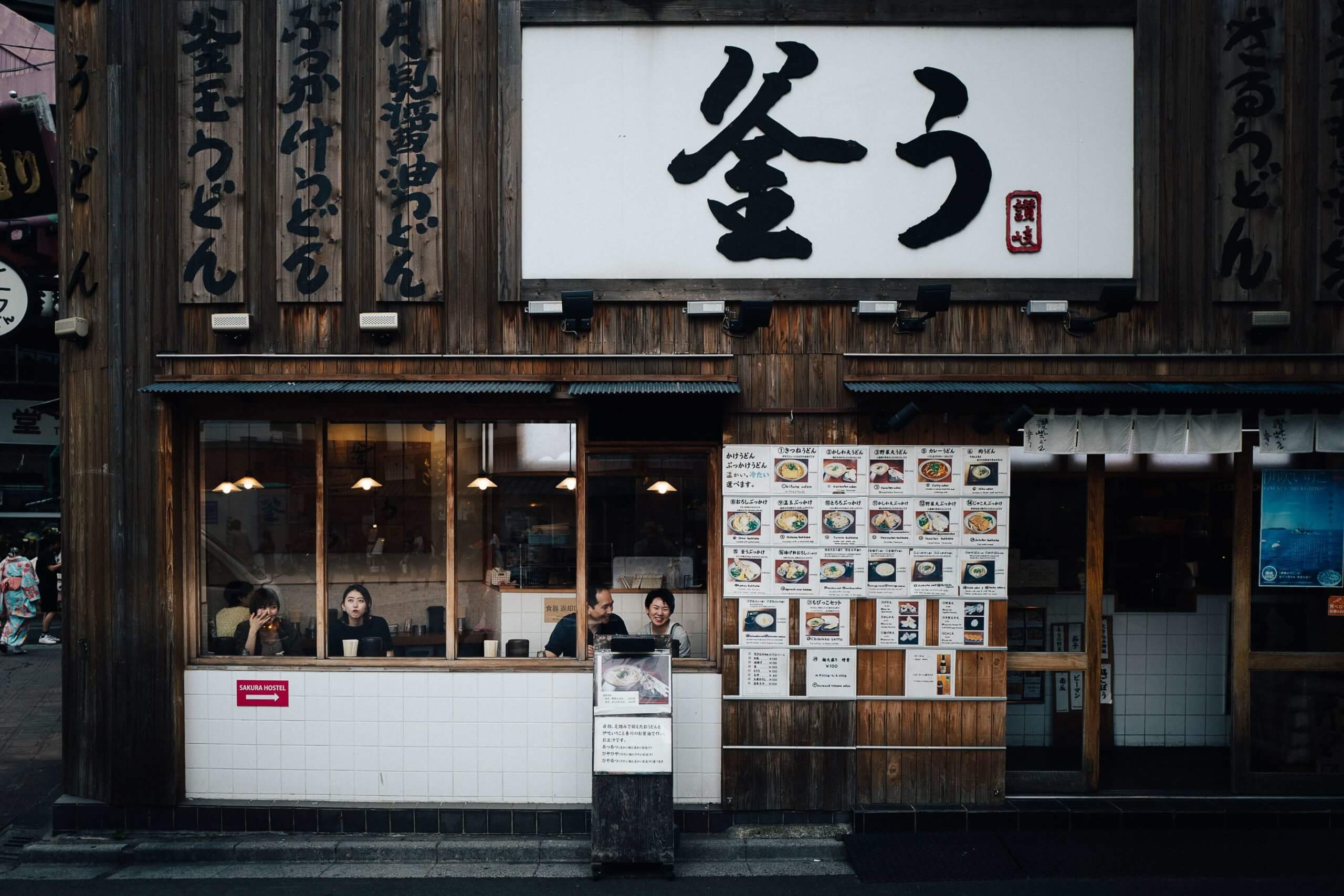
Effortless Planning
Unlike our usual custom trips , this is a set itinerary.
After all, some travelers relish the process of planning a custom trip, but many others love the simplicity of booking an amazing itinerary with the click of a button. All you need to do is decide when you’d like to visit (the trip is planned around your preferred travel dates).

Lee Munson, Albuquerque
My wife Alison and I found Boutique Japan while researching and planning our 20th anniversary trip. We are experienced travelers, but between busy work lives and kids, it had been a while since we had the chance to take a special trip together alone. We have wide-ranging interests and from the beginning realized that our… Read More
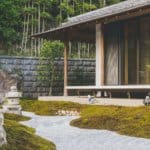
Susan & Frank, New York City
My experience with Boutique Japan couldn’t have been any better. From my initial conversation with Andres, through the back-and-forth about the itinerary with Piper, to the last-minute changes because of a typhoon hitting Japan, they were well-informed, thorough and responded quickly to questions and requests. They really listened when my husband and I described the… Read More

Judy Lau, Australia
Boutique Japan has made our trip to Japan brilliant and totally unforgettable. I have been to Japan many times, even studied there for some time. The experience from this trip is still right at the top of my list, in terms of accommodation, arrangement (everyone's happy!), and food (two thumbs up!!). Thank you very much… Read More

Andra Smith, Connecticut
We absolutely loved our trip. I fell in love with Tokyo and am secretly hoping I can convince my sister or friend to visit soon so I can go with them to see more of the neighborhoods we missed this time around. Each guide was very, very well-matched with the type of tour they gave.… Read More
Itinerary Overview
Fly into either of Tokyo’s airports, Narita (NRT) or Haneda (HND).
You can depart from either of Tokyo’s airports, or you may decide to spend additional time following the trip exploring Japan independently.
Day 1 : Arrive in Tokyo, Japan Day 2 : Markets and Cuisine, Neighborhood Strolls, and Izakaya Outing Day 3 : Old-Fashioned Tokyo Backstreets, Ramen Lunch, and High-End Sushi Reservations Day 4 : Off-the-Beaten-Path Cycling Tour, and Final Evening in Tokyo Day 5 : Tradition and Luxury in the Japanese Countryside* Day 6 : Relaxing Morning at Leisure, and Departure
*For your time in the countryside, choose between two lovely areas: the lush Izu Peninsula (pictured at top of page) or the coastal town of Kamakura (see Day 5 for details).

Itinerary Details
Day 1: arrive in tokyo, japan.
Welcome to Japan!
On arrival in Tokyo, you’ll be met and escorted to your private vehicle for the comfortable transfer from the airport to your stylish accommodations. Settle in, adjust to your exciting new surroundings, and get ready for your adventure ahead!
Depending on your flight’s scheduled arrival time we typically recommend keeping your first evening free, both in case of unexpected flight delays, and also to account for possible fatigue from the long journey.
Some people stay in after the flight to wake up re-energized the following morning, but in case you’d like to venture out we will include a short list of great suggestions, and the helpful staff at your hotel will also have insightful recommendations!
YOUR HOTEL IN TOKYO
Choose one of these small, stylish, and convenient hotel options for your stay in Tokyo:
- TRUNK Hotel Tokyo (Standard + Balcony Room)
- K5 Tokyo (Studio Loft Floor Room)

Day 2: Markets and Cuisine, Neighborhood Strolls, and Izakaya Outing
Ohayou gozaimasu (good morning)!
Today is your first full day to begin taking in the Tokyo metropolis. After a delicious breakfast at your hotel, you’ll meet up with your fun and knowledgeable private guide to begin your explorations.
What better place to start than Tokyo’s legendary Tsukiji Market , a must-visit for food and market lovers. While the wholesale section of the fish market moved to Toyosu in 2018, Tsukiji’s lively outer market — home to historic lanes and alleys packed with a colorful array of shops and small restaurants, not to mention atmosphere and charm to spare — remains an incredible place to immerse yourself in Japanese cuisine.
From Tsukiji, walk to the nearby Ginza district to pay a visit to a beautiful depachika (literally, “department store basement”), a dazzling food hall renowned for its gorgeous displays and breathtaking variety, including bento boxes filled with seasonal specialties, treats from Japan’s best patisseries, wagashi (Japanese sweets), and much more.
Following your morning explorations, your guide will take you to enjoy lunch at a casual yet charming restaurant offering fresh and delicious Japanese teishoku (lunch sets). After a healthy and filling lunch, your guide will direct you back to your hotel for some downtime.
You’ll have some time this afternoon to relax at your hotel and recover from any remaining jet lag you may have, or continue exploring independently. If you’d like to keep exploring without a break, you’ll also be able to take advantage of the pre-departure materials we provide you.
In the late afternoon, your guide will meet you once more and you’ll venture out on a great neighborhood stroll before dinner. Well beyond the urban clichés (think crowds and neon), Tokyo is full of quiet, stylish neighborhoods where you’ll find countless hidden gems in the form of attractive backstreets and wonderful little shops, cafes, and restaurants.
Begin your walk in Naka-Meguro, a neighborhood best known for its pleasant canal district. From here walk up to the adjacent Daikanyama area, a fashionable little district full of unique shops, including the stunning Daikanyama T-Site.
End by strolling into the nearby Ebisu neighborhood, legendary in Tokyo for its lively small bars and restaurants. Here you’ll drink and dine with your guide at a casual and authentic izakaya , where you can enjoy a quintessential Japanese-style atmosphere, and sample a delicious and eclectic variety of Japanese food and drink.

Keri and Marvin, Los Angeles
We really had a terrific trip! Can't thank you enough for the thoughtful planning and recommendations along the way. From Naoshima for the guys (a huge highlight), to the magical Kyoto of temples, bamboo forests and geishas, to sumo in Osaka, through the restful ryokan and walking around Shuzenji Onsen on a rainy day, and… Read More
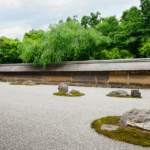
Ithka Laws & David Gabrovec, Abu Dhabi
My amazing husband worked with Boutique Japan (behind my back!) to help put together the most amazing surprise birthday trip ever. Having had the benefit of not doing any of the work but only enjoying the experience, I have to say there could not have been a more perfectly planned trip. Boutique Japan was incredibly… Read More

Kellie T., Wisconsin
I just want to thank everyone at Boutique Japan, because this was truly a trip of a lifetime! I could not have done it without all your help. I just can’t believe how meticulously coordinated everything was and the incredible thoughtfulness and kindness from all of you, my guides, hotel/ryokan staff, and everyone I met… Read More
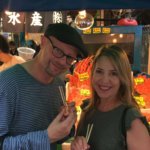
Bobby Wollman, Los Angeles
Our trip was so perfect from initially working with Roni and then Piper and the rest of the team. The travel arrangements were awesome and communicated so very clearly. The Axus app was terrific. Every time I thought about what to do somewhere (when there was time) the answer came (as if you knew that's… Read More
Day 3: Old-Fashioned Tokyo Backstreets, Ramen Lunch, and High-End Sushi Reservations
After breakfast at your hotel, your guide will meet you and you’ll head to the historic Asakusa district, best known as home to Tokyo’s oldest temple, Senso-ji. After paying a visit to the impressive temple, leave the crowds to explore the area’s vibrant backstreets, filled with old-school kissaten (coffee shops) and retro Tokyo charm.
Continue to Yanaka. Largely spared during World War II, Yanaka is a beautiful and well-preserved old neighborhood. Today it is home to quaint streets, small temples and shrines, traditional mom-and-pop shops selling Japanese sweets and rice crackers, and up-and-coming galleries and cafes run by young creatives.
Finally, walk into nearby Ueno, a bustling yet old-fashioned district best known for Ueno Park and its various museums. End your stroll at Ameyoko-cho, a boisterous open-air marketplace where you can find everything from fresh fruit and seafood, to clothing shops and yakitori stalls.
From here you’ll head with your guide to a spectacular little ramen shop for lunch. Afterwards, your guide will direct you back to your hotel for some downtime, or elsewhere in the city if you’d prefer to keep exploring. After an afternoon at leisure — with ideas on how to spend your time from our pre-departure materials and your guide — this evening prepare for a splendid sushi dinner.
A quintessential Tokyo experience, for tonight we’ll be making special reservations for you at a fantastic sushi-ya (sushi shop), where you can enjoy spectacular cuisine in unpretentious (and non-touristy) surroundings, dining at the intimate counter of an unsung sushi master. For this sublime experience, you will simply need to pay on the day (we will select a sushi shop that matches your preferred budget range for this evening).
Following dinner, make your way back to your hotel, or head out on your own to enjoy more of Tokyo’s legendary nightlife!

Day 4: Off-the-Beaten-Path Cycling Tour, and Final Evening in Tokyo
With your final full day in Tokyo, you’ll have the chance to explore yet another fascinating side of this rich and layered city.
In the late morning, you’ll meet your private cycling guide (urban cycling experience not required!). After being fitted for your bicycle and helmet, you’ll embark on a leisurely cycling tour, winding your way slowly through the quiet backstreets of delightful, off-the-beaten-path neighborhoods where tourists are rarely seen.
Prefer not to cycle? This cycling experience can be swapped out instead for a private walking tour taking in an irresistible mix of backstreets featuring marvelous vintage or antiques shops.
End at a local favorite lunch spot specializing in tonkatsu . Afterwards, you’ll have the remainder of your final day in Tokyo at leisure.
You may choose to visit any remaining neighborhoods, places, or museums of interest; sample any other culinary specialties on your personal must-eat list; or while away a few memorable hours checking out only-in-Tokyo shops and boutiques (don’t forget to leave some space in your luggage!).

Day 5: Tradition and Luxury in the Japanese Countryside
After a few thrilling days exploring the many charms of Tokyo, today you’ll get away from it all with a luxurious stay in rural Japan. But first, enjoy one last lovely breakfast at your hotel.
In the late morning, your private driver will meet you to take you to the station. At the massive station your private escort will lead the way, dropping you off right at your impeccably clean train, where you’ll take your comfortable seats for the journey.
(As you know if you’ve been to Japan, riding the trains is an experience in and of itself. The cleanliness, the speed and efficiency, the etiquette — and the pleasure of watching the landscape speed by.)
Before you know it, you’ve arrived. Right as you step off the train, you’ll be greeted by your driver and escorted to your private vehicle. Shortly thereafter you’ll arrive at your destination: a stunning traditional property with gorgeous Japanese aesthetics.
Step inside, where you’ll exchange your shoes for slippers and be led into your beautiful Japanese room. After making sure you’re comfortable and serving you tea, staff will leave you to settle into your serene surroundings.
Shed your street clothes and put on your traditional yukata . Savor a healing soak in the aromatic wooden bath, kick back with a book, or head for a leisurely stroll around the property and surrounding area.
Following an afternoon of pure relaxation, prepare for a magnificent multi-course dinner, another essential ingredient of the countryside experience.
After dinner, enjoy a drink, or simply unwind and breathe in your rejuvenating surroundings before a restful evening.
YOUR LOVELY TRADITIONAL ACCOMMODATIONS
For your rural stay, choose one of these traditional yet forward-thinking Japanese-style properties within easy reach of Tokyo, where you can savor tranquil surroundings and quintessential Japanese hospitality:
- Asaba (Japanese-Style Room with Hot Springs), located in the lush Izu Peninsula (~2 hours from Tokyo)
- Kishi-ke (Luxury Private Villa), located in the coastal town of Kamakura (~1 hour from Tokyo). Please note that this property specializes in elegant plant-based cuisine.

Day 6: Relaxing Morning at Leisure, and Departure
Today marks the conclusion of your travels with us. You’ll be free until departure to luxuriate in your idyllic surroundings and enjoy a beautiful breakfast.
When it’s time to depart, you’ll be transferred back to the station for your journey by rail back to Tokyo. Back in Tokyo you’ll be met on arrival for your private transfer to your departure airport.
Please Note: If you plan to spend additional time exploring Japan independently, we will adjust today’s transport accordingly.

Eric K., Washington, DC
We had a terrific trip and are thankful to you and the team for a fantastic job. We loved your approach to everything, the attention to details, the responsiveness to our requests and the excellent trip that resulted from all of that. We’ll be very happy to refer friends to you, as we have several… Read More

Casey & TJ, New York City
Boutique Japan designed the perfect luxury honeymoon. Organizing a trip can be a challenging task, so we were thrilled to find someone as knowledgeable and easy to work with. We were consistently impressed with the attention to detail in each element of the journey. Boutique Japan exceeded our expectations. From booking truly impressive accommodations to… Read More
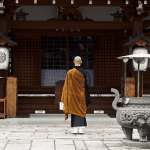
Tessa Scher, Cape Town
We have just returned from an outstanding 19-day holiday in Japan thanks to Boutique Japan. I cannot recommend this travel company highly enough. From the beginning to the end their service, attention to detail, advice and support were incredible. We have traveled extensively but Boutique Japan is by far the best travel agency that we… Read More
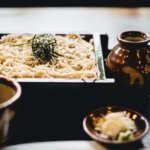
Janet C., Switzerland
I hardly have the words to say how wonderful the trip was. My time on Naoshima, Teshima and Shikoku were wonderful and I had many experiences that I don’t have enough superlatives for. The guide and driver were so nice and fun to be with and the people I met along the way were memorable.… Read More
More Details and How to Book
Price per person is based on double occupancy. If you have a different party size, just let us know when inquiring.
This is a private trip, planned around your preferred travel dates. Because we work with small boutique properties, and top private guides, availability is limited.
Simply complete the form, letting us know your dates, and we will proceed to confirm availability. If your dates are flexible (or not yet set), just indicate approximate dates and we can take it from there.
After we’ve confirmed availability for your dates, a deposit of US $1,000 per person will be due to confirm your services.
Please note: This itinerary is for informational purposes only and not currently available. For our main offerings, please refer to our sample itineraries .

What’s Included
- Immersive, one-of-a-kind itinerary crafted with love by Boutique Japan, designed through our in-depth Japan expertise, relationships, and firsthand experience
- Accommodations as indicated
- Daily breakfast at accommodations
- Lunch on days 2, 3, and 4
- Dinner on days 2 and 5
- Private tour of Tsukiji and Ginza as indicated (including lunch)
- Private tour of Naka-Meguro, Daikanyama, and Ebisu as indicated (including dinner)
- Private tour of Asakusa, Yanaka, and Ueno as indicated (including lunch)
- Private cycling (or walking) tour as indicated (including lunch)
- Private transfer from arrival airport in Tokyo to hotel
- IC transport cards pre-filled with 3,500 JPY (about 35 USD) of initial credit
- Travels from Tokyo to countryside as indicated (round-trip)
- Private transfer to departure airport in Tokyo
- Expertly-planned logistics for peace of mind and convenience
- Pre-departure materials featuring free-time ideas ranging from recommended neighborhoods to explore to sights worth seeing, as well as fantastic places to eat and drink
- Extensive Japan-specific travel tips including advice on money, packing, etiquette, tipping, Wi-Fi, language, food, and more
Not Included
- Services or arrangements before or after the trip
- Flights (while we don’t book flights in-house, we can provide input on airlines, routes, etc.)
- Tours, experiences, meals, or any other services other than those specified
- Personal expenses such as, but not limited to, drinks (e.g., coffee, alcohol, etc.), snacks, laundry, luggage forwarding, visa fees, etc.
- Travel insurance
- Charges incurred as a result of changes beyond the control of Boutique Japan
- Any other services not specified
“Zuleta’s Boutique Japan is a small company that eschews volume and spends more time customizing each trip to offer travelers a fresh, creative approach to Japan – something that discerning travelers seek out after learning of Zuleta’s deep immersion into the Japanese language and culture from years of living in Tokyo, Kyoto and Osaka.” — Condé Nast Traveler
At Boutique Japan, we have unusually high standards when it comes to private guides. After all, few things in travel are more disappointing than a boring guide.
Even though there are plenty of guides throughout Japan, very few meet our standards, and we’ve personally developed a network of amazing guides and local experts around the country. It’s about far more than just having knowledge: we seek out truly engaging individuals who are not only bright and knowledgeable, but also fun and flexible.
As part of your trip, transport during tours and outings will be a combination of walking, public transit, and taxis. Tokyo is extremely well connected by its outstanding trains and subways, taxis are wonderfully clean and efficient, and the city is also surprisingly walkable despite its size.
To give you the best possible experience by giving your guides the freedom to tailor things to you in real time, transport costs during tours and outings are not pre-included. This provides an added degree of flexibility: for example, you may decide to walk if the weather is particularly nice, or take a taxi if you want to give your feet a rest.
We’ll be happy to help if you have any questions, please just contact us .
Plan Your Japan Trip
Learn more and contact us to discuss your unique trip.
Get Started
- The Process
- Testimonials
- +61 7 3368 1966
Remote Japan Tours in Japan
Home / Small Group Tours /
Rural and Remote Tours of Japan
The 2024 & 2025 Remote Japan Tours will let you discover Japan’s hidden rituals, unspoiled spectacular scenery and delightful local people.
Japan is so much more than Tokyo, Kyoto, Takayama and Hiroshima. There are so many hidden gems and unexplored destinations in Japan’s countryside. Rural travel in Japan is expected to be even more popular in 2024 & 2025. Journey to the East has conducted extensive research and site visits, and is best placed to take you on a holiday in rural Japan. Experience the wonderful surprises of being off the beaten path and beyond the commonplace tourist stops.
You will feel the warm hospitality of local people in remote and rural areas of Japan such as Kyushu, Hokkaido, Shikoku, Hokuriku, the west coast of Honshu, or in Tohoku, the northern part of Honshu.
You may not find cappuccino at breakfast, a convenience store at every corner or western style hotels and western restaurants in town. However, you are likely meet giggling school children on a way to school, friendly farmers happy to share fresh harvest with you or devout pilgrims at a sacred mountain; all the things that will create the best memories of touring Japan.
The range of themes from cherry blossoms to food and walking offer exceptional exposure to Japan’s amazingly pristine nature, rural villages and countryside scenery. They will reward you with life-long memories.
For something special and unusual taking one of the remote and rural tours of Japan definitely the way to go.
Signature Our Signature tours offer the most comprehensive cultural exposure.
Discovery Our Discovery tours provide up-and-close encounters with traditional life and natural landscapes into the more remote regions of Japan.
Comfort With a focus on comfort and ease, our Comfort tours deliver an authentic experience with a few extra creature comforts to make for a more relaxed and supported trip.
Spring (Mar – May)
Summer (Jun – Aug)
Autumn (Sep – Nov)
Winter (Dec – Feb)
14 day tour
2024 white christmas tour of japan, 13 day tour, 2025 snow spectacular tour of japan, 2025 cherry blossom tour of northern japan, 2025 food and cherry blossom tour of kyushu, japan, 2025 artisan tour of kyushu japan, 11 day tour, 2025 walking tour of nakasendo and takayama, 2025 autumn tour of northern japan, 12 day tour, 2025 autumn tour of japan’s wild west, 2025 spiritual walks of northern japan, more about japan, remote japan tours features, why travel with us, accommodation styles, related articles.
The Remote Japan tours are tours that may also appear under different sections (Autumn, Food, Walking etc). These trips are listed as Remote Japan Tours because they operate predominantly in parts of Japan that are not typically visited by large numbers of tourists or offer some unusual experiences peculiar to remote parts of Japan.
At Journey to the East we are committed to providing authentic and most memorable experiences in Japan – for both Small Group Tours and custom-built Private Tours. Whether it is your first visit or you have been several times to Japan, you will always find something new and have special experiences with Journey to the East. Our travel style is chosen to immerse you in the culture and landscape of the country and expose you to a rich variety of unique experiences.
We do this by taking you beyond the tourist hotspots to explore the lesser-known parts of Japan. Our tours are designed to strike the right balance between the classic highlights and local secrets, the urban and the rural, the historic and the contemporary, and in doing so, reveal the true heart of Japan.
With Journey to the East, you will have fun and be safe on your deeply rewarding journey through this endlessly fascinating country!
We are specialists that just handle tours within one country, Japan. Whether you are from the USA, Canada, UK, Australia, New Zealand or beyond we meet you at the airport upon arrival into Japan and ensure a smooth and stress-free time in a foreign land.
Ryokans is a Japanese style accommodation, mostly consists of Japanese style rooms with tatami matt floor and futon bedding, and private ensuite. Some ryokans have a western style room with beds. A Japanese style room always has a low table and flat cushions to sit on, but the room may or may not have chairs. Most ryokans have an additional large public bath for guests and includes kaiseki style dinner. Breakfast can be Japanese style (rice, miso soup, fish etc.) or western style buffet.
Western Style Hotels
Size and standard vary from 5-star large international chains to regional small business hotels. Generally, in Japan twin rooms (two single beds) are more common than double rooms (one double bed), and some hotels in regional cities only have twin rooms. Room sizes are generally smaller in cities. Also beds and pillows tend to be firmer than those in western countries.
Shukubo (temple lodging)
The vast majority have Japanese style rooms and shared bathroom although there are limited number of temples with a western bedroom with ensuite. The stay at shukubo includes Buddhist vegetarian dinner and breakfast. Dinners are served early, around 5pm. They are run by monks, and facility and services are basic. Guests can attend morning service in the main hall.
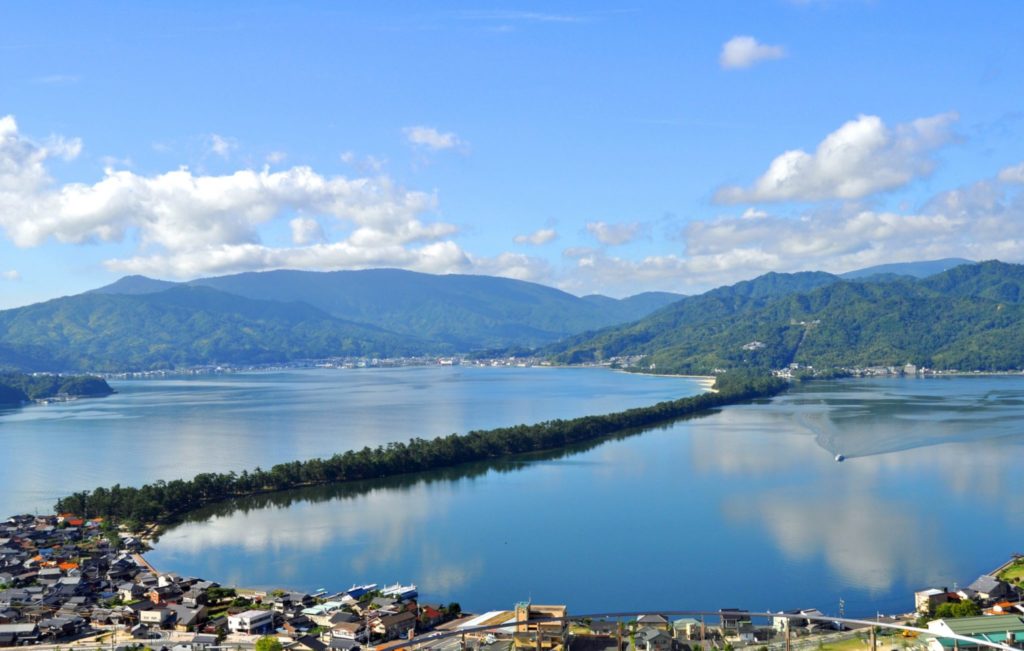
Northern Kansai Region of Japan
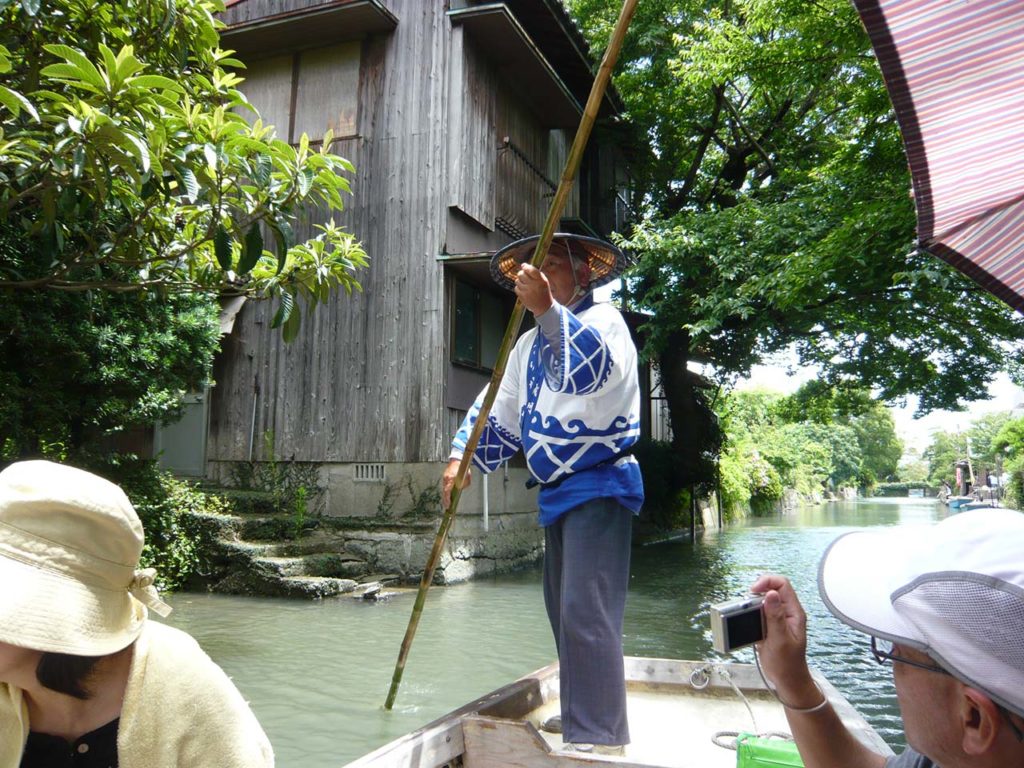
Kyushu – Less travelled path
Get in touch and book your next trip with journey to the east, privacy overview.
Countryside Stay Japan

Considering a trip to Japan? If you’re looking for a new way to experience Japan, ...
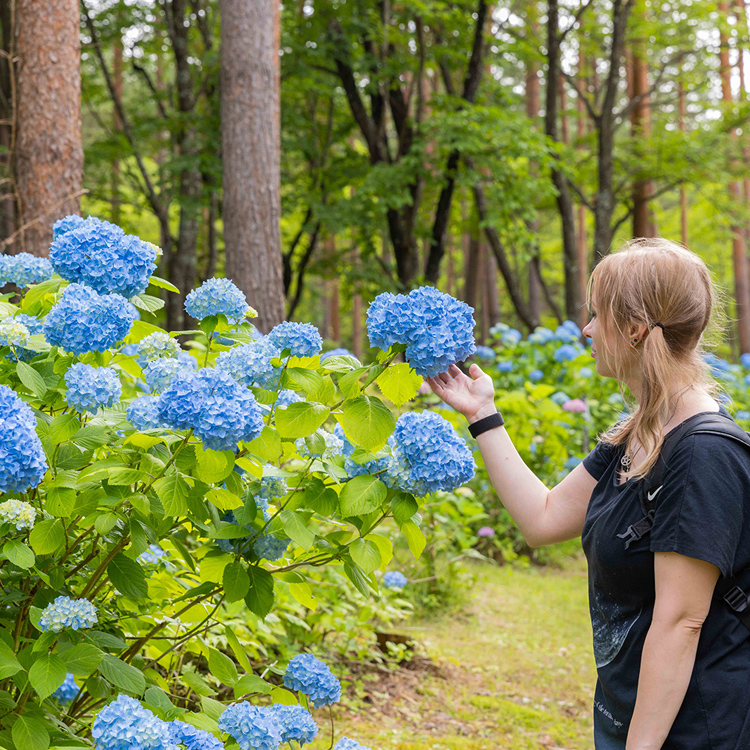
Experience the Mesmerizing Nature of Remote Tohoku and Venture into a National Park!

Immerse Yourself in Farming Culture and Local Crafts with a Night in a Historical Landmark

Farm stays, a samurai district, and over 10,000 wintering cranes in Izumi, Kagoshima
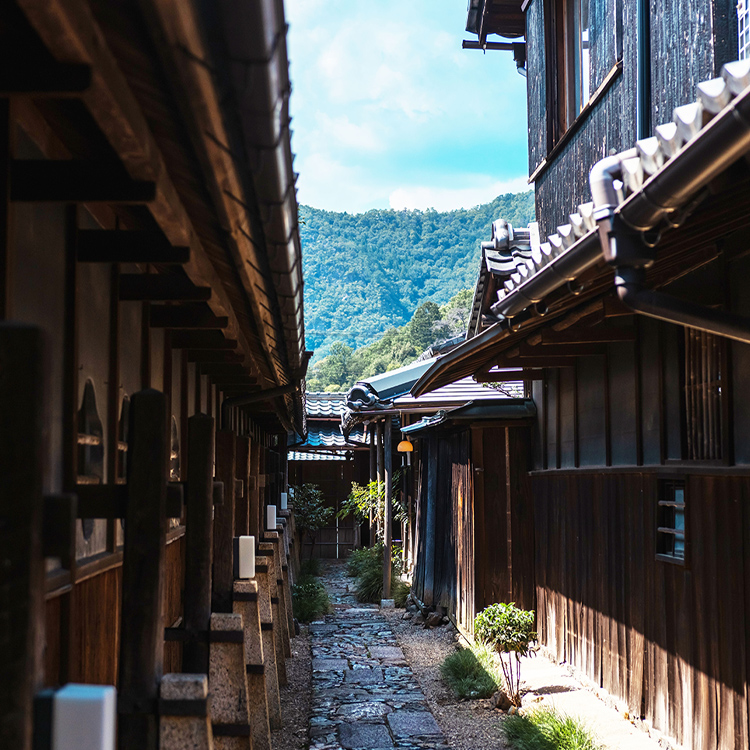
Mino’s Paper Culture Flows Through the Interior of NIPPONIA Mino Shokamachi
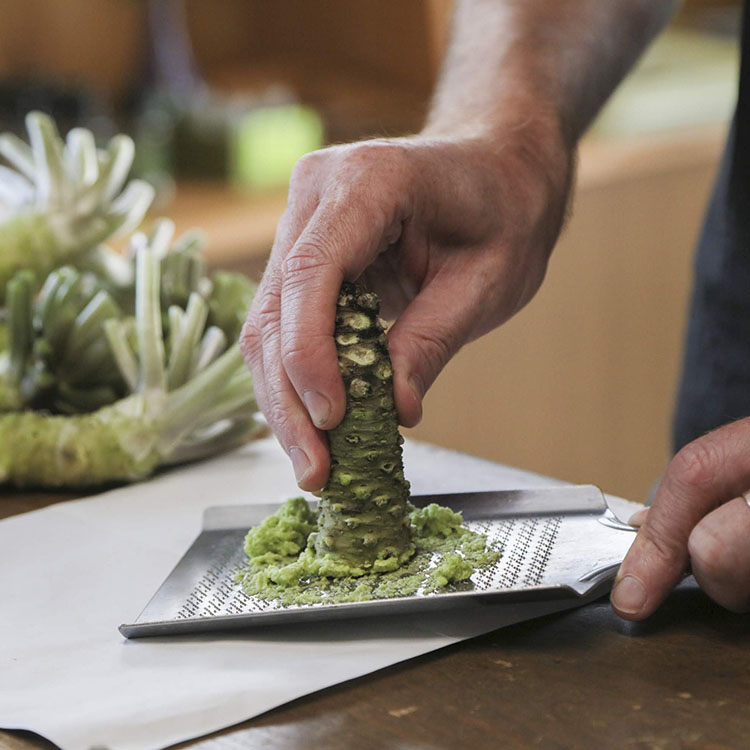
Gain new perspectives on Japanese food and drink - Shizuoka-style
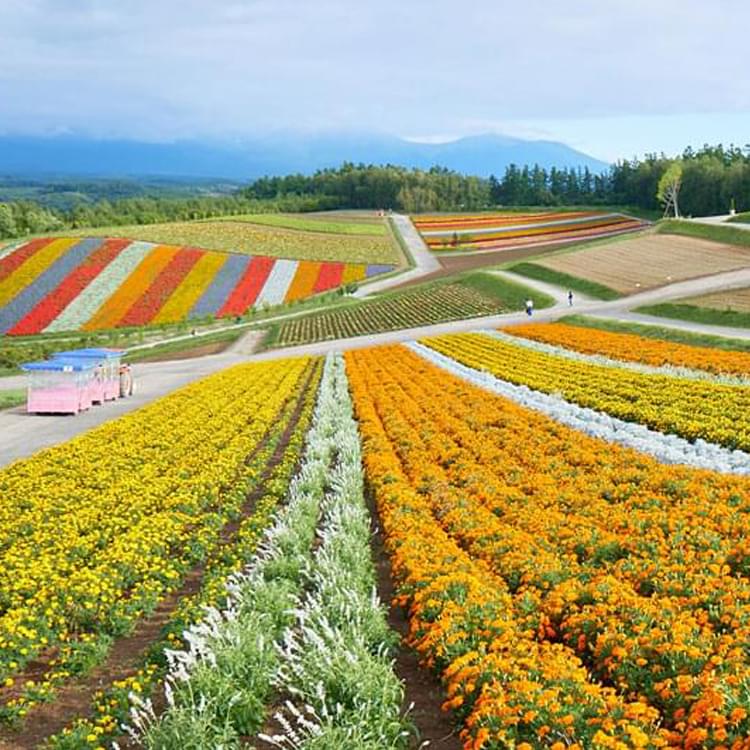
Blue Water, Rolling Hills, and a Patchwork of Color: Biei in Hokkaido

Beautiful Countryside Steeped in History and Tradition: Ichinoseki in Iwate Prefecture
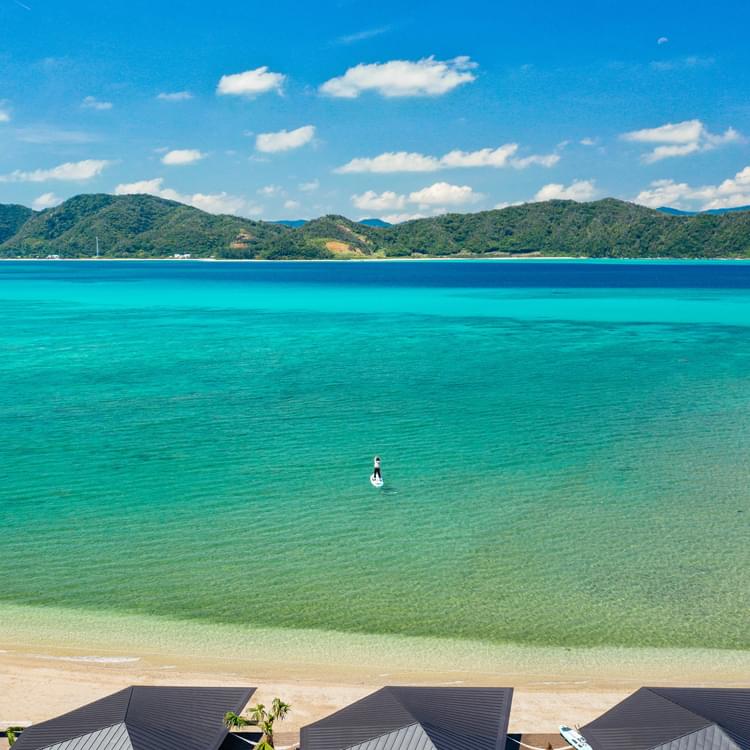
Experience the Amami-Blue ocean and the island's unique culture with the islanders: Amami City, Kagoshima Prefecture
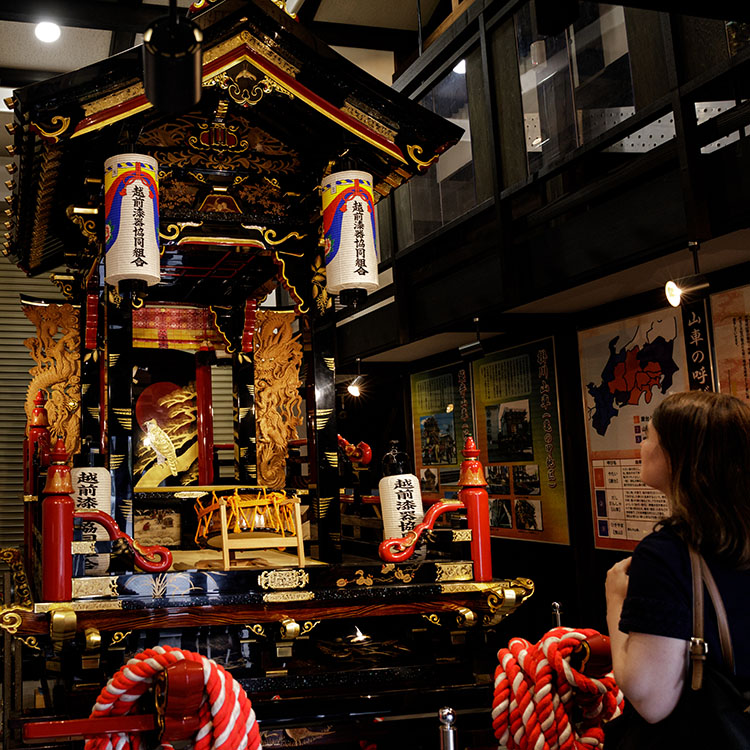
Learn about the history of lacquerware, expand your knowledge of traditional Japanese culture in Sabae, Fukui
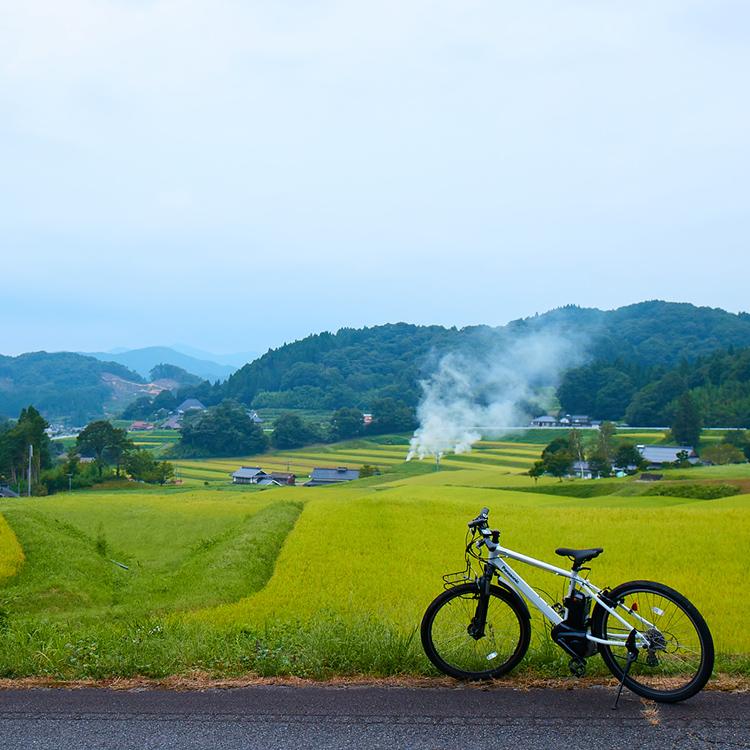
Find Peace in the Halcyon Hills and Valleys of Rural Hiroshima

Search by Movie
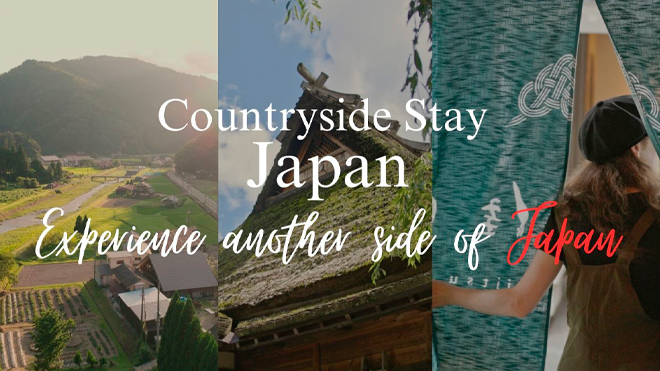
Destinations
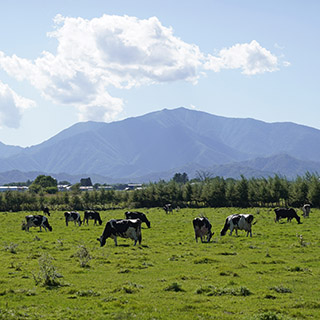
Enjoy rural relaxation, local interaction, and hands-on food experiences in Obihiro/Tokachi, Hokkaido
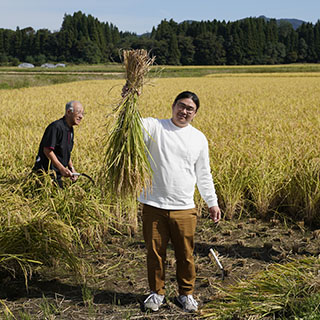
Learn a 400-year-old local craft, ride open-air through the countryside, and share daily life with locals in Odate, Akita
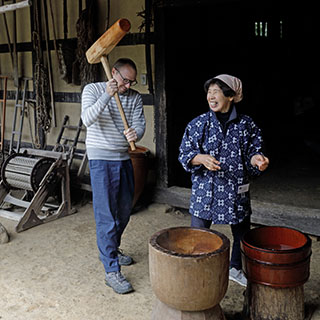
Traditional experiences, soul food, and folklore in Iwate, northern Japan
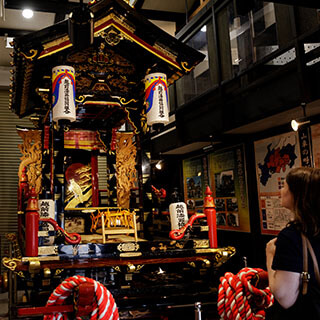
Enjoy lakeside relaxation, soba noodles, and agricultural heritage in the rural town of Shinano, Nagano

Wine, fruits, and pastoral delights in Yamanashi's Koshu Valley
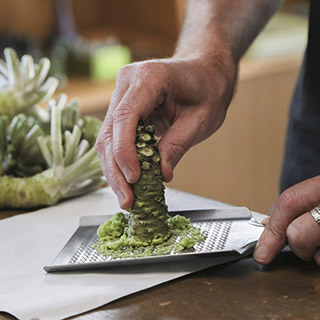
Forged from silver and community spirit-explore an area of history, tradition, and modern living in Shimane, Japan

Laidback, active and luxurious - experience the many sides of Shodoshima Island, Kagawa

Search by Map
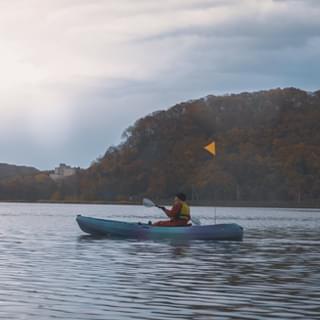
Abashiri in Hokkaido: Stunning Autumnal scenery, delicious Hokkaido cuisine, and fascinating Indigenous history
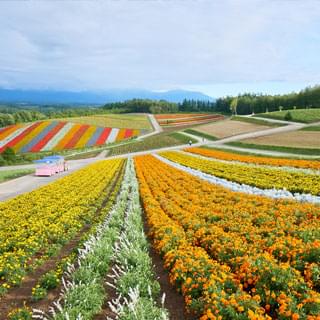
Camping, fishing, and hiking-get active on one of Hokkaido's remote islands
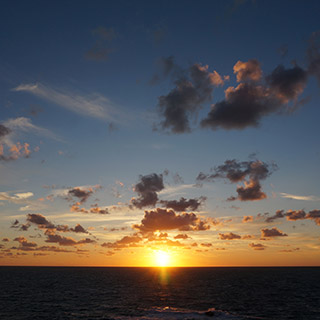
Sunsets, sake, and sushi in Japan's great outdoors

Explore Japan's wild north with a trip to the village of Tsurui in Hokkaido
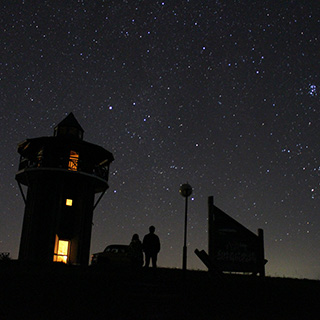
Enjoy hands-on farm tours and spectacular night skies in southern Hokkaido
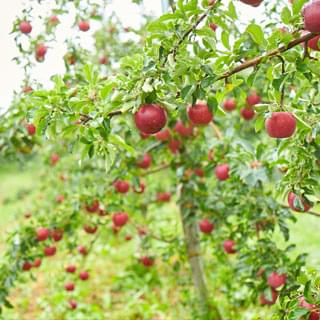
A Seaside Spot and Fruit Lover’s Paradise: Yoichi in Hokkaido

Attend a nature school, hike through lush forests in the Shirakami Mountains

Experience rugged coastlines, soaring peaks, and paddleboarding in Kamaishi City
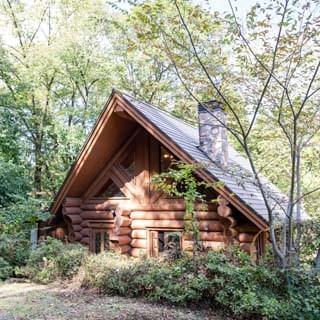
Your own Personal Wellness Retreat in Zao: Private hot-spring cabins, Japanese pork on the BBQ, and crafting with local nature

Experience Rural Japan Deep in the Countryside of Nagaoka, Niigata
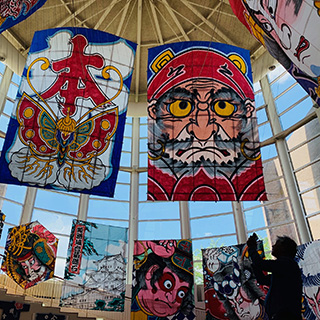
Modern guesthouses, fighting kites, and fresh fruit on the west coast of Japan

Rural beauty and contemporary art in Tokamachi
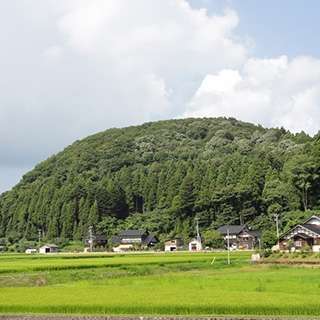
Stay in a century-old guesthouse; steep yourself in local culture in Shunran-no-Sato

Immerse yourself in the centuries-old artisanal culture of Echizen

Experience 'Shimi (natural freeze-drying)' food culture in a rural retreat surrounded by mountains: Chino City, Nagano Prefecture

Rest and Relaxation in Rural Japan: Iiyama in Nagano Prefecture
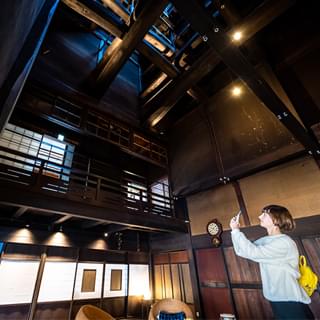
Take a trip to a 100-year-old traditional house in Shiga, where the beauty of the satoyama remains: Matsumoto City, Nagano Prefecture
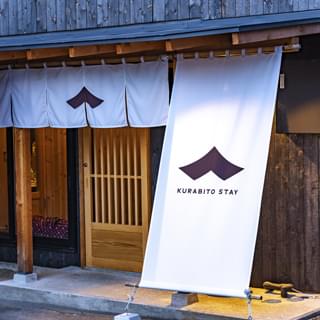
Become a Master Sake Brewer in Saku:A firsthand look at brewery life, Saku’s history, and the shrine that ties it all together
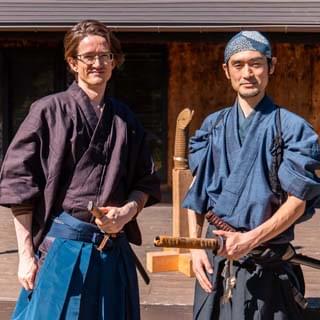
Keeping the Samurai Spirit Alive in Fujino: Learn the “way of the warrior”, polish your sensibilities, and recharge with local produce barbequed on the hearth

Grab your surfboard and hit some of Japan's best waves

Discover the charm of food nurtured in a region blessed with plentiful water and natural greenery: Katori City, Chiba Prefecture.
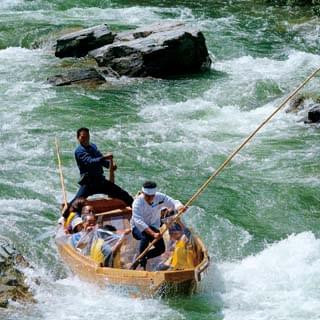
Escape in an instant to Chichibu: The idyllic countryside retreat for adventure, rustic relaxation, and the food of champions in easy reach of Tokyo
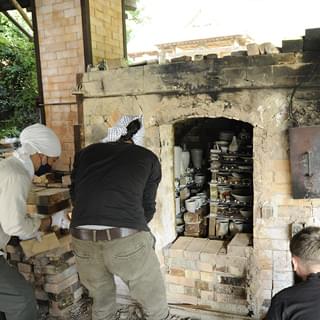
Experience local art and food in one of the best 'ceramic villages' in Japan: Mashiko-machi, Tochigi Prefecture
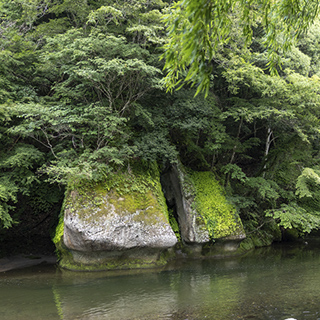
Relax in traditional comfort and harvest wasabi in Yamanashi Prefecture
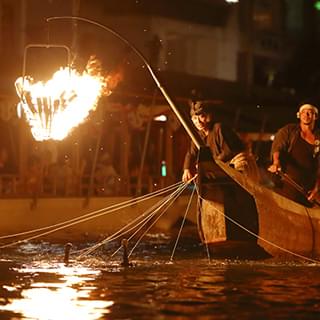
A close-up look at Japanese culture through Ukai, a traditional fishing method that has been practiced for 1,300 years in Gifu City, Gifu Prefecture
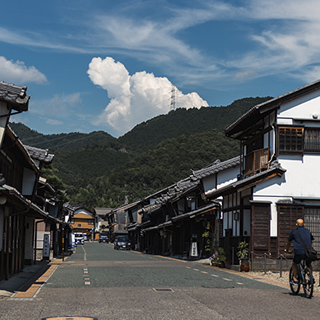
Explore beautiful scenery, centuries-old crafts in Toyota
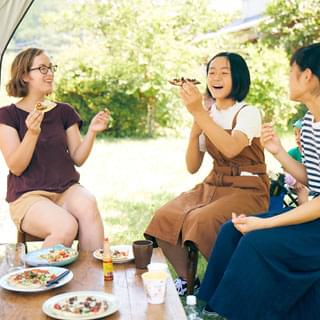
A Natural Retreat Just a Stone’s Throw from Kyoto and Nagoya: Hakusan-cho in Mie Prefecture
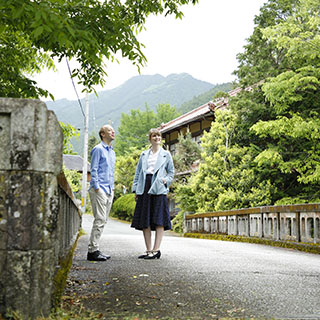
Discover tranquil forest paths, historic walks, and straw craft in a remote Japanese village

Spiritual Heights in Taiki: World-class Wagyu beef, historic hiking trails, and serene cycling

Discover Toba’s Female Free Divers on a One-Day Ama-Diver Tour
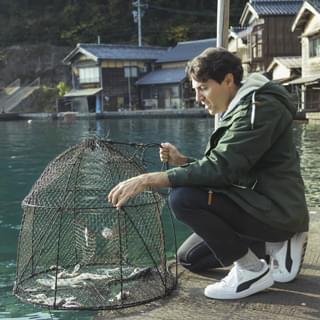
Live the Fisher’s Life in Idyllic Ine: Stay in a traditional bayside boathouse, and discover a unique way of life shaped by the waves
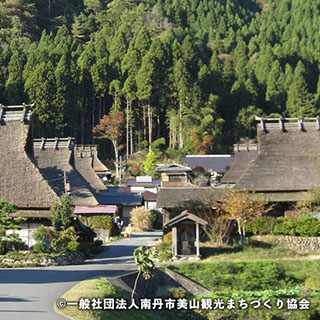
Kyoto thatched-roof dwellings transport you back in time
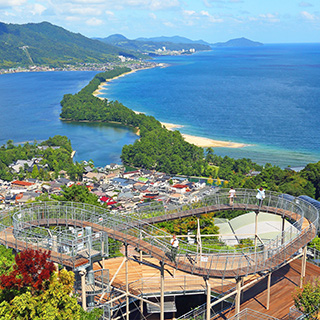
Enjoy incredible views of the Japan Sea; visit an idyllic Kyoto fishing village

Enjoy the Quiet Beauty of Kyoto’s Countryside: Fukuchiyama and Ayabe in Kyoto Prefecture
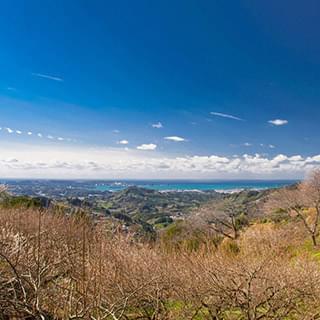
Green tourism and spiritual tradition in Kamiakizu

Enjoy the old houses that retain the atmosphere of a lodging district and satoyama landscape with all your senses: Yakage-cho, Okayama Prefecture
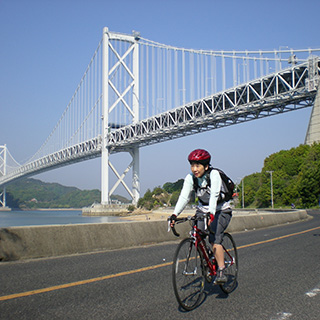
Explore natural beauty and scenic cycling in Onomichi, Hiroshima

Enjoy breathtaking views, pristine beaches in Mitoyo, Kagawa Prefecture

Cycle around the stunning Seto Inland Sea; enjoy hands-on activities on a farm
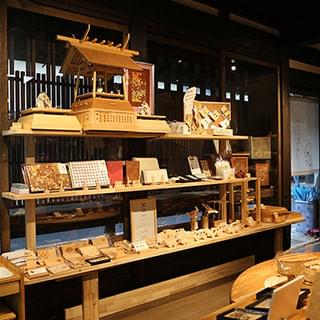
Traditional inns, crafts, and kabuki thrive in small-town Japan
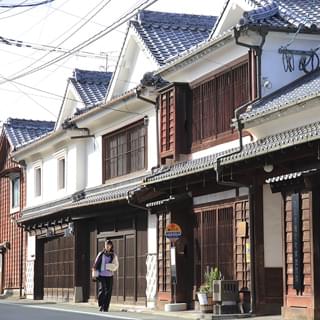
Visit white-walled Streets and cherish beautiful crafts: Yame City, Fukuoka Prefecture
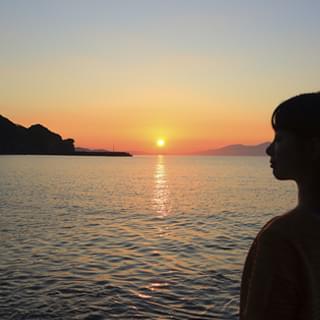
Spend a beautiful moonlit night and wake up with the sunrise over Tachibana Bay: Mogi, Nagasaki City, Nagasaki Prefecture

Tradition and outdoor activities in Nagasaki’s forested city
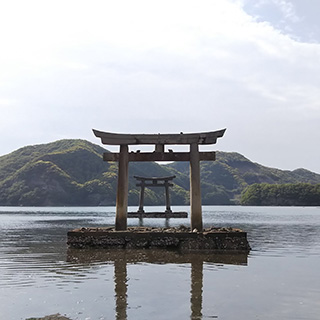
Refresh mind and body on a history-steeped island
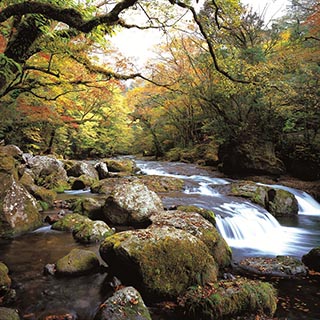
Discover hot springs and a spectacular gorge in the rural heart of Kyushu

Outdoor sports and local delicacies in Miyazaki's UNESCO biosphere reserves
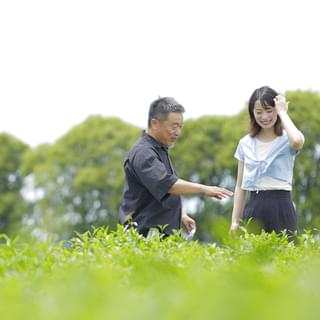
Peacefully savor the bounty of the land in a town devoted to tea: Shintomi-cho, Miyazaki City, Miyazaki Prefecture
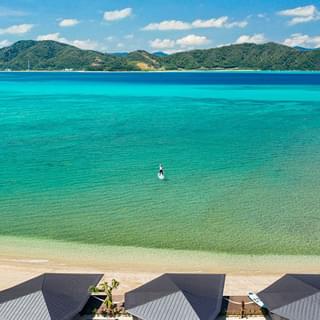
Amami Oshima offers splendid scenery, unique cuisine
Experience type, unique experiences, hands-on food, hands-on farming, tradition & culture, easy from tokyo, easy from osaka, outdoor activities, hot springs, nature & scenery, winery tours, search by photo.
small group, countryside tours of Japan
Small-group, off-the-beaten path tours of japan.
- Tours & Experiences
- Tailor-made Trips
- Bahasa Indonesia
We are happy to see you again!
Continue with
Or use email.
No Account? Create one
Create account
Already have an account? Sign in
Quickly Sign up with
I agree to Japan Travel's Terms of Service and Privacy Policy . Terms of--> and acknowledge that Japan Travel's Privacy--> applies to me.-->
Email reset password link
Please check your inbox and click the link we will send to you.
- Accommodation
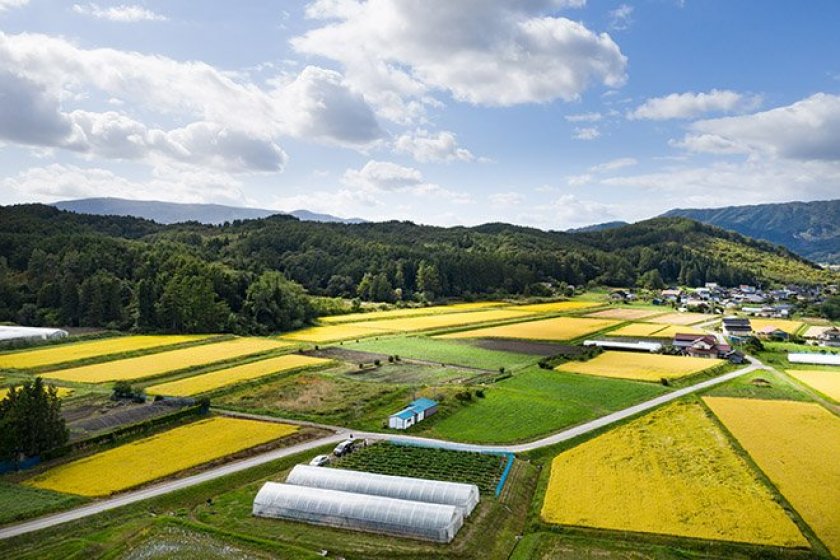
Top 10 Traditional Stays in Rural Japan
Discover a new way of life in the lush countryside

With the busyness of modern life, it’s easy to get caught up in a monotonous cycle of living–always looking forward or ruminating on the past, instead of living in the present.
Japan’s countryside, much of which is frozen in times past, is the perfect environment to pause and look inward. The abundant nature, traditional agricultural lifestyles, authentic people, and cultural opportunities offer invaluable memories built upon new perspectives. Whether you are harvesting local produce, cooking with a friendly stranger, or exploring a new neighborhood, it is difficult to be anywhere, but the present.
Listed below are ten traditional lodging experiences that are guaranteed to stay with you long after you leave.
Farm Guesthouse Agriturisimo Omori
Our first stop is Farm Guesthouse Agriturismo Omori in Tono, Iwate Prefecture. This traditionally designed wooden building, nestled among rice fields, farmland, and mountains, creates a scenic retreat that embodies simpler times. Join the Omori family, with matriarchy Tomoko Omori as your guide, and immerse yourself in their rural lifestyle.
Start your adventure by picking seasonal vegetables from the family’s farms, including peppers, tomatoes, corn, melon, potatoes, and more. Then, with Tomoko’s tutelage, transform the freshly picked produce into a delicious dinner that reflects local Iwate cuisine. Share the fruits of your labor with the Omori family, and refuel physically and mentally as you converse with your hosts. Tomoko is more than happy to share her knowledge of the area, which is steeped in Japanese folklore. End the day with a full stomach and enlightened mind as you drift to sleep on a futon in a tatami floored bedroom.
Learn more: Farm Guesthouse Agriturismo Omori
Farm Inn Sakekoshimai
Farm Inn Sakekoshimai, located in Odate City, Akita Prefecture, is a welcoming, family-centered inn that offers insights into the local culture. The traditional building, complete with tatami mats for sleeping, makes travelers feel as if they have stepped into the past. Foodies will not want to pass up a stay at this establishment, as its primary activity is cooking with the owners Mr. and Mrs. Yamauchi.
Start your food escapades by creating tanpo rice skewers, which are unique to Akita. Pound freshly cooked rice, mold it onto skewers, roast it on hot coals, slather it with a sweet miso paste, and then enjoy! Afterwards, with help from the Yamauchi’s, fill the dinner table with roasted fish, kiritanpo-nabe (a type of hotpot), and local vegetables.
The next morning, explore the rural neighborhood and refuel with a filling breakfast. If you are staying mid-September to early October, try your hand at rice harvesting with a machete! After a hard day’s work, visit the nearby onsen, Yatate Heights, to soothe your weary body in hot waters encircled by the countryside.
Learn more: Farm Inn Sakekoshimai
Gonbo no Ie Farmhouse
Gonbo no Ie Farmhouse in Shinano, Nagano Prefecture truly embodies the area’s agricultural spirit thanks to its wide variety of hands-on farming activities. The husband and wife team, Keizou and Chisato Kurata, take guests on a journey through a day in their life. The traditional farmhouse itself acts as an extension of the rural atmosphere and features an earthen genkan entryway and a historically accurate irori stove.
After admiring the atmospheric charm of the farm, prepare yourself for a day of manual activities. Harvest vegetables, such as eggplant and carrots, collect eggs from the chicken coop, and then follow Keizou to his bee hives and gather fresh honey! Return to your home away from home, as Chisato presents a lovingly crafted meal using the vegetables you picked that day. Gather around the irori stove with the family and other guests, and cook skewered fish and vegetables, enjoy glasses of sake, and listen to the Kurata’s as they regale you with their life stories.
Before you leave, be sure to purchase a jar of Keizou’s fresh honey for a sweet taste of the memories you will carry indefinitely.
Learn more: Gonbo no Ie Farmhouse
Moshi Moshi House
Kamijo, a quaint village nestled in the mountains of Yamanashi Prefecture, is culturally renowned for its fukusuke architecture. These buildings feature thick, thatched roofs and wooden facades. Architectural and history enthusiasts will be excited to know that they can lodge at one of the oldest houses in the area–the Moshi Moshi House. This 150-year-old structure includes sliding doors, futons, tatami mats, and even a kotatsu (quilt-covered table with a heater underneath).
Moshi Moshi House’s manager, Ayumi Uchida, often takes guests on a tour through the town’s shrines, temples, and nature, which are frozen in the past. After your exploration on foot, join Ayumi in the kitchen and learn how to make hoto , a popular stew of flat noodles and seasonal vegetables. The hearty stew, coupled with the welcoming atmosphere of the Moshi Moshi House, is guaranteed to warm your heart.
Learn more: Moshi Moshi House
Wan de En, in the small region of Kawada, Fukui Prefecture, is a guesthouse that offers visitors relaxed, yet authentic cultural experiences. The 150-year old building has roots in the lacquerware industry and is located near multiple lacquerware studios. The structure itself stays true to times past with a preserved wooden facade, tatami mat floors, decorated sliding doors, patterned lights, and more. The guesthouse’s traditional atmosphere is complemented by the mountainous nature of Kawada.
The main event at Wan de En is the chaji experience, which is a specialized type of tea ceremony. This formal event is run by the guesthouse’s amiable owner, Mayumi Araki, who encourages guests to take part in her version of the event, which is free from the pressures of a true chaji . After dressing in a kimono, you are ready to go. During the ceremony Mayumi instructs you how to light a hearth and prepare tea. She also provides a delicious meal of local ingredients and explains the ritualized steps of the ceremony. A stay at Wan de En is a wonderful way to gain insights into Japan’s cultural practices.
Learn more: Wan de En
Farmhouse Tennyo Sanchi
Farmhouse Tennyo Sanchi, located in Echizen City, Fukui Prefecture, is a 140-year farmhouse brimming with traditional Japanese charm. The old homestead is equipped with a traditional stone kiln, wood stove, and irori sunken hearth, and features tatami floors and an open air bath for relaxing. During your stay, spend the day hiking through the mountainous environment or picking vegetables at one of the many nearby farms. For food oriented activities, learn how to make soba noodles or mochi rice cakes from the owners, Mr. and Mrs. Watanabe. After a fulfilling day, enjoy a homemade meal of local ingredients, pickled vegetables, and fresh fish.
Learn more: Farmhouse Tennyo Sanchi
Akizuno Garten Guesthouse
For a unique lodging experience, spend the night at Akizuno Garten, a converted elementary school in Tanabe, Wakayama Prefecture. This repurposed building architecturally maintains its schoolhouse charm and is surrounded by lush nature. This nostalgic theme continues with the guest house’s lunches which are prepared daily by local mothers.
However, Akizuno Garten is more than just a place to recharge with food and rest. Thanks to its collaborations with nearby farms, the guest house also offers seasonal hands-on experiences such as fruit picking, a juice factory tour, hiking, and more.
Be sure to check out the sweets shop onsite, Valencia Batake, which holds jam, marmalade, roll cake, fruit tart, cream puff, and mikan juice making classes. This shop is the perfect place to create a sweet souvenir.
Learn more: Akizuno Garten
Origin Guesthouse
If you are looking for a relaxing countryside getaway, look no further than Origin Guesthouse in Ayabe City, Kyoto Prefecture. The guest house, with its quaint farmhouse vibes and ubiquitous natural beauty, is the picture of a traditional Japanese stay. The guest house’s operator, Yasuko Kashiwabara, is no stranger to the allure and simple integrity of rural life as she gave up her busy city life for its rewarding blessings.
The authentic vibes of the abode, complete with futons, tatami-mat flooring, and warm kotatsu tables, perfectly complement the rural farmside. During your stay, enjoy the family’s lovingly prepared meals filled with home grown and local ingredients. For a leisurely farm activity, accompany Kashiwabara to her azuki bean fields, and help her harvest the small legumes. Later, recharge with the family’s homemade azuki sweets and enjoy a chat with your hosts. A stay at Origin Guesthouse is guaranteed to refresh your mind, body, and soul thanks to its all encompassing atmosphere of relaxation and harmony.
Learn more: Origin Guesthouse
Komoda IL SOGNO Guesthouse
For a homey island retreat, stay at Komoda IL SOGNO Guesthouse on Tsushima Island. This family run guest house offers a variety of meals and experiences that encapsulate seaside life. Don your best fishing attire and hit the piers for some fishing. Then learn how to prepare your catches and cook them the Tsushima way on a heated stone. For mealtimes, your host father prepares unique Italian dishes crafted with fresh seafood and seasonal vegetables. Try sea bream carpaccio and blue-swimming-crab soup.
The guesthouse also holds traditional Japanese workshops, such as wooden coaster-making and origami. The onsite flower garden, lovingly tended to by the host mother, blooms brilliantly with roses in spring and summer and supplies rose petals for aromatic baths after a day of activities by the sea.
Learn more: Komoda IL SOGNO Guesthouse
Euchi Shizen Chiyu-no-sato
For a wholesome farm stay, visit Euchi Shizen Chiyu-no-sato in Izumi, Kagoshima Prefecture. The hosts Fumio and Hiroko Ideue are more than happy to share their slice of paradise with curious passersby. The husband and wife’s personalized home includes a traditional irori sunken hearth and open kitchen, perfect for sharing their love of food with hungry guests.
Spend the day picking seasonal fruit or vegetables, and then take a break with a visit to Wakimoto beach for spectacular sunset views.
The couple truly comes to life during dinnertime. Help them craft dishes using local produce and learn the secrets of pickling and preserving. All the while, sample the family’s creations, including pickled shiso (Japanese basil) and green garlic paste. After preparing the food, sit around the hearth, and enjoy sashimi, salad, tempura, hotpot, and more. Of course, the next morning, the family also serves you a delicious and filling Japanese breakfast to start your day.
Learn more: Euchi Shizen Chiyu-no-sato
For more rural Japanese experiences, check out Countryside Stays Japan .
- Share on Facebook
- Share on X (Twitter)
- Copy link to share
By Veronica Carnevale
Sponsored content

Book your trip
Find a nearby hotel, top articles.
- Recommended

APARTMENT HOTEL MIMARU

Sakura-tei: The World's Largest Okonomiyaki Restaurant

Fūrin, the Symbol of Japanese Summer

Post-quake Support for Noto

Princess Adachi Festival

Fairytale Experiences at Nukumori-no-mori

Culture and Beauty In Ishikawa Prefecture

A Foot Bath Path In Kaminoyama

Guided Tour for Foreign Visitors to Experience Traditional Japanese Performing Arts and Learn About the History of Ginza!

Discover Kanazawa: A Golden Journey

Guide to Bringing Medicines Into Japan

A Guide to Japanese Visas

Your Name: Real-Life Locations in Tokyo

The Ultimate Guide to Thrifting in Tokyo

Daikoku Car Meet

Hachiko Statue in Shibuya

Japanese Urban Legends

September Grand Sumo Tournament (Tokyo)

Tokyo Auto Salon

Iwatayama Monkey Park
More from this category.

Guide to Japan's Love Hotels
By JJ Nakao

The Bathhouses of Shibu Onsen
By Linka Wade

Pokémon Sleep Comes to Grand..
By Tom Roseveare
Join the discussion

Let us know how we can help.
Help us improve JapanTravel.com
We welcome any suggestions regarding this content. Your feedback is confidential and will be used to help improve this page.
Suggest an edit
https://en.japantravel.com/article/top-10-traditional-stays-in-rural-japan/68517
Thank you for your support!
Your feedback has been sent.
10 Best Prefectures to see Japan’s Countryside
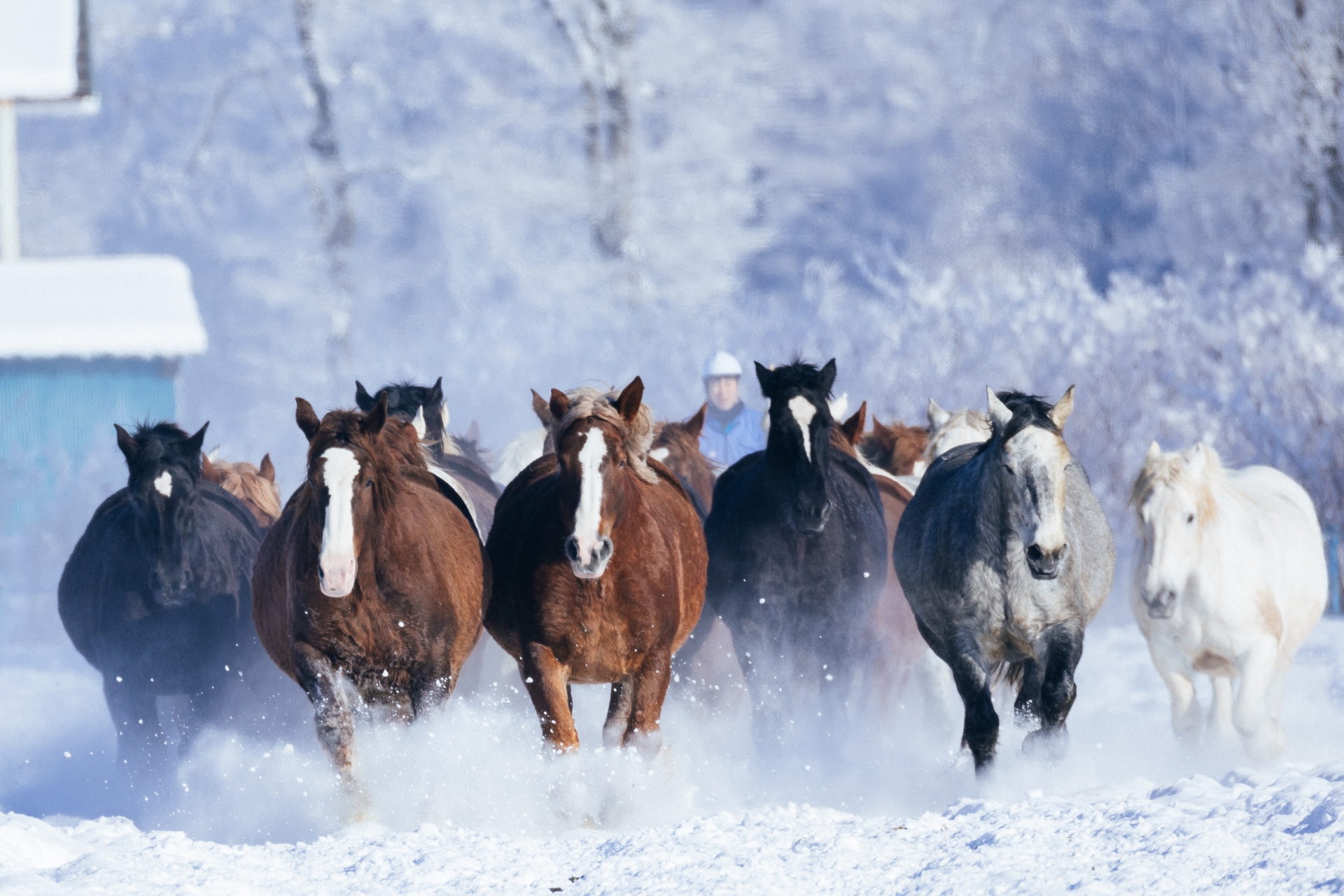
Misty Fujii is a Canadian who moved to Osaka, Japan, in 2019 and married her Japanese sweetheart. In 2022, they had a baby and moved to Fukui for the clean country air. She is a DJ who teaches English part-time and writes to share Japan with the world. She gets excited about collecting vintage vinyl records, food from all countries, travelling, and renovating her traditional Japanese house.
This post may contain some affiliate links. When you click through and make a purchase we may receive some commission, at no extra cost to you.
Believe it or not, Japan isn’t all neon lights and busy cities. It is primarily idyllic countryside and nature with friendly locals, ancient traditions , and breathtaking landscapes. We’ve explored the snow-capped mountains and lush valleys to tranquil coastlines and cascading rice paddies in search of the best prefectures to offer a unique glimpse into the soul of rural Japan.
Whether you crave the serenity of a hidden onsen nestled amidst the forest or want to witness the vibrant colors in a charming village , check out the 10 best prefectures to see the Japan countryside and take a trip off the beaten path.
1. Kumamoto
2. kagoshima , 3. tochigi , 4. saitama , 6. shimane , 9. fukushima, 10. hokkaido, japan wonder travel tours , other articles you might be interested in.
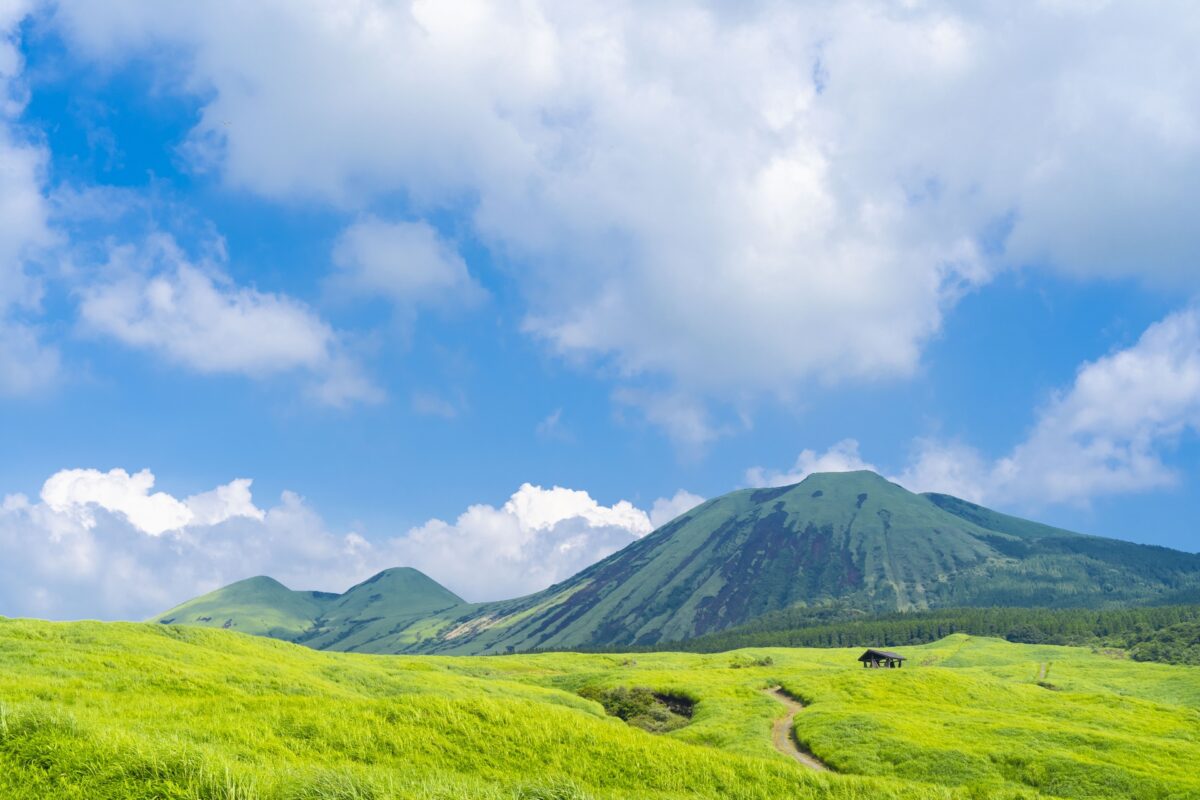
Kumamoto promises a countryside experience that’s both invigorating and soul-soothing. This prefecture in Kyushu is known for its volcanic mountains, charming villages, and a slower pace of life. But it’s not just about the serene beauty! It’s about the thrill of hiking the slopes of Mount Aso , one of the world’s largest active caldera, and peering into the steaming crater. It’s about the exhilaration of exploring the rolling grasslands of Minami Aso on horseback or wandering through emerald rice paddies. And it’s about the joy of meeting friendly locals and savoring a steaming bowl of freshly made udon noodles. In the evening, unwind in the luxurious hot springs of Kurokawa Onsen , soaking in steaming pools surrounded by idyllic forests for the perfect ending to a day of adventure.
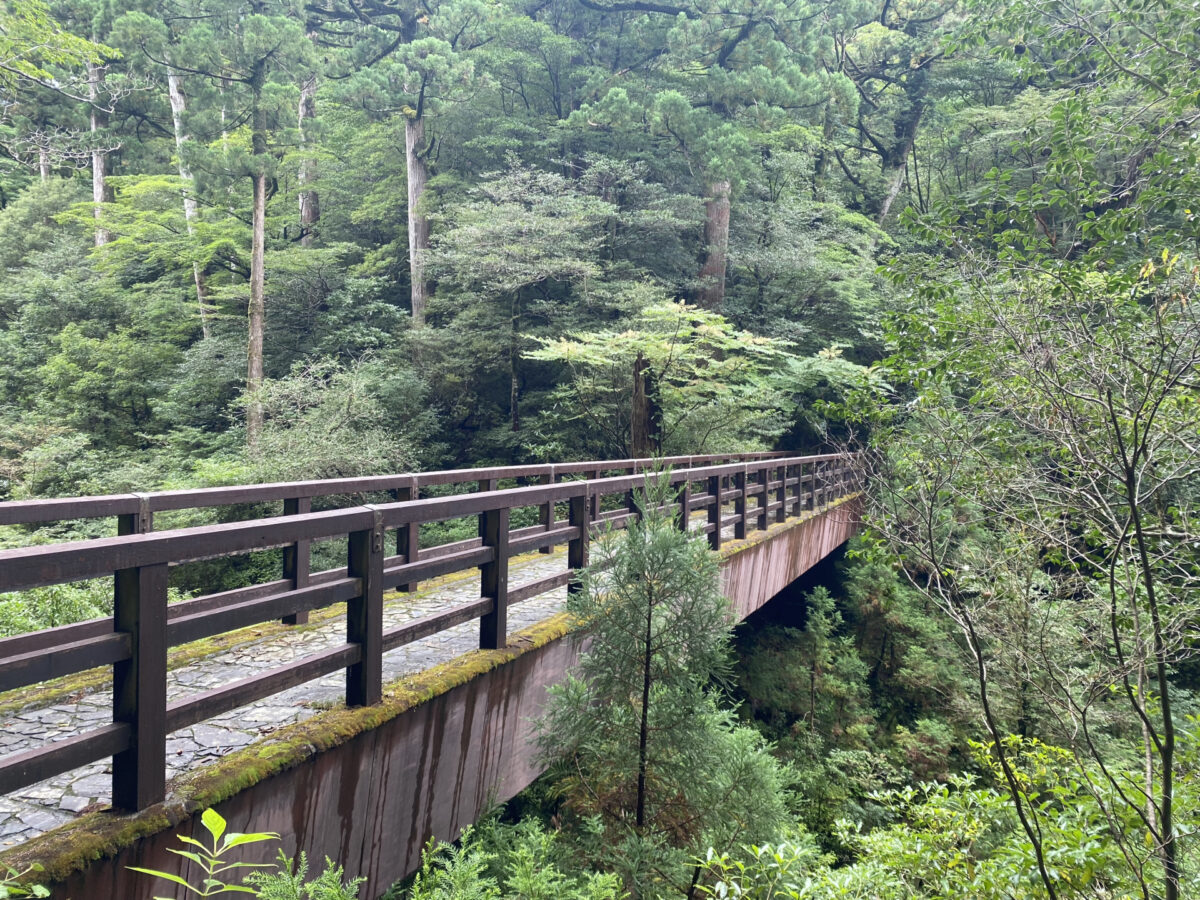
Kagoshima, a beautiful and often overlooked prefecture on Kyushu , is dominated by the fiery Sakurajima volcano . Venture deeper and discover Yakushima , a mystical island shrouded in ancient cedars and moss-covered trails, a UNESCO World Heritage Site often dubbed ‘Yakushima, a place where nature reigns supreme.’ But Kagoshima’s magic extends far beyond these iconic landmarks. You can island-hop through the Satsunan Islands, where pristine beaches meet crystal-clear waters and traditional villages offer a glimpse into a slower pace of life. Or hike through lush forests, soak in thermal baths warmed by volcanic activity, and savor the freshest seafood hauled straight from the sea.
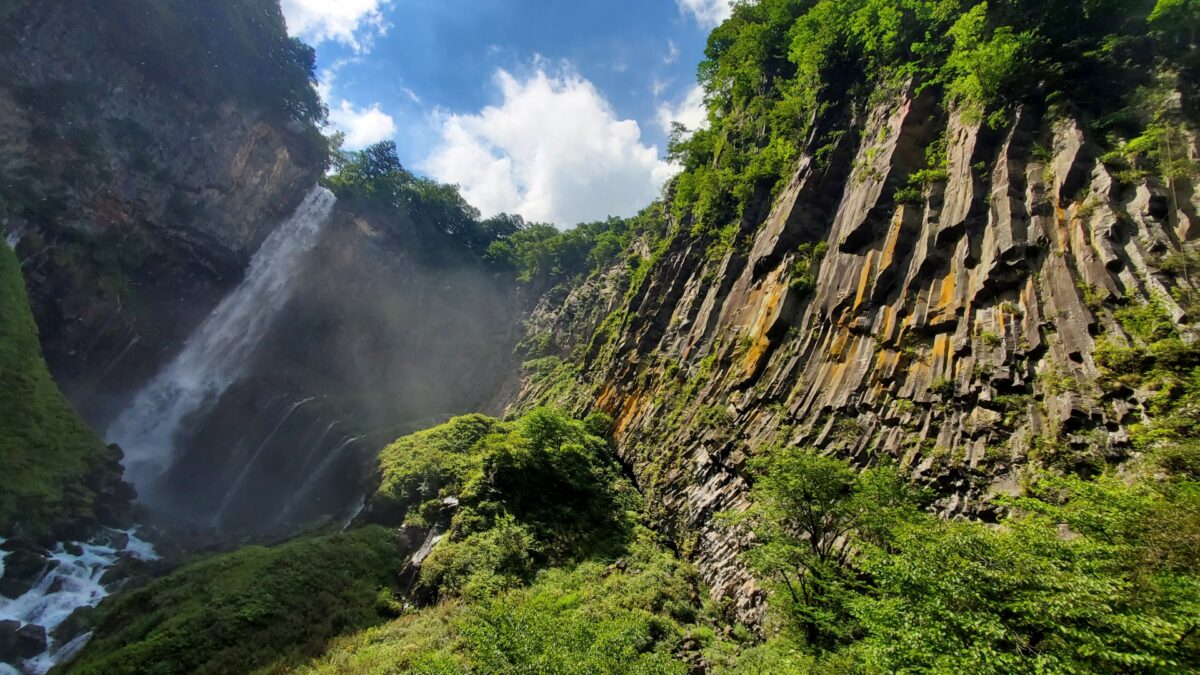
Head just north of Tokyo to find lush valleys, majestic mountains, charming villages, and cascading waterfalls . Fill your lungs with crisp mountain air as you wander the serene shores of Lake Chuzenji near Nikko, a UNESCO World Heritage Site . Here, ornate shrines and temples enchant with tales of a bygone era. Ashikaga, a town steeped in history, beckons with charming streets waiting to be explored. Here, time seems to slow down, inviting you to lose yourself in the tranquility of traditional Japanese architecture. Come spring, the town transforms into a kaleidoscope of color with the Ashikaga Flower Park exploding in a vibrant display of blooms. Tochigi boasts another delightful surprise – its world-famous strawberries! These plump, juicy gems burst with a flavor so intense they’ll become the sweetest souvenir of your countryside adventure.

When you want to experience the Japanese countryside but are short on time, look no further than Saitama , next to Tokyo. Here, rolling green hills and charming villages offer a tranquil escape from the city’s chaos. This is where you can immerse yourself in the serene beauty of Chichibu , a mountainous region dotted with mystical temples and natural wonders. If you like exploring, hike through ancient forests and lose yourself in the stillness of a hidden hot spring. Saitama also boasts the unique Bonsai Village, where generations of artisans have perfected the art of cultivating miniature masterpieces . For a touch of adventure, head to Nagatoro, where you can take an exhilarating ride down a rapid river on a traditional wooden boat. But when you need a break from it all, Saitama is the perfect place to find peace and tranquility.
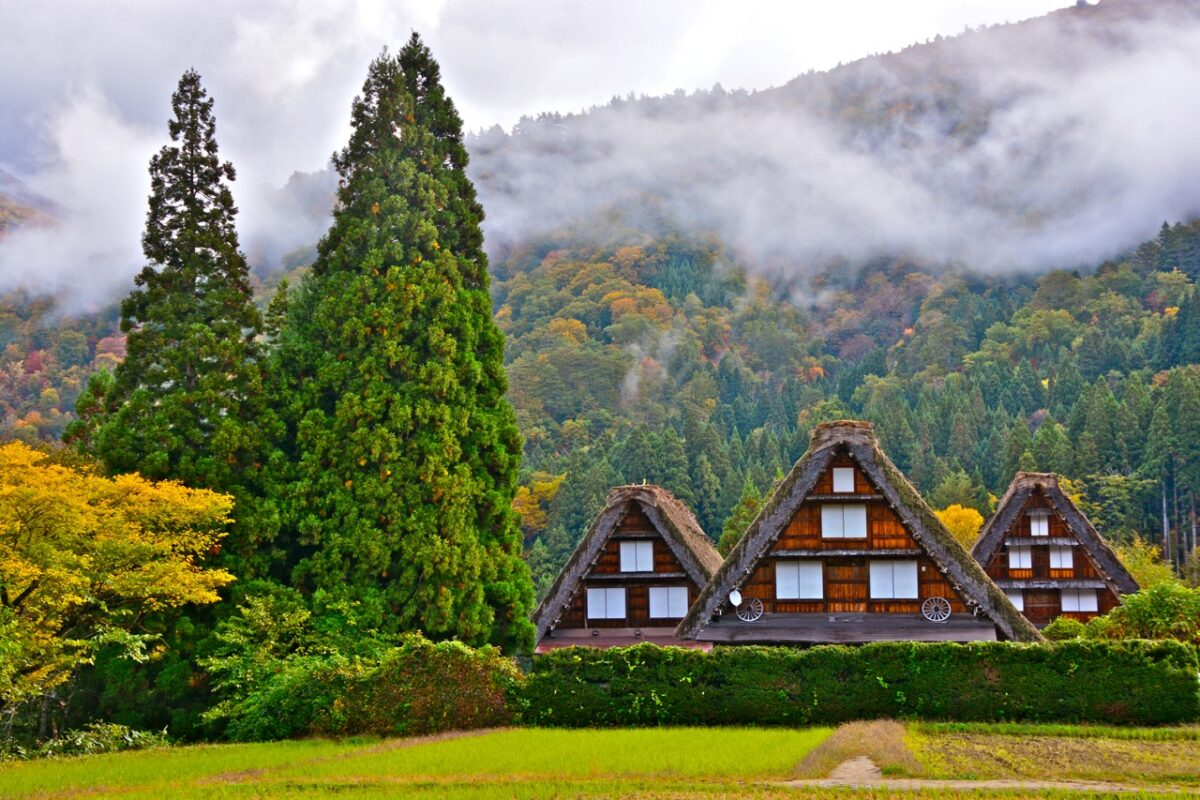
Gifu sits in the heart of Japan’s Japanese Alps. It offers a captivating escape to tranquil villages, dramatic landscapes, and centuries-old traditions. But it’s not all picturesque villages and snow-capped mountains, there’s the must-visit village Shirakawa-go , a UNESCO World Heritage Site famed for its iconic gassho-zukuri farmhouses. You’ll feel like you stepped into a postcard when you see the farmhouses’ distinctive thatched roofs against the backdrop of snow-capped mountains. Then, dive even deeper at Hida no Sato. In this open-air museum, these architectural wonders are more than just photo ops. Explore the beautifully preserved post town of Magome-juku, where charming wooden buildings line the ancient road, each whispering tales of past journeys. And make sure to put on your walking shoes to walk in the footsteps of samurai along the Nakasendo Way. This historic highway lets you retrace the steps of Japan’s ancient history!
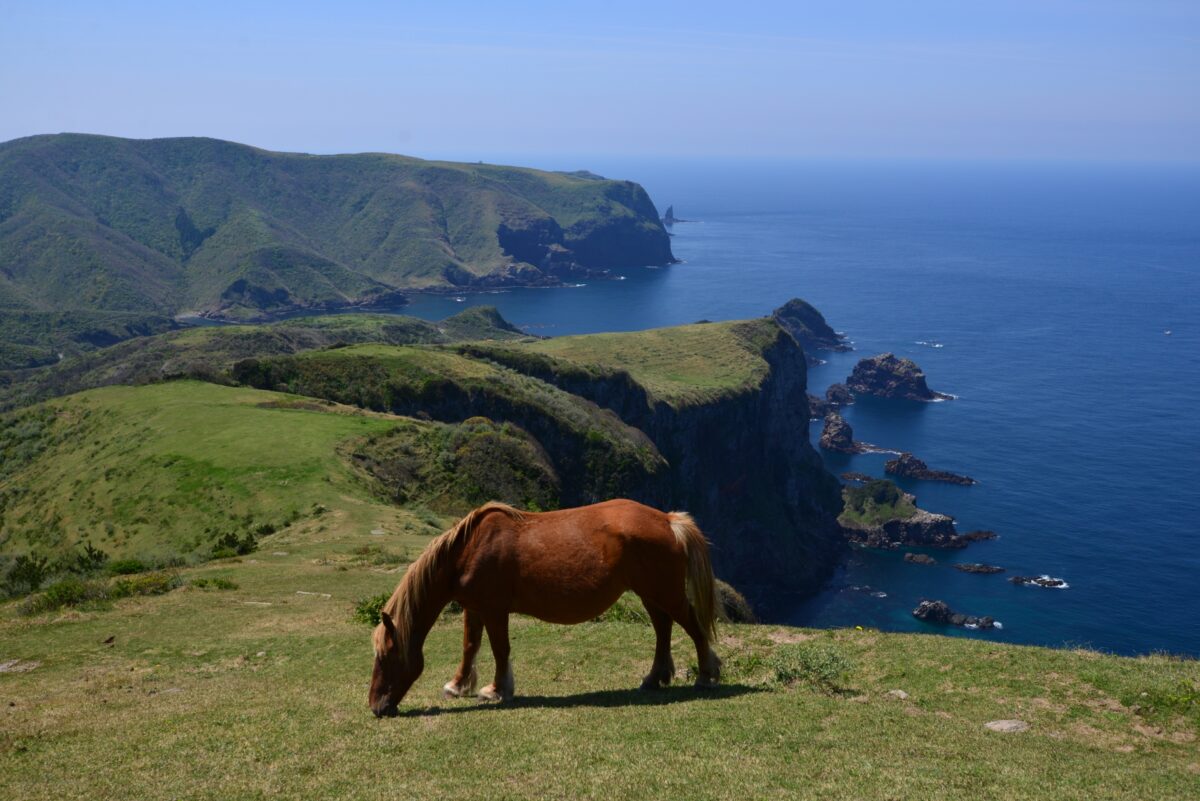
Well off the beaten path (and hometown to one of my favorite rock n’ roll bands, Guitar Wolf !) is Shimane , nestled on the coast of Honshu. This stunning coastal prefecture is where you can kayak through the crystal-clear waters of the Oki Islands, a remote archipelago full of marine life and mystical legends. And when you want to hit the town, Tsuwano appears frozen in time. Wander along the traditional wooden streets lined with beautifully preserved merchant houses and soak up the local atmosphere at a bustling morning market overflowing with fresh produce and handcrafted goods. Then, to truly unwind after your explorations, head to Yunotsu Onsen, a hot spring haven nestled amidst idyllic countryside. Bathe in the mineral-rich waters, renowned for their therapeutic qualities, and let the stress melt away as you savor the serenity of the Japanese countryside.
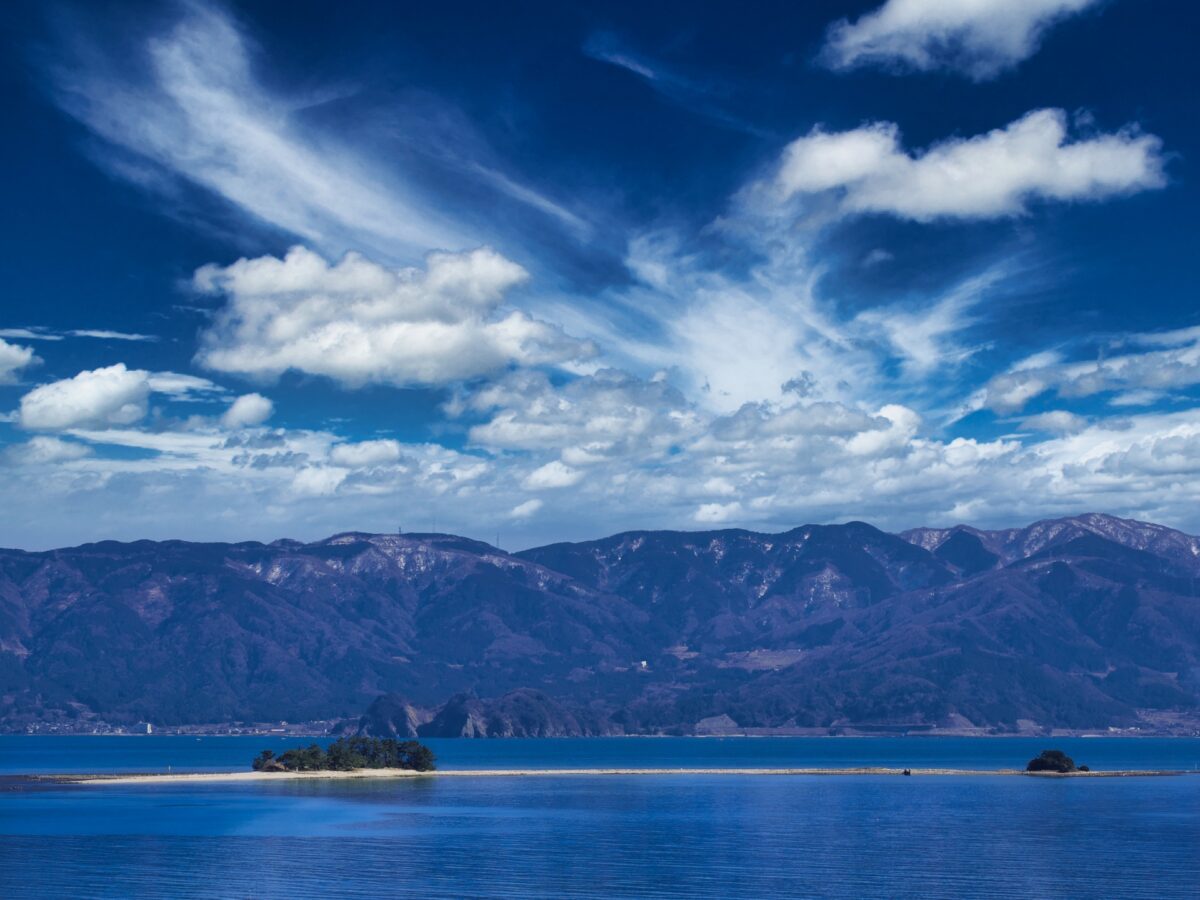
I may be slightly biased, but Fukui is my top pick for beautiful countryside prefectures. It has a few of my favorite things: mountains, the sea, and pristine beaches . The dramatic coastline explodes with natural wonders like the Tojinbo Cliffs, sculpted by millions of years of crashing waves, creating a scene that’s both awe-inspiring and photogenic. Wakasa Bay, a haven of pristine white sand beaches lapped by crystal-clear waters, is home to beaches dubbed “The Hawaii of Japan” thanks to its beauty. And for the adventurous souls, the mystical Kuzuryu Valley, or “Nine Dragon Gorge,” awaits. Hike through this dramatic landscape, carved by the mighty Kuzuryu River, and witness towering cliffs, cascading waterfalls, and an emerald embrace that will leave you breathless. Last but not least, when you’re on a path to find zen, you’ll find it amidst the ancient halls of Eiheiji Temple, a majestic Buddhist complex nestled amidst the tranquil mountains.
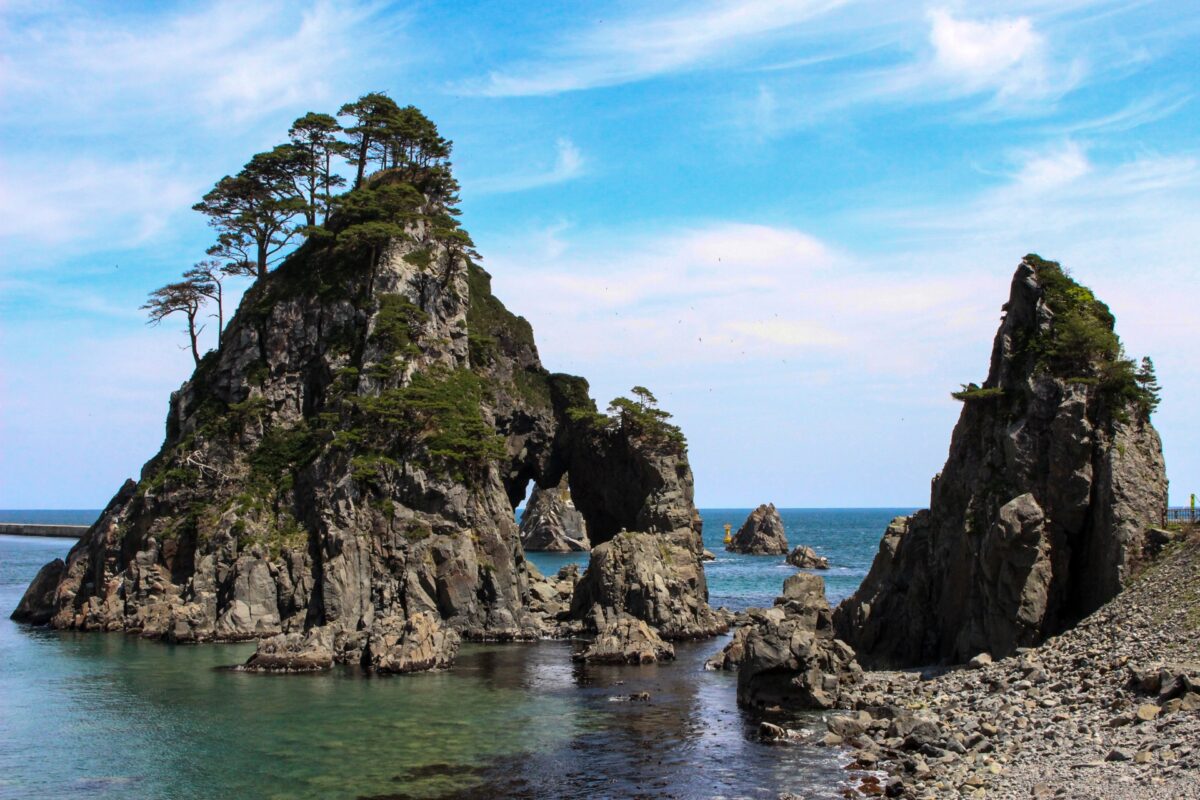
Heading north to Iwate , you’ll find rugged coastlines that reveal hidden coves like the mystical Jodohagama Beach. This beach is only accessible by a scenic boat ride, talk about private! It boasts volcanic rock formations jutting from the turquoise water, creating a scene from a fantasy novel. Still, Iwate’s beauty extends beyond the shoreline. Delve into the green heart of the region and discover the legendary “Miracle Pine.” This ancient tree defies gravity and has withstood centuries of harsh winds and storms, a testament to the resilience of nature ! For a truly immersive experience, take a boat ride down the Geibikei Gorge. Lush greenery drapes the cliffs while emerald waters rush through the narrow passage. You can take a traditional flat-bottomed boat for a thrilling ride down the river. As you navigate the rapids and admire the towering cliffs, soak in the raw beauty of this little-known prefecture.
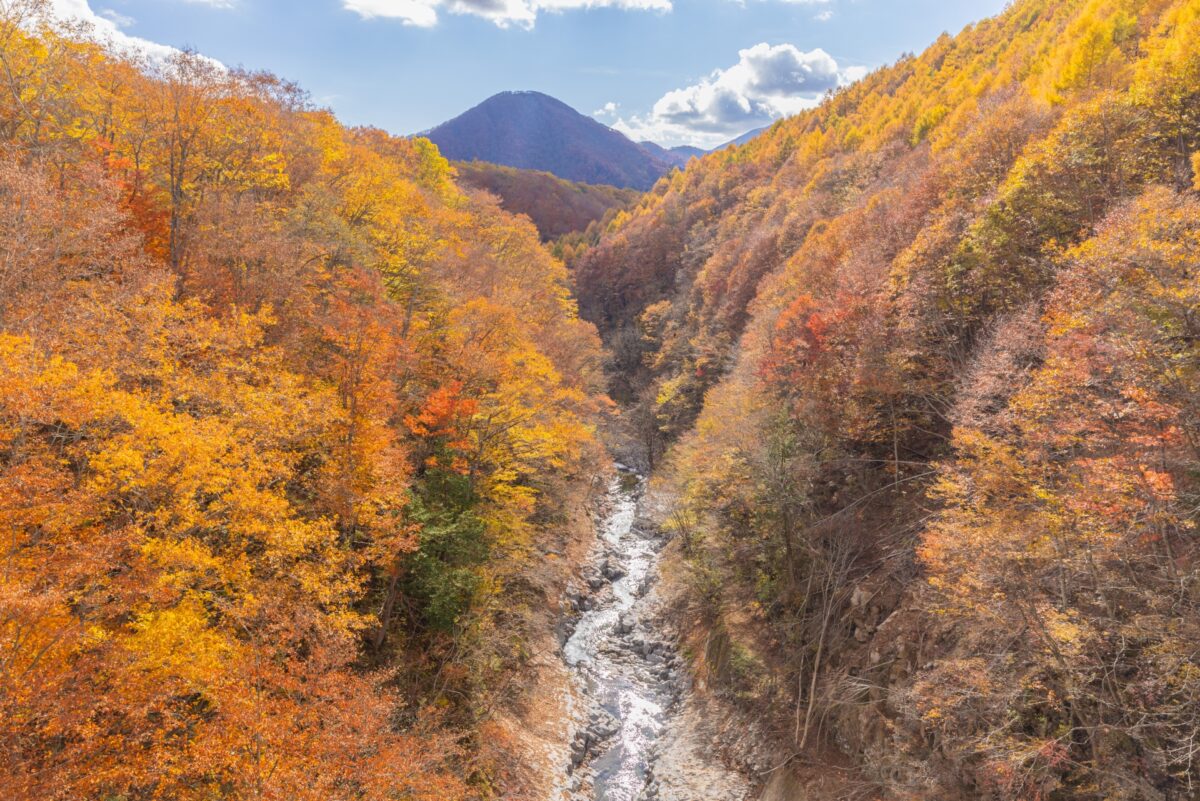
No longer a hot spot for dark tourists, Fukushima is reminding the world that it is a stunningly beautiful and safe prefecture. Re-emerging from the 2011 Great East Japan Earthquake and tsunami disaster as a symbol of resilience and rejuvenation, Fukushima should be a must-visit for any nature lover. Snuggled among mountains and tranquil valleys, Fukushima has lots to offer. History and nature buffs will love the charming thatched-roof farmhouses of Ouchi-juku, a cluster seemingly frozen in time. Then, there’s the breathtaking natural beauty of Urabandai National Park, where volcanic landscapes and crystal-clear lakes steal your breath away. For ultimate relaxation, delve into the therapeutic hot springs of Takayu Onsen, where steaming mineral pools soothe your body and soul. And if you want a personal guide to take you from Tokyo to Fukushima, look no further than Japan Wonder Travel Tours – your gateway to an unforgettable journey through the heart of Fukushima !
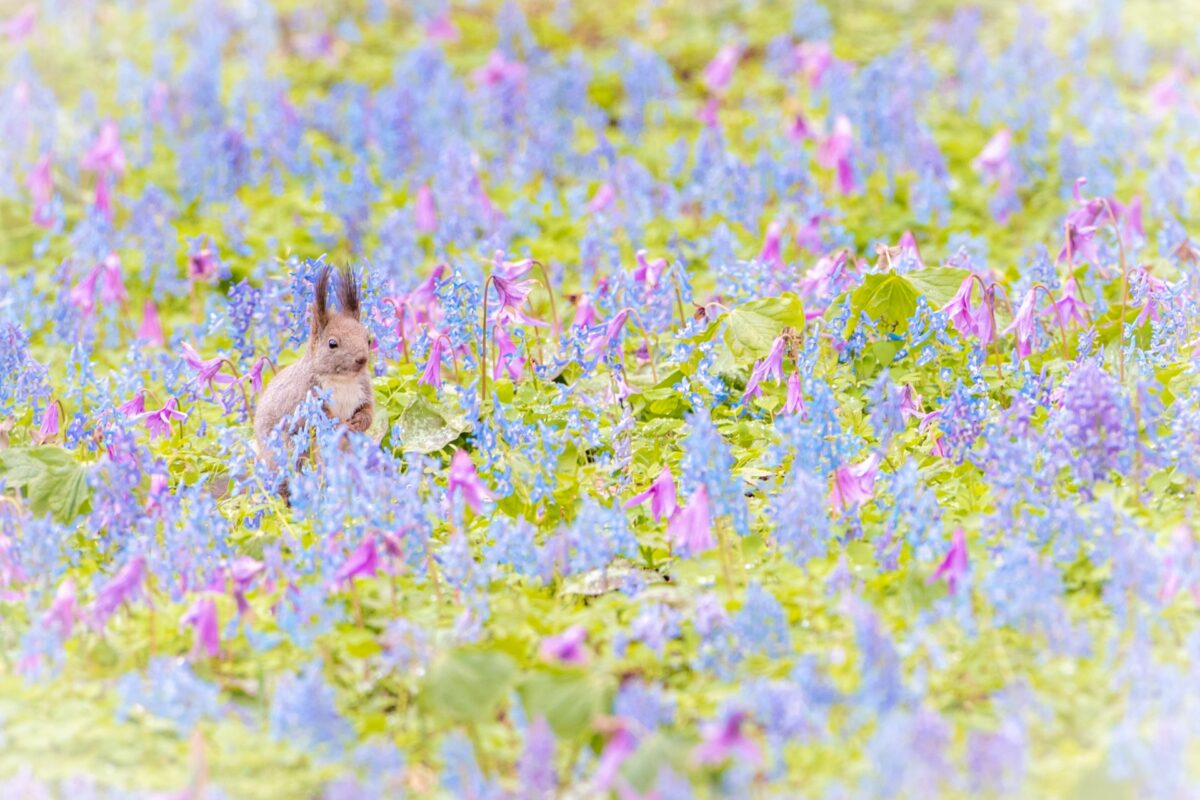
There’s a reason Hokkaido has been voted the most attractive prefecture for 15 years running! Japan’s most northern prefecture calls for an itinerary of its own , thanks to incredible, untouched nature everywhere. Hike through the volcanic landscapes of Shiretoko National Park, a UNESCO World Heritage Site, where pristine forests meet the icy Sea of Japan. In Daisetsuzan National Park, Japan’s biggest, conquer majestic mountains or soak in the natural beauty of emerald lakes and vibrant flower fields. Witness the majestic red-crowned cranes at Kushiro-Shitsugen National Park, a vast wetland teeming with life. Needless to say, Hokkaido has amazing national parks ! And finally, for a touch of relaxation, unwind in the natural hot springs of Jozankei, nestled amidst a scenic valley. Picture yourself soaking in steaming pools surrounded by snow-capped peaks – pure bliss!
Japan Wonder Travel is a travel agency that offers guided tours throughout Japan. From private walking tours to delicious Food and Drink tours, we can help you organize the best tours just for you! If you want to explore Japan and learn more about the history and backstories of each area you are visiting, our knowledgeable and friendly English speaking guides will happily take you to the best spots! In addition, we can provide you with any assistance you may need for your upcoming trip to Japan, so please feel free to contact us if yu have any questions or need some help!
▶ Tokyo Tsukiji Fish Market Food and Drink Tour Explore the most lively and popular fish market in Tokyo and try some of the local’s favorite street foods and sake with one of our friendly and knowledgeable English speaking guides!

▶ Tokyo 1–Day Highlights Private Walking Tour (8 Hours) There’s no better way to explore an area than taking a tour with a knowledgeable local guide. You will have the chance to learn about the history and interesting background stories of Tokyo, as well as discover some hidden gems which can be hard to do without a guide.

▶ Mt. Fuji Day Trip Bus Tour from Tokyo Experience the breathtaking views of Mt. Fuji by visiting the highlights of the area on our guided sightseeing bus tour! Departing from Shinjuku in central Tokyo, you can travel comfortably to all of the best spots in the area by bus.

Follow us on Instagram , Facebook , Twitter , and TikTok for more travel inspiration. Or tag us to get featured!
Happy traveling!
Subscribe to our newsletter!
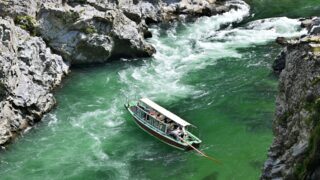
- Popular destinations
- Hidden places in Japan
- Tours and workshop
- Food and drink in Japan
- Itinerary in Japan
- Places to visit in Tokyo
- Food and drink in Tokyo
- Seasonal events
- Tours & workshops
- Tokyo This Week
- Day trip from Tokyo
- Itinerary in Tokyo
- Places to visit in Kyoto
- Food and drink in Kyoto
- Itinerary in Kyoto
- Day trip from Kyoto
- Travel tips
- Accommodation
- Cultural tips
- Transportation
- Tokyo Tours
- Kyoto Tours
- Kimono Rental
- Fukushima Tours
- Mount Fuji Tours
- Tour Package
- Travel Concierge Service
- Media Kit(English/日本語)
Japan Countryside - Why Visit It And What To Expect

Table of Contents
Why should you visit the countryside of japan.
I am sure that most of you who are reading this will agree that Japan is one of the best places in the world. And one special part of the country where you can have a peaceful living is the Japan countryside . If you’re curious about how it feels to live there, you’re in the right place. I will tell you all you need to know about the countryside of Japan.
There are many advantages of staying in Japan’s countryside. One of them is that you can feel and appreciate the beauty of nature first hand. Around you there will often be tall mountains, green valleys, deep forests, and clear rivers. It can feel like a land of magic. If you’re a nature lover you will enjoy it there a lot. Since most of you will not live there. I suggest you at least experience the thrill of Japan countryside travel.
It is the best way to take a break from your stressful world. You can be amazed by the beautiful rural scenery around you. It depends on where you stay, but the Japanese countryside will give you relaxing and gorgeous surroundings that will make you feel refreshed.
If you want to experience fresh air, see the forest, the countryside can be the best place for you. You will get closer to nature so that you can experience a fresh mind and body. I also assure you that it will be a peaceful, quiet, and refreshing environment. If you’re tired of the noise of cars or the crowd, the countryside is the best option .
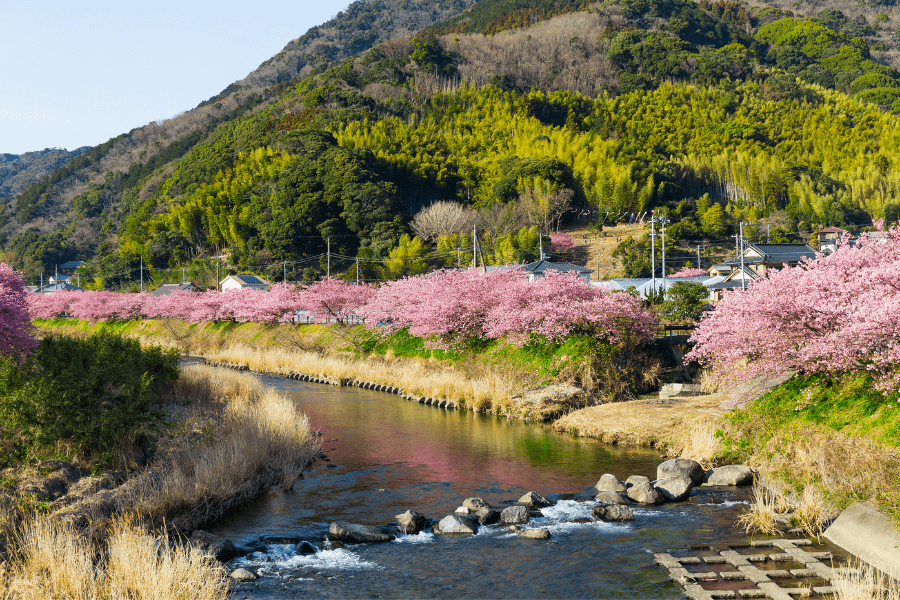
Life in rural Japan
Life in rural Japan is different from living in the city. So, you may experience an additional minor culture shock. I advise you to be prepared for it. Living in Japan for the first time requires patience no matter where you live, but especially in the countryside. You should tackle one challenge at a time. Even if you are only on a Japan countryside vacation , it can be challenging for you to adapt to the culture and lifestyle of the place. But don’t worry since you can get used to it over time.
As you live in rural Japan, expect quiet streets and beautiful scenery. It is also essential to learn the basic Japanese language. Thus, you will see many menus and signs in Japanese. Additionally, you will also encounter many people who speak Japanese only. You can expect communication to be more difficult than in the big cities. If you learn their language basics, you can be more comfortable in your rural Japanese life.
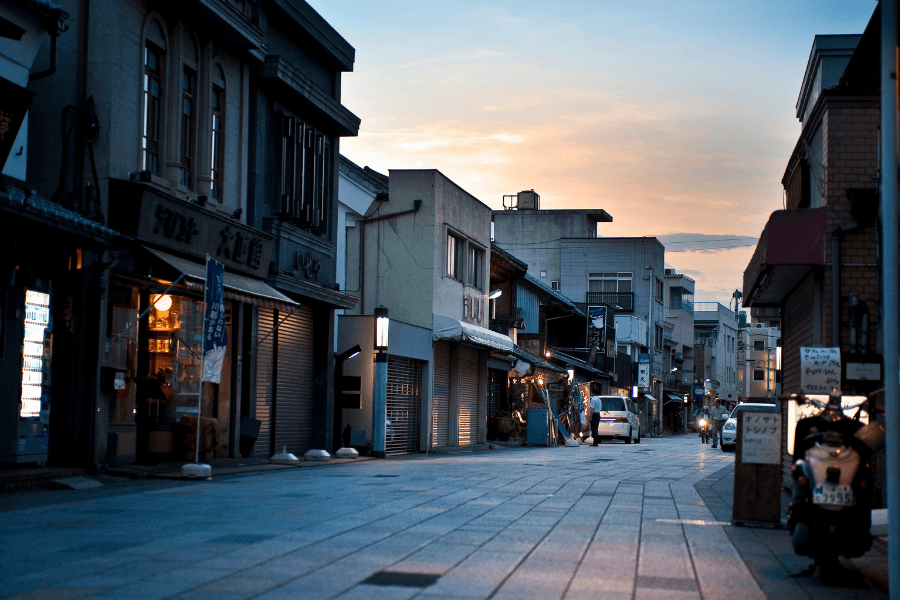
If you decide to move to rural Japan, you will also need housing and a job. You can apply for a job, so you can secure your housing in the countryside. If you’re a native English speaker, you can look for English teaching jobs. You can prefer ALTs or Assistant Language Teachers at schools in Japan’s rural areas.
Additionally, it is a good idea to consider driving in the countryside of Japan. Mostly, rural neighborhoods will not have as good public transport so you need to have a car to get around. With this, I suggest you get an international driver’s license before you go to Japan. It can expire after a year, so you can also get a Japanese driver’s license.
You can also enjoy a more convenient way of living in rural Japan with the help of the internet . Browse web-based doctors, translation apps, and websites like iHerb to ship your personal care products and favorite foods.
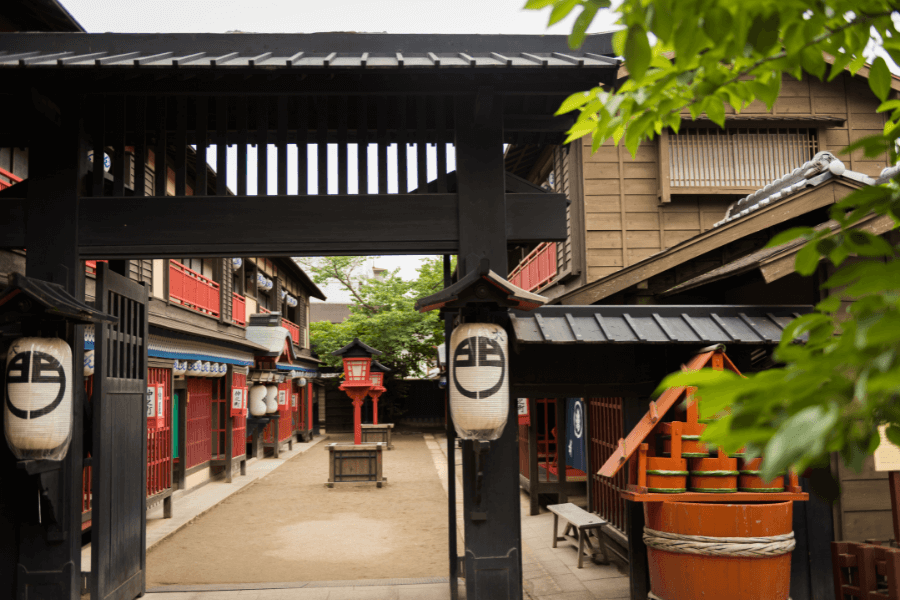
Cost of living in rural Japan
Compared to living in the city, the cost of living in rural Japan is lower . You can save more money for your rent, groceries, and other expenses as you live there. So, you can expect to enjoy a more convenient and satisfying life without spending much of your hard-earned budget.
With the more affordable cost of living, you can have a good quality of life and afford more luxuries while living in rural Japan. There’s no loud noise, pollution, and traffic in the countryside so that you can have a more comfortable life on a budget .
You’re free to enjoy your favorite foods and buy your daily basic needs without breaking the bank. It is also an advantage if you have a job for your housing and daily expenses. Do you wish to live a quality life at a lower cost? Then, it is a good decision to live in rural Japan.
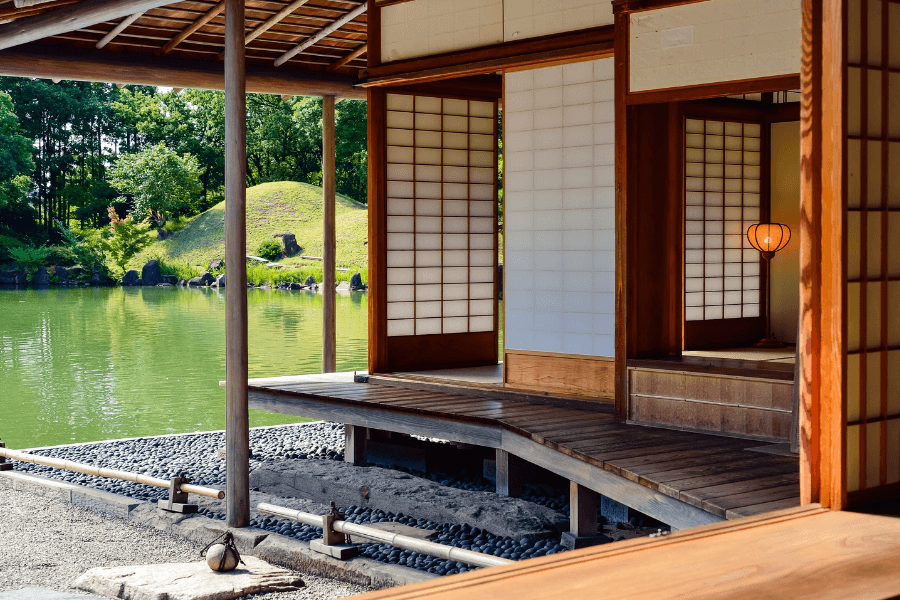
Japan countryside tourism
Now that you have learned about the cost and life in Japan countryside, let us discuss Japan countryside tourism . Unlike regular tourist travel to big cities, traveling across the Japanese countryside comes at a lower cost. Unlike in the city, you will not suffer from the pollution, noise, and traffic during your Japanese countryside travel. It only means that you can have a more convenient and relaxing experience.
Japan’s countryside can offer you unique and memorable experiences. You can expect quiet surroundings that allow you to feel serenity, peace, and relaxation. These include hidden gems like shrines, temples, and my favorite, ryokans .
In the countryside in Japan, you can appreciate the beauty of nature, including the tall mountains, big forests, huge lakes, and other gorgeous scenery. You can also discover the history and traditions of Japan as you visit the place’s famous sites. In addition, people can see the real Japan with its natural tourist spots, great hospitality, and rich culture.
You can also expect excellent accommodation during your visit. The best about their accommodation is that you can get a quality and comfortable room at an affordable cost. You’re free to enjoy delicious cuisines and other nearby amenities without hassle. Or you can go with more expensive ryokan options that include traditional dinner and access to a hot spring. You will surely love this. I suggest you check out one such place called Shibu Onsen Kokuya .
Visiting the countryside is perfect for treating yourself. Vacation in rural Japan is a good investment to experience memorable, unique, and peaceful living. In the countryside, you can also have more free time to enjoy your hobbies and other activities you love. Meanwhile, you should know how to learn the basics of the Japanese language to make the best of your stay.
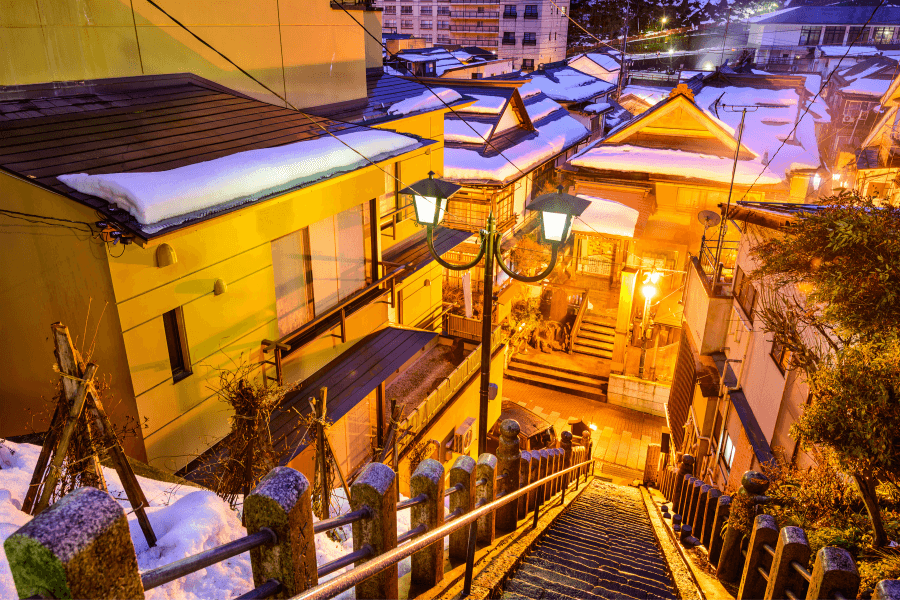
Countryside near Tokyo
As I mentioned earlier, living in the countryside can offer you a unique and more relaxing living. Tokyo is among the most popular places in Japan but it is also the biggest city and very crowded. Luckily there are several options for a rural experience near Tokyo.
Places in the Tokyo countryside might not be as rural and remote as ones in Nagano or Hokkaido, but they make up for it with their connectivity to the big city and ease of visit for tourists. Some of the countryside near Tokyo include Nikko, Kamakura, Hakone, Takayama, and more.
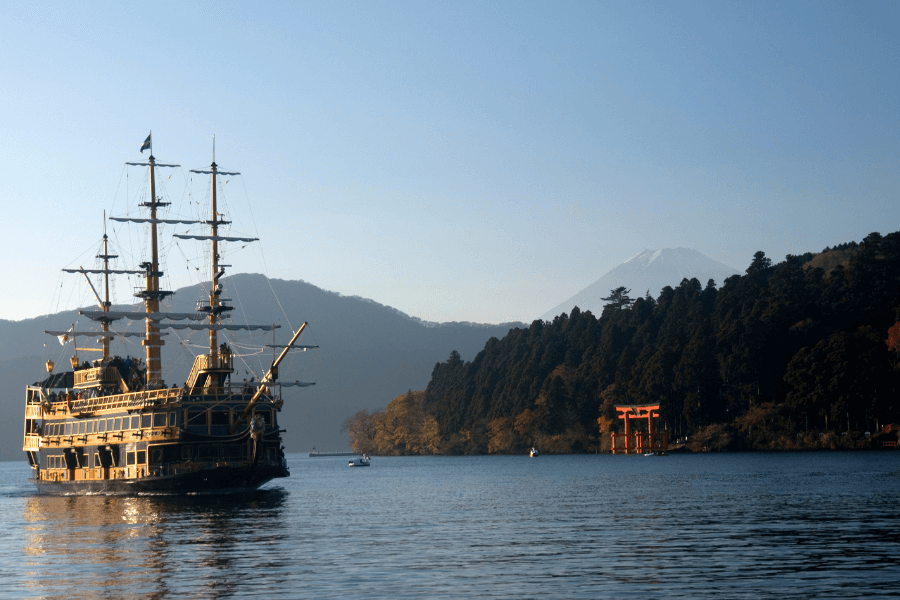
Conclusion
To sum it up, living in the countryside of Japan can provide you with a quality and more peaceful life. It allows you to experience a unique way of living away from the city’s noise, traffic, and busy life. Even more important, you can live a better quality of life without spending much of your money.
If you live in the countryside in Japan, or just visit, you can see the beauty of nature. You can also discover their culture and meet new friends. It can be challenging to adjust to the culture of Japan at first, but I assure you that you can adapt to countryside living over time.
- Recent Posts
- Hiroshima Food Guide – 7 Things You Must Try - July 24, 2024
- Hiroshima Travel Guide and Tips - June 21, 2024
- Park Hotel Tokyo: A Blend of Art & Luxury - December 12, 2023
Leave a Reply Cancel reply
Your email address will not be published. Required fields are marked *


IMAGES
VIDEO
COMMENTS
Discover the country of Japan the way the locals do and see Japan from a different angle. A focus on getting away from the crowds and into the real Japan, see the diversity of Japan's countryside unfold before your eyes. Group Size: 20 to 45 people: 10 to 35 people: 6 to 24 people: 4 to 16 people: 4 to 13 people: Fully-escorted
Day 1: Arrive in Kyoto, Japan. Day 2: Unique Highlights of Kyoto (On & Off The Beaten Path) Day 3: Fushimi Inari Shrine & Luxurious Ryokan Stay in Kurashiki. Day 4: Private Tour of Historic Kurashiki. Day 5: Visit Naoshima, Japan's Wonderful Art Island. Day 6: Teshima Island & the Teshima Art Museum. Day 7: Travel to the Remote Ise Shima ...
A two-day trip in the countryside. I will pick you up from your hotel in Tokyo and drive you through the futuristic expressways taking you deep into the mountains to a Japan where time has stopped thousands of years ago.The green forest surround the ancient temples and shrines, 1300 years old, covered in moss. ¥85000- for two days.
One of Japan's most iconic countryside views has to be its rice fields. Rice farming is still a part of the fabric of Japan, producing roughly 7.45 million metric tons in 2022 alone. Traditional techniques are still used in many areas across the country, but one of the most beautiful examples has to be in Ishikawa.
This 3 week, comprehensive guided tour will take you on a journey through a Japan of contrasts, both historical and rural. After Tokyo, Kyoto, Mount Fuji and Koyasan, take a boat trip to discover the Japanese countryside on Kyushu. Finish off with the sacred island of Miyajima. Small group of 8 people, accompanied by an English-speaking guide and specialist. An unforgettable trip.
While major cities like Tokyo, Kyoto, and Osaka are world-famous Japanese tourist destinations, if you're seeking a little more tranquility on your travels, you might be better suited journeying to one of Japan's countryside villages. Steeped in history and culture and often set amongst breathtaking natural scenery, Japan's most beautiful villages are a haven for those desiring a break from ...
The countryside of Japan is a testament to the country's incredible geographical diversity and its profound respect for nature. Diverse Landscapes: From the snow-capped mountains of Hokkaido to the lush forests of Kyushu, the natural beauty of rural Japan is both varied and mesmerizing. Places like the Japanese Alps offer breathtaking vistas, while the terraced rice fields in areas like ...
Treat them simply as inspiration, because your trip will be created individually by one of our specialists to match your tastes and budget. Day 1- Welcome to Osaka. Day 2- Kameoka - Home Stay. Day 3- Explore Rural Japan. Day 4- Arashiyama. Day 5- Private Local Guide in Kyoto. Day 6- Day Trip to Nara. Day 7- Kyoto - Tour Ends.
Looking to travel Japan on a countryside and village visits tour? We offer 5+ countryside and village visits tours through-out Japan, backed by many reviews and offering discounts up to 20%. All our trips are offered by expert trip designers and Japan destination experts, with trip durations ranging from 11 to 24 days. ...
Leave Japan's hypermodern cities and dazzling technology behind with this 10-day luxury trip through unspoiled countryside and historic small towns. Start with a Michelin-starred meal in Tokyo, then you're off to Kobuchisawacho for yoga, hiking, and an organic farm visit. See the tea houses of Fujimori Terunobu in Suwa, sample saké in Edo-era Narai, and trek the ancient forests of the ...
When it comes to traveling in the countryside, your best option in the area is the town of Yudanaka (湯田中). A small town north of Nagano that is famous for bathing snow monkeys and onsen. In the same direction, you also have the Gunma prefecture which too has a famous onsen resort, especially during summer.
We offer unique countryside tours in the less traveled areas of Hida Takayama, such as cycling, walking and sake tours for travelers who want to do off the beaten path experience. Our flagship Maze E-Bike Tour won the Tripadvisor Travelers' Choice Awards in 2019. As a company, we were awarded the Travel & Hospitality Awards for the second ...
Day 1: Arrive in Tokyo, Japan. Day 2: Markets and Cuisine, Neighborhood Strolls, and Izakaya Outing. Day 3: Old-Fashioned Tokyo Backstreets, Ramen Lunch, and High-End Sushi Reservations. Day 4: Off-the-Beaten-Path Cycling Tour, and Final Evening in Tokyo. Day 5: Tradition and Luxury in the Japanese Countryside*.
The 2024 & 2025 Remote Japan Tours will let you discover Japan's hidden rituals, unspoiled spectacular scenery and delightful local people. Japan is so much more than Tokyo, Kyoto, Takayama and Hiroshima. There are so many hidden gems and unexplored destinations in Japan's countryside. Rural travel in Japan is expected to be even more ...
Farm stays, a samurai district, and over 10,000 wintering cranes in Izumi, Kagoshima. Forged from silver and community spirit-explore an area of history, tradition, and modern living in Shimane, Japan. Learn a 400-year-old local craft, ride open-air through the countryside, and share daily life with locals in Odate, Akita.
Small group, countryside tours of Japan. Small-Group, Off-the-Beaten Path. Tours of Japan. ENTER. Much of Japan's countryside has atmospheric onsen ryokans. Rustic Japanese countryside is what we would like to present you with.
This small-group tour takes you away from the hustle and bustle of the city and into the surrounding countryside for a glimpse of an almost forgotten rural Japan. You'll see mountains, waterfalls, temples, and shrines that are far off the typical tourist trail. Discover rural Japan on a day trip from Tokyo. Swap the city' hustle and bustle of ...
Japan Cities & Countryside Tour: Tokyo, Kanazawa & Kyoto - 7 Days. This scenic trip through Japan starts with the urban vibes of Tokyo, where you'll visit the ultramodern Odaiba district and relax in the peaceful gardens of the Meiji Jingu shrine. Then, you're off to historic Kanazawa for the quiet pathways of Kenroku-en Garden and a visit to ...
Enjoy lunch on the summit of the mountains. Visit the temple of Sandals and end the day walking through Old Edo, Tokyo, Kawagoe. ¥40,000 person, lunch included. *The guide can only pick you up from the area in Tokyo. Narita airport is not Tokyo, so the guide cannot pick you up from there. If you have any questions, please contact +81 90 9829 3058.
2. FUJI FIVE LAKES. A short journey from central Tokyo brings you to Fuji Five Lakes, a majestic countryside destination. With its stunning views of the famous Mount Fuji, tranquil crystal-clear lakes, and photogenic scenery, visitors look to here for a relaxing escape from the urban bustle.
Cook up some delicious tanpo! (Photo: Countryside Stays Japan) Farm Inn Sakekoshimai, located in Odate City, Akita Prefecture, is a welcoming, family-centered inn that offers insights into the local culture. The traditional building, complete with tatami mats for sleeping, makes travelers feel as if they have stepped into the past.
Fukushima. 10. Hokkaido. Japan Wonder Travel Tours. Other Articles You Might Be Interested In. 1. Kumamoto. Kumamoto promises a countryside experience that's both invigorating and soul-soothing. This prefecture in Kyushu is known for its volcanic mountains, charming villages, and a slower pace of life.
Now that you have learned about the cost and life in Japan countryside, let us discuss Japan countryside tourism. Unlike regular tourist travel to big cities, traveling across the Japanese countryside comes at a lower cost. Unlike in the city, you will not suffer from the pollution, noise, and traffic during your Japanese countryside travel.
I walked through abandoned Japanese house village in Kami-Ishida, Kofu City, Yamanashi Prefecture.#walk #japanesecountryside #4k